The History Book Club discussion

This topic is about
Doctor Zhivago
RUSSIA
>
DR ZHIVAGO - HF - GLOSSARY (SPOILER THREAD)
 Remember if citing books or authors; use the citation rules.
Remember if citing books or authors; use the citation rules.For any book aside from A Tale of Two Cities, you must cite the book cover, the author's photo and the author's link. Here is an example:
If you are just citing an author, you must add the author's photo if available and always the author's link.
Here is an example:
 by
by
 Boris Pasternak
Boris Pasternak
 Pasternak's Dr. Zhivago - the writing and publishing history:
Pasternak's Dr. Zhivago - the writing and publishing history: 
First Italian Edition
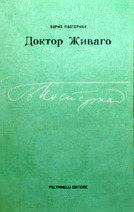
First Russian Edition
Doctor Zhivago is a 20th century novel by Boris Pasternak, first published in 1957 in Italy. The novel is named after its protagonist, Yuri Zhivago, a physician and poet. It tells the story of Zhivago's life and how it is affected by the Russian Revolution of 1917 and the subsequent Russian Civil War.
The book was made into a film by David Lean in 1965, and since then has twice been adapted for television, most recently as a miniseries for Russian TV in 2006
Although it contains passages written in the 1910s and 1920s, Doctor Zhivago was not completed until 1956. Pasternak submitted the novel to "Новый Мир" (Novy Mir), which rejected it for its implicit rejection of socialist realism.[31] The author, like his protagonist Yuri Zhivago, showed more concern for the welfare of individual characters than for the "progress" of society. Soviet censors also regarded some passages as anti-communist, especially the novel's criticisms of Stalinism and references to the gulag.
Soon after, Pasternak and Ivinskaya arranged for Doctor Zhivago to be smuggled abroad by Sir Isaiah Berlin. In 1957, multi-billionaire Italian publisher, Giangiacomo Feltrinelli announced that the novel would be released by his company. Despite repeated demands from visiting Soviet emissaries, Feltrinelli refused to cancel or delay publication.
Helped considerably by Soviet campaign against the novel, Doctor Zhivago became an instant sensation throughout the non-Communist world.
The character of Zhivago's mistress, Lara Antipova, has long been rumored to have been modeled on Ivinskaya.[32] However the elder of Pasternak's sisters stated that on a visit to her in Berlin in the late 1930s, Pasternak told her of the nascent character of Lara, years before he met Ivinskaya in 1946.
The first English translation of Doctor Zhivago was hastily produced by Max Hayward and Manya Harari in order to coincide with overwhelming public demand. It was released in August 1958, and remained the only edition available for more than fifty years.
Between 1958 and 1959, the English language edition spent 26 weeks at the top of The New York Times' bestseller list. Although no Soviet critics had read the banned novel, the Union of Soviet Writers held a trial behind closed doors. Afterwards, they announced that Pasternak had been expelled from the Union. They further signed a petition to the Politburo, demanding that Pasternak be stripped of his Soviet citizenship and exiled to the West. This led to a humorous Russian saying, "I did not read Pasternak, but I condemn him".
http://en.wikipedia.org/wiki/Boris_Pa...
 Boris Leonidovich Pasternak [O.S. 29 January] 1890 – 30 May 1960) was a Russian language poet, novelist, and literary translator.
Boris Leonidovich Pasternak [O.S. 29 January] 1890 – 30 May 1960) was a Russian language poet, novelist, and literary translator. 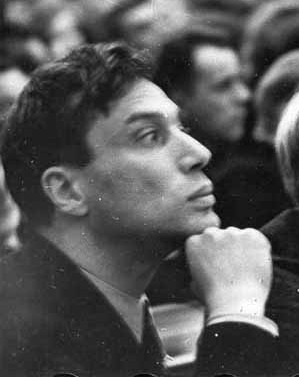
Pasternak at the first Congress of the Soviet Union of Writers in 1934.
In his native Russia, Pasternak's anthology My Sister, Life, is one of the most influential collections ever published in the Russian language. Furthermore, Pasternak's theatrical translations of Goethe, Schiller, Pedro Calderón de la Barca, andWilliam Shakespeare remain deeply popular with Russian audiences.
Outside Russia, Pasternak is best known for authoring Doctor Zhivago, a novel which spans the last years of Czarist Russia and the earliest days of the Soviet Union. Banned in the USSR, Doctor Zhivago was smuggled to Milan and published in 1957. Pasternak was awarded the Nobel Prize for Literature the following year, an event which both humiliated and enraged the Communist Party of the Soviet Union. In the midst of a massive campaign against him by both the KGB[citation needed] and the Union of Soviet Writers, Pasternak reluctantly agreed to decline the Prize. In his resignation letter to the Nobel Committee, Pasternak stated the reaction of the Soviet State was the only reason for his decision.
By the time of his death from lung cancer in 1960, the campaign against Pasternak had severely damaged the international credibility of the U.S.S.R. He remains a major figure in Russian literature to this day. Furthermore, tactics pioneered by Pasternak were later continued, expanded, and refined by Aleksandr Solzhenitsyn and other Soviet dissidents.
Pasternak and Tolstoy -
Shortly before his birth, Pasternak's parents had left the Orthodox Church for Tolstoyan Christianity. Leo Tolstoy was not only a close family friend. Pasternak later recalled, "my father illustrated his books, went to see him, revered him, and ...the whole house was imbued with his spirit."[2]
In a 1956 essay, Pasternak recalled his father feverishly compiling illustrations for Tolstoy's novel Resurrection.[3] The novel was then serialized in the journal Niva by the publisher Fyodor Marx, based in St Petersburg. The sketches were drawn from observations in such places as courtrooms, prisons and on trains, in spirit of realism. To ensure that the sketches met the journal deadline train conductors were enlisted to personally collect the illustrations. Pasternak wrote, "My childish imagination was struck by the sight of a train conductor in his formal railway uniform, standing waiting at the door of the kitchen as if he were standing on a railway platform at the door of a compartment that was just about to leave the station. Joiner's glue was boiling on the stove. The illustrations were hurriedly wiped dry, fixed, glued on pieces of cardboard, rolled up, tied up. The parcels, once ready, were sealed up with sealing wax and handed to the conductor."[3]
According to Max Hayward, "In November 1910, when Tolstoy fled from his home and died in the stationmaster's house at Astapovo, Leonid Pasternak was informed by telegram and he went there immediately, taking his son Boris with him, and made a drawing of Tolstoy on his deathbed."[4]
More at:
http://en.wikipedia.org/wiki/Boris_Pa...
 The Russian Revolution
The Russian Revolution Bolshevik forces marching on Red Square.
Bolshevik forces marching on Red Square.The Russian Revolution is the collective term for a series of revolutions in Russia in 1917, which destroyed the Tsarist autocracy and led to the creation of the Soviet Union. The Tsar was deposed and replaced by a provisional government in the first revolution of February 1917 (March in theGregorian calendar; the older Julian calendar was in use in Russia at the time). In the second revolution, during October, the Provisional Government was removed and replaced with a Bolshevik(Communist) government.
The February Revolution (March 1917) was a revolution focused around Petrograd (now St. Petersburg). In the chaos, members of the Imperial parliament or Duma assumed control of the country, forming the Russian Provisional Government. The army leadership felt they did not have the means to suppress the revolution and Tsar Nicholas II of Russia, the last Tsar of Russia, abdicated. The Soviets (workers' councils), which were led by more radical socialist factions, initially permitted the Provisional Government to rule, but insisted on a prerogative to influence the government and control various militias. The February Revolution took place in the context of heavy military setbacks during the First World War, which left much of the army in a state of mutiny.
A period of dual power ensued, during which the Provisional Government held state power while the national network of Soviets, led by socialists, had the allegiance of the lower-class citizens and thepolitical left. During this chaotic period there were frequent mutinies and many strikes. When the Provisional Government chose to continue fighting the war with Germany, the Bolsheviks and other socialist factions campaigned for the abandonment of the war effort. The Bolsheviks formed workers militias under their control into the Red Guards (later the Red Army) over which they exerted substantial control.[1]
In the October Revolution (November in the Gregorian calendar), the Bolshevik party, led byVladimir Lenin, and the workers' Soviets, overthrew the Provisional Government in St Petersburg. The Bolsheviks appointed themselves as leaders of various government ministries and seized control of the countryside, establishing the Cheka to quash dissent. To end the war, the Bolshevik leadership signed the Treaty of Brest-Litovsk with Germany in March 1918.
Civil war erupted between the "Red" (Bolshevik), and "White" (anti-Bolshevik) factions, which was to continue for several years, with the Bolsheviks ultimately victorious. In this way the Revolution paved the way for the Union of Soviet Socialist Republics (USSR). While many notable historical events occurred in Moscow and St. Petersburg, there was also a broad-based movement in cities throughout the state, among national minorities throughout the empire, and in the rural areas, where peasants took over and redistributed land.
http://en.wikipedia.org/wiki/Russian_...
 Timeline of the Russian Revolution - major events only.
Timeline of the Russian Revolution - major events only.(NS means New Style Calendar - Russia didn't change to the Gregorian calendar until February of 1918)
1896
• May 14 (May 26 NS) - Nicholas II crowned czar of Russia
1903
• July 17 - August 10 (July 30 - August 23 NS) - The Russian Social-Democratic Labor Party (RSDLP) meeting in which the Party splits into two factions: Mensheviks ("minority") and Bolsheviks ("majority")
1904
• July 30 (August 12 NS) - After having four girls, Czarina Alexandra gives birth to a son, Alexei
1905
• January 9 (January 22 NS) - Bloody Sunday in St. Petersburg begins the 1905 Russian Revolution
• October 17 (October 30 NS) - The October Manifesto, issued by Czar Nicholas II, brings an end to the 1905 Russian Revolution by promising civil liberties and an elected parliament (Duma)
1906
• April 23 (May 6 NS) - A constitution (the Fundamental Laws of 1906) is created, reflecting the promises made in the October Manifesto
1914
• July 15 (July 28 NS) - World War I begins
1915
• September 5 (September 18 NS) - Czar Nicholas II assumes supreme command of the Russian Army
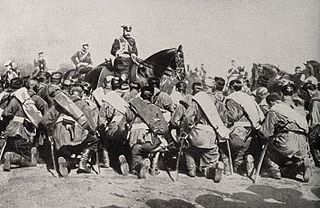
1916
• December 17 (December 30) - Rasputin is murdered
1917
• February 23-27 (March 8-12 NS) - The February Revolution begins with strikes, demonstrations, and mutinies in Petrograd (also called the March Revolution if following the Gregorian calendar)
• March 2 (March 15 NS) - Czar Nicholas II abdicates and includes his son. The following day, Nicholas' brother, Mikhail announced his refusal to accept the throne. Provisional Government formed
• April 3 (April 16 NS) - Lenin returns from exile and arrives in Petrograd via a sealed train
• July 3-7 (July 16-20 NS) - The July Days begin in Petrograd with spontaneous protests against the Provisional Government; after the Bolsheviks unsuccessfully try to direct these protests into a coup, Lenin is forced into hiding
• July 11 (July 24 NS) - Alexander Kerensky becomes Prime Minister of the Provisional Government
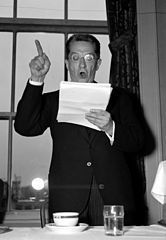
• August 22-27 (September 4-9 NS) - The Kornilov Affair, a failed coup by General Lavr Kornilov, commander of the Russian Army
• October 25 (November 7 NS) - The October Revolution - the Bolsheviks take over Petrograd (also called the November Revolution if following the Gregorian calendar)
• October 26 (November 8 NS) - The Winter Palace, the last holdout of the Provisional Government, is taken by the Bolsheviks; the Council of People's Commissars (abbreviated as Sovnarkom), led by Lenin, is now in control of Russia
1918
• February 1/14 - The new Bolshevik government converts Russia from the Julian to the Gregorian calendar turning February 1 into February 14
• March 3 - The Treaty of Brest-Litovsk, between Germany and Russia, is signed and takes Russia out of World War I
• March 8 - The Bolshevik Party changes its name to the Communist Party
• March 11 - The capital of Russia is changed from St. Petersburg to Moscow
• June - Russian civil war begins
• July 17 - Czar Nicholas II and his family are executed

• August 30 - An assassination attempt leaves Lenin seriously wounded
1920
• November - Russian civil war ends
1922
• April 3 - Stalin is appointed General Secretary
• May 26 - Lenin suffers first stroke
• December 15 - Lenin suffers second stroke and retires from politics
• December 30 - The Union of Soviet Socialist Republics (U.S.S.R.) established
1924
• January 21 - Lenin dies; Stalin will become his successor
 Dr Zhivago
Dr Zhivago Character list: generally in the order they appear in the novel - major characters have 2 asterisks
** Marya Nikolayevna - Yury Zhivago's mother
** Yury Andreyvich Zhivago/Yura/Yurochka - Dr Zhivago
** Nikolay Nikolayevich Vedenyapin/Uncle Kolya - Yury's Uncle (Marya's brother)
Ivan Ivanovich Voskoboynikov - Teacher and writer. Acquaintance of Uncle Kolya.
Pavel - Ivanovich's odd job man.
Nicky Dudorov - Boy two years older than Yury who lived with thw Voskoboynikovs.
Kologrivov - Manager of the estate.
Nadya and Lipa Kolgrivov - Kologrivov's two daughters. Lipa was a pupil of Lara's when she lived with them.
** Misha Gordon - Son of lawyer on the train.
Grigory Osipovich Gordon - Laywer on the train on which Zhivago committed suicide.
Tiverzina - Widow travelling on the Gordons train. Mother of two of the engine drivers.
Dementiy Dudorov - Nicky's father and terrorist.
** Nadya Kologrivova- School girl and "friend" of Nicky's (15 at beginning of book). Becomes Lara's best friend at girls' high school.
** Amalia Karlovna Guishar/Madame Guishar - Mother if Larissa and Rodyon. Widow of a Belgian engineer moved from the Urals to Moscow.
** Larissa Fyodorovna Guishar/Lara - Daughter of Amalia Guishar and sister of Rodya.
** Rodyon Fyodorovna Guishar/ Rodya - Son of Amalia Guishar and brother of Lara.
** Komarovsky/Victor Ippolitovich Komarovsky - Lawyer and harsh business man. Lover to Lara. Lawyer to Zhivago.
Tishkevich - Neighbour to the Guishars.
Olya Demina/Comrade Demina - Worker at Madame Guishar's. Friend of Lara's. Lodger at the building where Galiullina lived.
Faina Silantyevana Fetisova - Senior cutter and assistant to Madame Guishar.
Fuflygin - Divisional Manager of the Station district.
Pavel Ferapontovich Antipov - Track Overseer of the Station district.
** Tiverzin/Kuprian Savelich/Kuprinka - Train station worker. Strong political views.
Pyotr Khudoleyev - Old foreman of train station
Yusupka - Khudoleyev's apprentice. Son of Gimazetdin.
Gimazetdin - Porter at block of tenenments where Tiverzin lived.
Saveliy Nikitich - Tiverzin's father. Married Marfa who was Khudoleyev's love.
Prov Afanasyevich Sokolov - Church psalmist and relation of Tiverzin's mother.
Darya Antipov - Wife of Pavel Antipov.
** Pasha/Pashenka/Pavel Povlovich Antipov/Lieutenabt Antipov - Son of Darya and Pavel. Married to Lara. Went to love with the Tiverzins'.
Sventitskys - Family Nikolay Nikolayevich stayed with when in Moscow.
** Alexander Alexandrovich Gromeko Tonya's father a wealthy friend of Yury's.
** Anna Ivanovna Gromeko (nee Krueger) - Tonya's mother; the daughter of a wealthy landowner Father
** Tonya/ Antonina Alexandrovich Gromeko - Yury's first wife.
Nil Feoktissovich/Vyvolochnov - Nikolayevich's business associate.
Emma Ernestovna - Komarovsky's housekeeper.
Constantine Illarionovich Satanidi - Actor and Gambler. Friend of Komarovsky.
Alexander Alexandrovich Gromeko - Professor of Chemistry. Brother of Nikolay Gromeko. Married to Anna Gromeko. Father of Tonya.
Nikolay Alexandrovich Gromeko - Professor of Chemistry. Brother of Alexander Gromeko.
Anna Ivanovna Gromeko/nee Krueger - Married to Alexander Alexandrovich Gromeko. Mother of Tonya.
Shura Schlesinger - Anna's best friend. Theosophist.
Markel - Handyman to the Gromekos'.
Marinka - Daughter of Markel.
Serafima Kologrivov - Wife of Kologrivov.
Koka Kornakov - Son of an assistant public prosecutor, leading the cotillon at the Christmas Party.
Felitsata Semionovna - Friend of Tonya. Present at the Christmas party.
Dr Drokov - Doctor at the Christmas party who helped take care of Lara after the shooting.
Ruffina Onissimovna Voit-Voitkovsky- Lawyer friend of Komarovsky. Offered a room to Lara where she stayed after the shooting.
Lyudmila Kapitonovna Chepurko - Mother of Tusya a fellow student of Lara's. Made arrangements for Lara and Pasha's wedding.
Katya Antipov- Lara and Pasha's daughter.
Marfutka - The Antipovs' maid.
Friesendank - Married to Lipa Kologrivov.
** Galiullin/Yusupka/Osip Gimazetdinovich - Mechanic by trade. Son of Gimazetdin. Garrison Commander in the military. Leader of the White forces.
Karpenko - Yury's housekeeper in the military.
Sasha Zhivago/Sashenka - Yury's first child with his wife Tonya.
Countess Zhabrinskaya - Owner of the house offered to the red cross to be used as a hospital in the war in the district Razdolnoye.
Ustinya - Countess Zhabrinskaya's head cook.
Mademoiselle Fleury -Brought up the countess's two daughters.
Comissar Gintz/Gintze - Military leader.
Kolya Frolenko - Biryuchi telegraphist, Son of a clockmaker.
Maxim Aristarkhovich Klintsov-Pogorevshikh - Passenger on Yury's train when travelling back to Moscow.
Nyusha - Zhivagos' servant.
Wounded Man - Prominent Political Leader helped by Yury in the street.
Aunt Fatima/Galiullina - Caretaker on the house committee. Mother of Galiullin.
Khrapugina - House committee member at the Borough Council meeting
Yevgraf Zhivago- Yury's half brother.
Zevorotina - Neighbour of the Zhivago family while they were living in Moscow.
Voronyuk - Guard of conscripts in Zhivagos' coach on the way to Varykino.
Prokhor Pritulyev - Cashier in government wine shop in Petersburg. Also a passenger on the train. Married to a woman named Luga. Lived with a woman named Pelagia Tyagunova.
Vassya Brykin - Passenger on the train. Apprentice to an ironmonger and 16 at the time.
Kostoyed-Amursky - Revolutionary in the labour co-operative party also a passenger on the train travelling with the gaurd.
Pelagia Tyagunova/Auntie Polya - Accompanied Pritulyev on the journey.
Ogryskova/Aunty Katie/Katie Ogryskova - Also accompanied Pritulyev on the journey. Rival of Tyagunova.
Army Comissar Strelnikov - Pasha who was believed to be dead returned from prison in Germany and was vouched for by Tiverzin. He had all the qualitites that a leader of the time needed and he impressed "those who controlled appointments". Strelnikov was entrusted with new responsibilities and strategic decisions.
** Samdevyatov/Anfim Yefimovich - First introduced on the train from Moscow. Solicitor and a bolshevik.
** Avercius Mikulitsin - Married Agrippina Tuntsevas. Second wife was called Helen. He is a social revolutionary and is the regional delegate to the Contituent Assembly.
Agrippina, Avdotya, Glaphira (Glasha) and Serephima (Sima) Tuntsevas - Four sisters of Yuryatin.
** Liberius Avercievich/Libby/Commrade Forrester - Son of Mikulitsin and Agrippina. Commands the Forest Brotherhood. Partisan Leader.
Ivan Ernestovich Krueger - Grandfather of Tonya Gromeko.
Bacchus Mekhonoshin - Friver who took the Zhivagos't to Varykino to meet the Mikulitsin.
Pavell Ferapontovich Antipov - Pasha's father. Aformer political convict and worker.
Kammenodvorsky - Liberius's Chief Liaison Officer.
Admiral Kolchak - Supreme Commander of the Whites
Galuzina - The grocer's wife from Holycross. Sister of Olya and Polya.
Vlas Galuzin - The grocer from Holycross. Married to Galuzina.
Teryoshka/Terenty Galuzin - Son of Vlas and Galuzina. Expelled from school.
Ksyusha Galuzin - Daughter of Vlas and Galuzina.
Zalkind - Owner of the chemist in Holycross.
Schmulevich - Ladies tailor in Holycross.
Kaminsky - Engraver in the same building of flats.
Zhuk and Strodakh - The two photographers who worked in partnership.
Blazhein - Young assistant of the photographers.
Kerenyi Lajos - A Hungarian doctor. Later worked with Yury.
Lidochka/Commrade Lidochka - Representative of the Central Committee.
Vdovichenko - "Black Banner". Partisan Follower.
Goshka Ryabikh - Friend of Terenty Galuzin.
Colonel Stese - Officer of the selection board.
Koska - Boy from Yermolay. Hid with Goshka and Terenty.
Sanka Pafnutkin - Troublesome military recruit.
 Dr. Zhivago and the Russian Revolution
Dr. Zhivago and the Russian Revolution http://flan.utsa.edu/russian/dr%20zhi...
Opinions vary about whether the novel Dr. Zhivago is political or not. Some critics see it as apolitical ("Dr. Zhivago," Grolier's), whereas others, such as Bayley, who wrote the introduction to the present translation, sees it "first and foremost [as] a political novel, designed to express its author's overview of what is happening, and has happened, to his country and to her people" (vii). Political or not, the Russian Revolution is depicted accurately and in detail in Pasternak's novel Dr. Zhivago.
The events that lead to the 1917 revolution had started as early as in the 19th century. Lenin started his revolutionary activities in 1895. Bolsheviks and Mensheviks split in 1903, and on January 9, 1905, an estimated 1,000 workers were killed in Petersburg by Cossacks who fired on peaceful demonstrators. This event was called Bloody Sunday ("Russian revolution of 1905," Grolier's).
The events in Dr. Zhivago range from approximately 1905 to the 1940's, with most of the narrative concentrating on the revolution of 1917. At the beginning of the novel, Pasternak describes the revolutionary activities in Moscow from around 1905 to 1912. Working classes were marching along the streets carrying banners with revolutionary slogans, and singing "Warsaw" and "Victims they fell" (41). All kinds of people were participating in the demonstration.
Down the street people came pouring in a torrent - faces, faces, quilted winter coats and sheepskin hats, men and women students, old men, children, railway men in uniform, workers from the tramcar depot and the telephone exchange in knee boots and leather jerkins, girls and schoolboys. (41)
As in Petersburg on Bloody Sunday, Pasternak describes how the czar's troops cruelly killed the demonstrators:
Then the sun, setting behind the houses, poked a finger round the corner and picked out everything that was red in the street - the red tops of the dragoons' caps, a red flag trailing on the ground and the red specks and threads of blood on the snow. (43)
One of the main characters of the novel, Pasha Antipov, was active in the revolutionary movement. He distributed fliers and lead the marching band in demonstrations, without the slightest fear for his life. Dr. Zhivago himself, or Yuri, was at this time still a student at a medical institute. Yuri's attitude to the revolution was slightly more distant; he seemed to be sympathetic to the idea of revolution, but he kept out of the main action. Similarly, most of Yuri's acquaintances and relatives observed the course of events from the side without active participation.
When World War I broke out in 1914, Russian men were sent to the front. In Dr. Zhivago, Pasha Antipov enlisted in 1916 and was later sent to the Hungarian border. Yuri Zhivago, who was now working as a doctor, was stationed near the western border in a military hospital.
The outbreak of the war added to general discontent of people, which, in its turn, added more fuel to the upcoming 1917 revolution. Soldiers on the front were especially unhappy (Crankshaw 45). Pasternak describes the weary soldiers like this:
Tired young soldiers in enormous boots, their dusty tunics black with sweat on the chest and shoulder blades, sprawled, some on their backs, others face down, by the side of the road....They lay there as if they were made of stone, without energy to smile or swear. (112)
Czar Nicholas II was a weak leader and could not motivate the soldiers to fight, since the war was not going to benefit the soldiers in any way (Crankshaw 46). Yuri Zhivago met the czar when he visited the front to try to improve the morale of the soldiers, but he failed to make a good impression on Yuri.
The Tsar, smiling and ill at ease, looked older and more tired than his image on his coins and medals. His face was listless and a little flabby....Yuri felt sorry for the Tsar and horrified to think that this diffident reserve and shyness were the essential attributes of the oppressor, that such weakness could kill or pardon, bind or loose. (115)
Pasternak says that everything was being done to break the soldiers' apathy and tighten discipline (127). Not only the czar, but also his commissars were trying to restore order on the front. Since Bolsheviks were the ones against the czar, the commissars accused them of causing distraction on the front and in the nearby villages (132). Most people in the villages, however, did not seem to care for any doctrines; all they were interested in was peace and justice. As one outspoken woman, Ustinya, in the village said:
. . . that's all you talk about, bolsheviks and mensheviks. Now all that about no more fighting and all being brothers, I call that being godly, not menshevik, and about the works and factories going to the poor, that isn't bolshevik, that's according to the humanity and loving-kindness. (133)
The chronological events of World War I are followed closely in the novel. The Germans had broken through to the Russian territory and Yuri Zhivago had to move the military hospital to a different location (119). At the beginning of the year 1917, Russian soldiers were still on the front. In March they heard the news: "Street fighting in Petersburg! It's the Revolution!" (122) and later on, in the summer of 1917, the soldiers, among them Yuri Zhivago, were finally sent home.
The political events of the October 1917 were not described in great detail. Pasternak mentions that fighting increased in Moscow, and that the bolsheviks had earlier formed a provisional government (175). Yuri Zhivago read in the newspaper that the Dictatorship of Proletariat had been established (176).
(continued...>>>)
 Dr. Zhivago and the Russian Revolution
Dr. Zhivago and the Russian Revolution(continued from prior message):
In contrast to the relatively short description of the political events of the winter of 1917, more attention is given to the effect it had on the actual life of people. The winter was going to be hard. Yuri Zhivago and his family spent the winter of 1917 hungry and cold, "watching the destruction of all that was familiar and changing of all the foundations of life" (178). There was very little food and people had to eat whatever they could get hold of. The meals in the Zhivago household consisted of "boiled millet and fish soup made of herring heads, followed by the rest of the herring as the second course; there was also gruel made by boiling wheat or rye" (179).
During the following three years, Yuri Zhivago saw "an iron fist in everything" (178). Private property was seized, everything was guarded with guns, and "enterprise after enterprise became bolshevized" (178). Names of streets and government establishments were changed to better conform to the ideas of the revolution. For example, Governor-General Street was changed into October street (340), and the hospital where Zhivago worked in Moscow, Hospital of the Holy Cross, was turned into the Second Reformed Hospital (178).
In order to escape the hunger in the cities, a lot of people were going to the south or abroad (156). In addition, people who were afraid of the "iron fist" (178) decided that it was better to go to the countryside. In the novel, Yuri's half-brother Yevgraf, who was more active in the political arena, told Yuri that it was dangerous for him to stay in Moscow and that Yuri should take his family and go to the far-away city of Yuryatin in the Urals, where Yuri's late mother-in-law had owned a country estate called Varykino (189).
The October Revolution of 1917 led to the Civil War in 1918, battles between the Reds, the supporters of the new socialist government, and the Whites, who supported the pre-revolutionary state of affairs ("Russian revolutions of 1917," Grolier's). In Dr. Zhivago, the readers witness the devastating results of the Civil War: villages burnt by the Reds or Whites, cities occupied by first the Reds, then the Whites, and then the Reds again. For instance, when the Zhivago family were on their way to Yuryatin they saw villages burned by a revolutionary called Strelnikov, for not giving horses to the Red Army (206). The city of Yuryatin, where the Zhivagos were headed was rumored to be occupied by the white forces led by Yuri Zhivago's friend Galiullin (211).
Later on, the city of Yuryatin fell under the Red Army and the whole city underwent the same kinds of changes as were seen in Moscow. Various name changes occurred, and there were people's councils that abolished private ownership and controlled food distribution in the city. The huge Varykino estate, which was formerly private property of the Kruegers, the family of Yuri's mother-in-law, now became property of the Soviet state. The Zhivagos settled on the estate anyway, although Yuri admitted that their "use of land is illegal . . . The wood we cut is stolen, and it is no excuse that we steal from the State or that the property once belonged to Krueger" (252).
Later on, Yuri Zhivago was captured by the Red Army, who needed a medical officer. Yuri was forced to stay with them for almost two years. During this time, he witnessed a lot of unnecessary cruelty by the Red Army. For instance, once the Reds fought against a troop of white soldiers who turned out to be nothing but 14-year-old boys from a nearby military school. All the sympathies of Yuri Zhivago, who did not like human suffering of any kind, "were on the side of these heroic children who were meeting death. With all his heart he wished them success" (302).
During the time of the Civil War, many people who were not bolsheviks were deported from Russia. Yuri Zhivago's family, who had moved back to Moscow while Yuri was held by the Red Army, was deported to France, along with various other members of the intelligentsia, such as right-wing socialists, professors, and writers (373).
In 1921, the New Economic Policy, or NEP, was introduced, which restored some private property, and ended restrictions on private trade ("Russian Revolutions of 1917," Grolier's). Yuri Zhivago arrived in Moscow again in 1922 at the beginning of NEP and saw that certain limited private enterprise was allowed at this time. He noticed, however, that such enterprise often "led to profiteering and speculation" (423). Yuri also noticed other changes in the city. Members of the gentry and intelligentsia who had stayed in the Soviet Union had become to accept the revolution and had modified their language accordingly. They now said "sure thing" instead of "very well" (423).
The years that followed the Civil War were relatively uneventful in Russia, with the exception of Stalin's terrors on individual people. ("Stalin," Grolier's). Yuri Zhivago lived a quiet life in Moscow until at least 1929. The fate of his former mistress, Lara, who was the wife of the revolutionary Strelnikov, was unknown during this time period. There was speculation, however that "she must have been arrested, as so often happened in those days. . . forgotten as a nameless number on a list which later was mislaid, in one of the innumerable mixed or women's concentrations camps in the north" (449).
In addition to painting a very accurate picture of the political events of the beginning of the century, the novel Dr. Zhivago looks into the lives and feelings of the aristocrats and intelligentsia living in Russia at that time (Slonim 225).
The aristocrats had led a wealthy and carefree life all the way up to the revolution. Yuri Zhivago grew up in Moscow in the household of his distant relatives, the Gromekos, who lived in a huge two-story house in the center of Moscow. On the second floor they had their living quarters, bedrooms, schoolroom, study, library, sitting room, Yuri's and Tonya's rooms. The ground floor was used for receptions (58). Most aristocrats, including the Gromekos, also had country estates. These were huge estates that were run by bailiffs and peasants as workers.
The Gromekos lived the life of cultivated, sophisticated aristocrats. They "loved music, held receptions and evenings of chamber music at which string quartets and piano trios were performed" (58). The aristocrats also gave a lot of lavish balls, with fine dresses, good food, drinking and dancing all night long (82).
The lavish life of the aristocrats came to and end with the revolution. They had to give up much of their private property, and share their housing with people of the lower classes (Hayward 103). The military hospital where Yuri Zhivago worked during World War I, had belonged to Countess Zhabrinskaya, who had given up her house to the Red Cross (126). Similarly, Yuri's mother-in-law's family estate had been confiscated by the Government. While Yuri was on the front, his wife, Tonya, had had to send all the servants away, except for one who was looking after the child (154). In addition, the Gromekos had given their downstairs away. Even the vocabulary for housing had changed. Rooms were not called "rooms" any more but "living space" (156). Yuri Zhivago, however, seemed to agree with the new arrangement.
. . . there really was something unhealthy in the way rich people used to live. Masses of superfluous things. Too much furniture, too much room, too much refinement, too much self-expression. I'm very glad we're using fewer rooms. We should give up still more. (156)
In the novel we can also see how the revolution which had seemed to promise such high hopes had developed under Stalin into a soulless tyranny (Introduction to Dr. Zhivago vi). Yuri Zhivago, like many students of the time, had eagerly supported the 1905 revolution and the idealism behind it. Now, with the bolsheviks in charge, he was less pleased with it.
These new things were not familiar, not led up to by the old. . . Such a new thing, too, was this revolution, not the one idealised in the student fashion in 1905, but this new upheaval, today's born of the war, bloody, pitiless, elemental, the soldiers' revolution, led by the professionals, the bolsheviks. (148)
Yuri seemed to be much more moderate in his ideas of the revolution. On the train back to Moscow from the front he met a true revolutionary, who believed in a bloody revolution, a total disintegration of the current society, so that the whole system can be started from scratch. Yuri Zhivago was horrified at his words (151). Yuri also understood that his fate was sealed. He was convinced he was doomed, because he was not believed to be "red enough". He was also very disenchanted with the way things had turned out (168), and for the rest of his life Yuri felt isolated from the society and he never was able to fully adjust to the Soviet system.
In conclusion, in the novel Dr. Zhivago, the readers can see all the main events of the Russian revolution through the eyes of aristocrats. It is an accurate and truthful picture, although it did not turn out to be the kind of truth the Soviet government wanted. Nevertheless, it was an honest and accurate depiction of reality.
 Russian Civil War
Russian Civil WarWhile resistance to the Red Guard began on the very next day after the Bolshevik uprising, the Treaty of Brest-Litovsk and the political ban became a catalyst[14] for the formation of anti-Bolshevik groups both inside and outside Russia, pushing them into action against the new regime.
A loose confederation of anti-Bolshevik forces aligned against the Communist government, including land-owners, republicans, conservatives, middle-class citizens, reactionaries, pro-monarchists, liberals, army generals, non-Bolshevik socialists who still had grievances and democratic reformists, voluntarily united only in their opposition to Bolshevik rule. Their military forces, bolstered by forced conscriptions and terror[10] and by foreign influence and led by General Yudenich, Admiral Kolchak and General Denikin, became known as the White movement (sometimes referred to as the "White Army"), and they controlled significant parts of the former Russian Empire for most of the war.
A Ukrainian nationalist movement known as the Green Army was active in Ukraine in the early part of the war. More significant was the emergence of an anarchist political and military movement known as the Revolutionary Insurrectionary Army of Ukraine or the Anarchist Black Army led by Nestor Makhno. The Black Army, which counted numerous Jews and Ukrainian peasants in its ranks, played a key part in halting General Denikin's White Army offensive towards Moscow during 1919, later ejecting Cossack forces from the Crimea.
The remoteness of the Volga Region, the Ural Region, Siberia, and the Far East was favourable for the anti-Bolshevik powers, and the Whites set up a number of organizations in the cities of these regions. Some of the military forces were set up on the basis of clandestine officers' organisations in the cities.
http://en.wikipedia.org/wiki/Russian_...
Perm (in the book the town of Yuriatin is based on Perm)
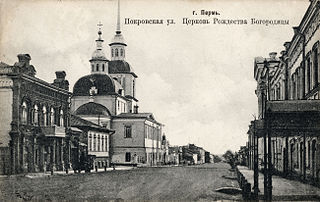
1910 postcard of downtown Perm
After the outbreak of the Russian Civil War, Perm became a prime target for both sides because of its military munitions factories. In December 1918, the Siberian White Army under Anatoly Pepelyayev (who acknowledged the authority of the Omsk Government of Aleksandr Kolchak), took Perm. In 1919, the city was retaken by the Red Army.
Grand Duke Mikhail Alexandrovich was executed in the outskirts of Perm with his secretary Nicholas Johnson on June 12, 1918 on the orders of the Perm Cheka.[citation needed] Their bodies were never recovered. A few weeks later on July 7, 1918, Andronic Nikolsky, the Archbishop of Perm, was also murdered by the Bolsheviks in the city.[citation needed] In 2000, the Russian Orthodox Church glorified him as Hieromartyr Andronik, Archbishop Of Perm, one of the Russian New Martyrs and Confessors.
http://en.wikipedia.org/wiki/Perm
By mid-December 1918, White armies in the East had to leave Ufa but this failure was balanced by the successful drive towards Perm. Perm was taken on 24 December.
http://en.wikipedia.org/wiki/Russian_...
White Forces in the East
By the fall of 1918, Anti-Bolshevik White Forces in the East included the People's Army (Komuch), the Siberian Army (of the Siberian Provisional Government) and insurgent Cossack units of Orenburg, Ural, Siberia, Semirechye, Baikal, Amur and Ussuri Cossacks, nominally under the orders of general V.G. Boldyrev, Commander-in-Chief, appointed by the Ufa Directorate.
On the Volga, Kazan was captured by the colonel Kappel detachement on 7 August, but was recaptured by the Reds on September 8, following the Red counter-offensive. On the 11th, Simbirsk fell; and on 8 October, Samara. The Whites fell back to Ufa and Orenburg.
In Omsk, the Russian Provisional Government quickly came under the influence of the new War Minister, Rear-Admiral Kolchak. On 18 November, a coup d'état established Kolchak as dictator. The members of the Directory were arrested and Kolchak proclaimed the "Supreme Ruler of Russia".
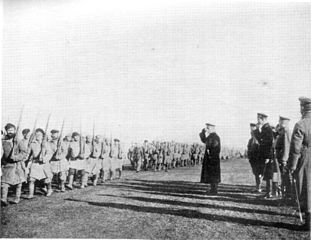
http://en.wikipedia.org/wiki/Russian_...
 Chapter 1. - The Five O'Clock Express
Chapter 1. - The Five O'Clock Express NOTE: numbers refer to Part numbers within the chapter
1.
Rest Eternal
http://www.youtube.com/watch?v=77Gebv...
This is the last hymn of the Pannykhida (Memorial Service for the Reposed). It has only two words, Vechnaya Pamyat ("Eternal Memory"). An Orthodox choir from Moscow under the direction of Viktor Popov sings it in the traditional Russian setting. It can make the stones weep.
http://en.wikipedia.org/wiki/Memory_E...
2.
Feast of the Intercession Dating events by church feasts was customary in Russia (as elsewhere) until the early twentieth century, and even later, Pasternack alternates thoughout the novel between civil and religious calendars. The feast of the Protective Veil (or Protection) of the Mother of God falls on October 1. The Russian Orthodox Church, and the Russian state until 1917, followed the Julian rather than the Gregorian calendar which have a difference of thirteen days between them. Thus October 1 by the Julian calendar is October 14 by the Gregorian calendar, and the October revolution of 1917 actually brooke out on November 7. (Pevear - p. 653)
3
baba au rhum a small yeast cake saturated in liquor, usually rum, and sometimes filled with whipped creamor pastry cream. It is most typically made in individual servings (about a 2" tall slightly tapered cylinder) but sometimes can be made in larger forms similar to those used for Bundt cakes.
The batter for baba is even richer than that for brioche, and includes eggs, milk, and butter.
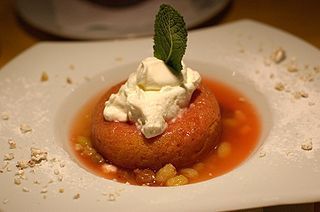
rum baba
4.
1903 in Russia In 1903 the Bolsheviks (derived from bol'shinstvo, "majority") were a faction of the Marxist Russian Social Democratic Labour Party (RSDLP) which split apart from the Menshevik faction at the Second Party Congress. http://en.wikipedia.org/wiki/Bolshevik.
Two horse open carriage The tarantass is a four-wheeled horse-drawn vehicle on a long longitudinal frame, reducing road jolting on long-distance travel. It was widely used in Russia in the first half of the 19th century. It generally carried four passengers. The origin of the word is not known: Fasmer's etymological dictionary[1] lists a number of variants from regional dialects to the ancient Indo-European roots with the mark "doubtful".'
http://en.wikipedia.org/wiki/Tarantass
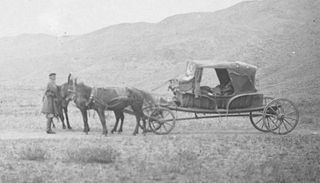
two horse open carriage of the times and place
The Feast of the Virgin of Kazan This feast which commemorates the miracle-working icon of the Virgin found in Kazan in 1579, is celebrated on July 8/21.
http://en.wikipedia.org/wiki/Our_Lady...
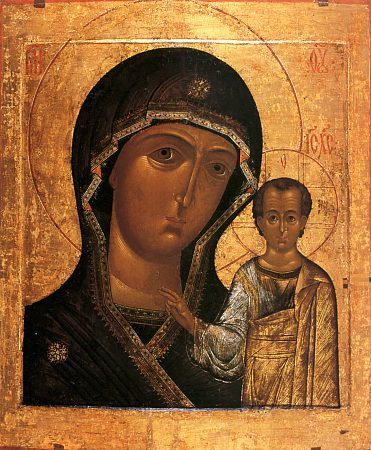
a copy of Our Lady of Kazan - 16th century
Duplyanka is found in Bryanskaya Oblast, Russian Federation, Europe. It is situated in the central part of the East European plain.
Tolstoyism and revolutionary idealism "Tolstoyism," an anti-state, anti-church, egalitarian social doctrine of the kingdom of God on earth, to be achieved by means of civil disobedience and non-violent resistance, was developed in the last decades of the nineteenth century. A number of revolutionary movements appeared during the same period in Russia, some more or less Marxist, others populist.
The Tolstoyan movement is a social movement based on the philosophical and religious views of Russian novelist Leo Tolstoy (1828–1910). Tolstoy's views were formed by rigorous study of the ministry of Jesus, particularly the Sermon on the Mount.
Tolstoy expressed "great joy" that groups of people "have been springing up, not only in Russia but in various parts of Europe, who are in complete agreement with our views." also see:
http://en.wikipedia.org/wiki/Tolstoya...
5.
Soloviev Vladimir Soloviev (1853 - 1900) was a Russian philosopher, theologian, poet, pamphleteer and literary critic, who played a significant role in the development of Russian philosophy and poetry at the end of the 19th century and in the spiritual renaissance of the early 20th century. [The name Solovyov derives from Nightingale in Russian.]
http://en.wikipedia.org/wiki/Vladimir...

Vladimir_Solovyov_
 Chapter 2 - A Girl From a Different World
Chapter 2 - A Girl From a Different WorldNOTE: numbers refer to Part numbers within the chapter
1
"the war with Japan"
The Russo-Japanese War (8 February 10, 1904 – 5 September 5. 1905) was "the first great war of the 20th century."[3] It grew out of rival imperial ambitions of the Russian Empire and Japanese Empire over Manchuria and Korea.
More at: http://en.wikipedia.org/wiki/Russo-Ja...
It ended in the unexpected defeat of Russia at the hands of the Japanese. The Russian situation was made more difficult by increasing social unrest within the country. On January 22, 1905, which came to be known as "Bloody Sunday," the Orthodox priest Gapon led a large but peaceful procession to the imperial palace in Petersburg to present a petition asking for reforms in the government. The procession was fired upon and many people were killed. Further disturbances then sprang up all across the country and spread to the armed forces. In August 1905 the emperor Nicholas II allowed the formation of a State Duma (national assembly). But the Duma’s powers were so limited that it satisfied none of the protesting parties, and in October came a general strike, as a result of which the emperor was forced to sign the so-called October Manifesto, which laid the foundations for a constitutional monarchy. This satisfied the Constitutional Democratic (CD) Party and other liberals, but not the more radical parties.
Pasternak, Boris (2010-11-23). Doctor Zhivago (p. 654). Random House, Inc.. Kindle Edition.
4.
droshki (droshky)
A droshky or drosky is a term used for several types of carriage, including:
• A low, four-wheeled open carriage used especially in Russia. It consists of a long bench on which the passengers ride sideways or astride, as on a saddle, with their feet on bars near the ground.[1]
• Various two-wheeled or four-wheeled public carriages used in Russia and other countries.[2]
http://en.wikipedia.org/wiki/Droshky
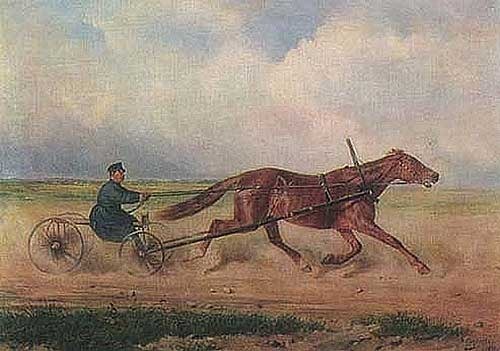
a racing droshki
"coachmaker's row"
central Moscow - upscale - location of big hotels etc.
"name day"
Russian name days are an interesting tradition with Christian origins and a part of Russian culture. When a Russian person is named after a saint, he or she has the opportunity to celebrate the day appointed for the saint in addition to a birthday. The name day is also called the “angel day.”
http://goeasteurope.about.com/od/russian culture/a/Russian-Name-Day-Tradition.htm
Railway strikes:
Revolution of 1905
Industrial workers all over Russia went on strike and in October, 1905, the railwaymen went on strike which paralyzed the whole Russian railway network. Later that month, Leon Trotsky and other Mensheviksestablished the St. Petersburg Soviet. Over the next few weeks over 50 of these soviets were formed all over Russia.
http://www.spartacus.schoolnet.co.uk/...

Tiflis Railway Strike
Oct.21 The rail strike reaches Nizhnii-Novgorod, Ryazan, Yaroslavl, Kursk, and the Urals - telephone and telegraph service shuts down in central Russia - the Union of Unions is setting up strike committees throughout Russia in support of the rail strike
Oct.22 The rail strike reaches Kiev and Voronezh - Assistant Interior Minister Trepov is urging “the most drastic measures” to end the strike
http://cnparm.home.texas.net/Nat/Rus/...
7.
Wafangkou
June 14-15, 1904 - A battle of the Japanese-Russian war in which the Russians were soundly defeated by the Japanese.
http://paperspast.natlib.govt.nz/cgi-...
8.
Cossacks in 1905
In the Russian Civil War that followed the October Revolution, the Cossacks found themselves on both sides of the conflict. Cossacks formed the core of the White Army, but many of them also fought for the Red Army. Some Cossack units in the White service have participated in pogroms against Jews in the Ukraine[54] Following the defeat of the White Army, a policy of Decossackization (Raskazachivaniye) took place on the surviving Cossacks and their homelands since they were viewed as potential threat to the new regime. This mostly involved dividing their territory amongst other divisions and giving it to new autonomous republics of minorities, and then actively encouraging settlement of these territories with those peoples. This was especially true of the Terek Cossacks' land. Cossacks were also banned from serving in the Red Army.

Cossacks in WWI
9.
Gapon
(from Hayword) "A priest who was thought to be a revolutionary leader but was an agent provacateur. "
Georgiy Apollonovich Gapon March 1870 - April 1906) was a Russian Orthodox priest and a popular working class leader before the Russian Revolution of 1905. Tried to be a double agent but was caught by spies, condemned and was either hanged or committed suicide.
http://en.wikipedia.org/wiki/Georgy_G...
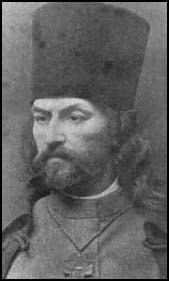
Father Gapon
Gorky
Alexei Maximovich Peshkov (March 1868 – June 1936), primarily known as Maxim Gorky, was a Russian and Soviet author, a founder of the Socialist Realism literary method and a political activist.[2]
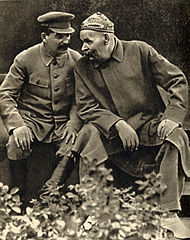
Gorky and Stalin
Prime Minister Witte:
Also known as Sergius Witte, was a highly influential policy-maker who presided over extensive industrialization within the Russian Empire. He served under the last two emperors of Russia.[1] He was also the author of the October Manifesto of 1905, a precursor to Russia's first constitution, and Chairman of the Council of Ministers (Prime Minister) of the Russian Empire.
http://en.wikipedia.org/wiki/Sergei_W...

Sergei Witte
"The Meaning of Love"
a book by Vladimir Solovyov
It is widely held that Solovyov was one of the sources for Dostoyevsky's characters Alyosha Karamazov and Ivan Karamazov from The Brothers Karamazov.[7] Solovyov's influence can also be seen in the writings of the Symbolist and Neo-Idealist of the later Russian Soviet era. His book The Meaning of Love can be seen as one of the philosophical sources of Leo Tolstoy's The Kreutzer Sonata (1889).
http://en.wikipedia.org/wiki/Vladimir...

Vladimir Solovyov
http://www.interesting-books-selector...
The Kreutzer Sonata
The Kreutzer Sonata is a novella by Leo Tolstoy, named after Beethoven's Kreutzer Sonata. The novella was published in 1889 and promptly censored by the Russian authorities. The work is an argument for the ideal of sexual abstinence and an in-depth first-person description of jealous rage. The main character, Pozdnyshev, relates the events leading up to his killing his wife; in his analysis, the root cause for the deed were the "animal excesses" and "swinish connection" governing the relation between the sexes.
http://en.wikipedia.org/wiki/The_Kreu...
 Chapter 2 - A Girl From a Different World(continued)
Chapter 2 - A Girl From a Different World(continued)NOTE: numbers refer to Part numbers within the chapter
10.
Tolstoyan shirt
apparel worn by Tolstoy in his later days and by his followers
Generally associated with Russian peasants, the kosovorotka was worn by peasants and townsmen of various social categories into the early 20th century, when it was rapidly displaced as an everyday garment by more efficient and less elaborate clothing after the Bolshevik Revolution of 1917. The garment is also known as a tolstovka, or the Tolstoy-shirt, because the writer Count Leo Tolstoy customarily wore one in his later years. Since the late 20th century kosovorotkas appear mostly as souvenirs and as scenic garments of Russian folk music, song and danceensembles. The kosovorotka is also seen worn by Omar Sharif as Yuri Zhivago in David Lean's 1965 film Doctor Zhivago.
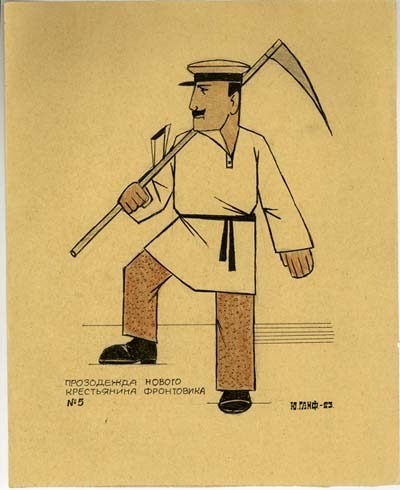
a drawing by Yuli Ganf, 1923
The Decadents
Decadence was the name given, originally by hostile critics, to several late nineteenth-century writers who valued artifice more than the earlier Romantics' naïve descriptions. Some of them adopted the name, referring to themselves as "Decadents". For the most part, they were influenced by the tradition of Gothic novels and by the poetry and fiction of Edgar Allan Poe, and were associated with Symbolismand/or Aestheticism.[1][2][3]
http://en.wikipedia.org/wiki/Decadent...
The Decadents emphasized independence, creativity, love and culture. They tended toward the experimental, mystical, and very idealistic. The political revolutionaries didn't quite know how to deal with them.
http://www.berdyaev.com/berdiaev/berd...
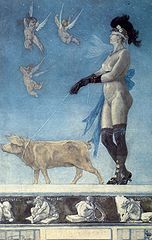
Pornocrates by Félicien Rops. Etching and aquatint
Nenuphars
(fr) A water lily, especially the common white water lily - larger size in Russia.
http://fr.wikipedia.org/wiki/Nénuphar
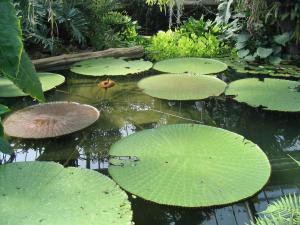
nenuphar
Symbolists
Russian Symbolism was an intellectual and artistic movement predominant at the end of the 19th and beginning of the 20th century. It represented the Russian branch of the symbolist movement in European art, and was mostly known for its contributions to Russian poetry.
Symbolism was largely a reaction against naturalism and realism, anti-idealistic styles which were attempts to represent reality in its gritty particularity, and to elevate the humble and the ordinary over the ideal. Symbolism was a reaction in favour of spirituality, the imagination, and dreams.[2]
http://en.wikipedia.org/wiki/Symbolis...

Rozanov
" a writer of the period who was an exceptional stylist"
(Hayward footnote)
Vasily Vasilievich Rozanov (Russian: Василий Васильевич Рóзанов; 1856, Vetluga - 1919, Sergiyev Posad) was one of the most controversial Russian writers and philosophers of the pre-revolutionary epoch. His views have been termed the "religion of procreation", as he tried to reconcile Christian teachings with ideas of healthy sex and family life and not, as his adversary Nikolai Berdyaev put it, "to set up sex in opposition to the Word". Because of phallic notions in his writings, Klaus von Beyme called him the Rasputin of the Russianintelligence.[1]
Rozanov frequently referred to himself as Fyodor Dostoyevsky's Underground Man, and proclaimed his right to espouse contrary opinions at the same time. He first attracted attention in the 1890s when he published political sketches in the conservative newspaper Novoye Vremya, owned and run by Aleksey Suvorin. His comments, always paradoxical and sparking controversy, would lead him to clashes with radicals (like Lenin) and the Tsarist government alike.
http://en.wikipedia.org/wiki/Vasily_R...
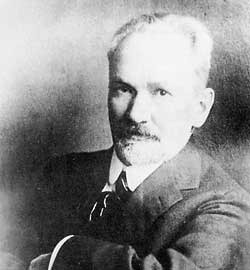
Vasily Rozanov
Hesiod's hexameters
The meter in which Hesiod, a Greek oral poet, composed his poetry. Sample:
"To you, foolish Perses, I will speak good sense. Badness can be got easily and in shoals: the road to her is smooth, and she lives very near us. But between us and Goodness the gods have placed the sweat of our brows: long and steep is the path that leads to her, and it is rough at the first; but when a man has reached the top, then is she easy to reach, though before that she was hard."
http://www.gutenberg.org/files/348/34...
11.
Petrovka Street
Petrovka Street is a street in Moscow, Russia, that runs north from Kuznetsky Most and Theatral Square up past Strastnoy Boulevard and Petrovsky Boulevard.
http://en.wikipedia.org/wiki/Petrovka...
Kuznetsky Most (Kuznetsky Most. A view from the street Petrovka to side of the street Rozhdestvenka, 1912)

Kuznetsky Most
17.
Bless the LORD, O my soul, And all that is within me, bless His holy name.
Psalms 103:1 - King James Bible - sung in the first part of the Orthodox liturgy
Russian (Eastern) Orthodox Church in Moscow
There are no pews. Most churches are lit with candles rather than electric light. Virtually all churches have multiple votive candle stands in front of the icons. It is customary for worshippers to purchase candles in church stores, light them, and place them on the stands. This ritual signifies a person's prayer to God, the Holy Mother, or to the saints or angels asking for help on the difficult path to salvation and to freedom from sin.
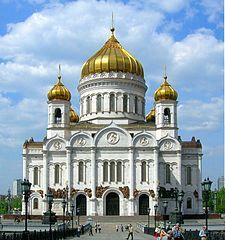
Church of Christ the Saviour in Moscow
"Blessed are the poor in spirit ... Blessed are they that mourn . . . Blessed are they which do hunger and thirst after righteousness ..."
Biblical - Matthew 5:3 -4; 5:6 - the nine Beatitudes - sung as part of the Orthodox liturgy
http://www.youtube.com/watch?v=VxmRy_...
18.
Presnia uprising
The Moscow Uprising occurred December 7 – 17, 1905. The main rebel district was Presnia, home to 150,000 mainly textile workers. It set up its own police and Soviet rather than attack the Kremlin. Mainly led by the Bolsheviks, it ended in defeat for the revolutionaries and provoked a swift counter-revolution that lasted till 1907.

Bolsevik bombs
19.
"Well let's sit down, and then we must be off."
A superstitious Russian custom: before a move or a journey people sit down a few moments for luck
(Hayward)
"The Woman or the Vase"
http://russian.psydeshow.org/images/s...
Siemiradzki was a Polish Academic painter particularly known for his depictions of scenes from the ancient Graeco-Roman world and the New Testament. (We can compare these subjects to the favorite topics of Nikolai Nikolaevich Vedeniapin: see Doctor Zhivago p. 10, pp. 42-43.)

The Woman or the Vase by Siemieradski
20.
theosophist - refers to systems of speculation or investigation seeking direct knowledge of presumed mysteries of being and nature, particularly concerning the nature of divinity. Theosophy is considered a part of the broader field of esotericism, referring to hidden knowledge or wisdom that offers the individual enlightenment and salvation.
http://en.wikipedia.org/wiki/Theosophy
**
"Cui's nephew"
Cesar Cui (1835-1918) was an army officer and a famous composer of a specifically Russian type of music.
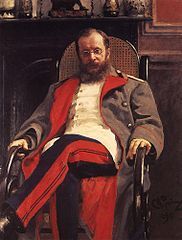
Cesar Cui
http://www.youtube.com/watch?v=kTCQom...
zakuski - a traditional Russian hors d'oeuvre served before meals. Usually presented buffet style, it often consists of cured meats and fishes, various pickled vegetables such as beets, cucumbers, and garlic, mixed salads, caviar, and breads. These appetizers are often present at parties or receptions, especially in Armenia and Russia. Usually zakuskis are served away from the dining room.
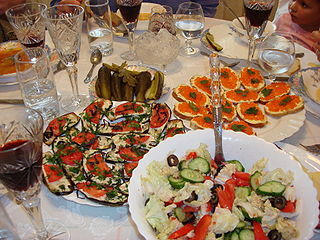
Zakuski
21.
ragged smoke of bonfires
Fires are lit at crossroads in very cold weather
(Hayward)
 Chapter 3: The Sventitsky's Christmas Party
Chapter 3: The Sventitsky's Christmas Party1.
"tomb of Askold" "horse of Prince Oleg"
the burial place of Prince Askold of Kiev -
On the banks of the Dnieper - Askold was killed in 882 by Oleg the successor to Rurik, founder of the first dynasty of Russian Rulers. It was predicted that Oleg's horse would cause his death but he died from a snake bite. The snake was lodged in the skull of his horse long after its death.
2
November, 1911 - Russia
* Rasputin’s influence rises and he is attacked but survives.
* Lenin confidently announces that “world bourgeois parliamentarism is drawing to a close.”
* Severe famine to 1913, though Russia continues to export a fifth of its annual grain production
3.
lobar pneumonia
Lobar pneumonia is a form of pneumonia that affects a large and continuous area of the lobe of a lung.[1]
It is one of the two anatomic classifications of pneumonia (the other being bronchopneumonia).
http://en.wikipedia.org/wiki/Lobar_pn...
"There will be no death, says St. John."
Revelations 21.4
4.
Shrovestide Feast
At the end of winter Shrovetide (a pancake week) comes. In Russian Pancake week is called \"Maslyanitsa\". Shrovetide is an ancient festival dating from pagan times. The Christian historians say that those were really \"mad\" days in the past. People wore funny masks and costumes, sometimes, men wore women`s clothing and vice versa. Such masquerade anticipated a merry festival, when delicious food and a lot of wine were consumed. At first it was a festival that celebrated the arrival of spring and the start of work on the land. It included many rituals (burning a man of straw symbolizing winter, lighting fires, leaving festival food on the ancestors` graves) and feasts, the main food at which were bliny. The feast fighting was one more great fun that helped to get warm on cold winter days. Later, the Orthodox Church included Shrovetide among its festivals. Shrovetide has lost its ritual significance and has become a symbolic festival of saying good-bye to winter and welcoming spring. At present special performances are held during Pancake week. Throughout the whole week people cook pancakes (bliny).
5.
Spring 1906
* Russia got a Constitution in April
* due to defeat in Japanese war
* Revolution of 1905 and the Duma is created
Egyptian Campaign - Napoleon - (Lara is studying hsitory)
7.
Spring 1911
* Duma changes leadership from Stolypin to Kokovtsov as Prime Minister
Short Mauser Rifle
Mauser was a German arms manufacturer of a line of bolt action rifles and pistols from the 1870s to 1995. Mauser designs were built for the German armed forces. Since the late 19th and early 20th centuries, military Mauser designs were also exported and licenced to a number of countries.
9.
Blok Alexander Blok (1880–1921) was one of the Russia's greatest poets and a leader of the symbolist movement. In an autobiographical sketch written near the end of his life, Pasternak noted: “A number of writers of my age as well as myself went through the years of our youth with Blok as our guide” - Pevear - p. 657

Alexander Blok
10.
.Dutch Adoration of the Mag
The Adoration of the Magi (anglicized from the Matthean Vulgate Latin section title: A Magis adoratur) is the name traditionally given to the Christian subject in the Nativity of Jesus in art in which the three Magi, represented as kings, especially in the West, having found Jesus by following a star, lay before him gifts of gold, frankincense, and myrrh, and worship him. It is related in the Bible by Matthew 2:11.
11
"Grand rond, Chaine chinoise" "Une valse s’il vous plaît" ”
"Great ring! Chinese chain! " " A waltz please!"
trois temps, à deux temps,
In triple time, in double time.
12
bonbonnieres
a small decorated box filled with candies or sugared almonds

devant-derrière.
back to front.
14
"Holy God, holy and mighty, holy and deathless, have mercy on us."
The Trisagion. sometimes called by its opening line Agios O Theos or by the Latin Tersanctus, is a standard hymn of the Divine Liturgy in most of the Eastern Orthodox Churches, Oriental Orthodox Churches and Eastern Catholic Churches. In Western Christianity theSanctus (a different formula) is used in the Mass.[1]
http://en.wikipedia.org/wiki/Trisagion
 Chapter 4: The Hour of the Inevitable
Chapter 4: The Hour of the Inevitable2.
The Erfurt Program
The Erfurt Program was adopted by the Social Democratic Party of Germany during the SPD congress at Erfurt in 1891. Formulated under the political guidance of Eduard Bernstein, August Bebel, and Karl Kautsky, it superseded the earlier Gotha Program.
The program declared the imminent death of capitalism and the necessity of socialist ownership of the means of production. The party intended to pursue these goals through legal political participation rather than by revolutionary activity. Kautsky argued that because capitalism by its very nature must collapse, the immediate task for socialists was to work for the improvement of workers' lives rather than for the revolution, which was inevitable.
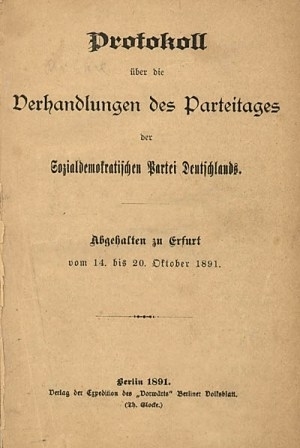
Protokoll des Parteitages der SPD
Plekhanov
Georgi Valentinovich Plekhanov (November 29, 1856 – May 30, 1918) was a Russian revolutionary and a Marxist theoretician. He was a founder of the Social-Democratic movement in Russia and was one of the first Russians to identify himself as "Marxist." Facing political persecution, Plekhanov emigrated to Switzerland in 1880, where he continued in his political activity attempting to overthrow the Tsaristregime in Russia. During World War I Plekhanov rallied to the cause of the Entente powers against Germany and he returned home to Russia following the 1917 February Revolution. Plekhanov was hostile to the Bolshevik party headed by Vladimir Lenin, however, and was an opponent of the Soviet regime which came to power in the autumn of 1917. He died the following year. Despite his vigorous and outspoken opposition to Lenin's political party in 1917, Plekhanov was held in high esteem by the Russian Communist Party following his death as a founding father of Russian Marxism and a philosophical thinker.
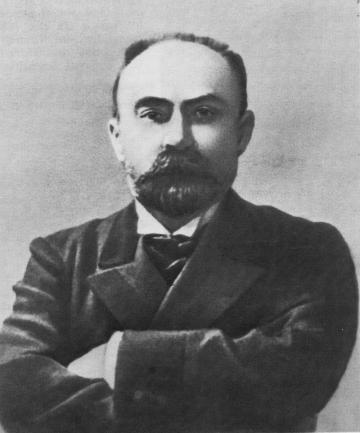
Georgi Plekhanov
http://en.wikipedia.org/wiki/Georgi_P...
"...a check for 10,000 rubles."
A 25-rouble banknote of the year 1909 was about an equivalent to the present-day $1250 US.
http://wiki.answers.com/Q/How_many_US...
10,000 / 25 = 400 x $1250 = $500,000?
(I doubt something here.)
The Pevear translation does not say the check is for rubles.
3.
Whit Monday
Whit Monday or Pentecost Monday (also known as Monday of the Holy Spirit) is the holiday celebrated the day after Pentecost, a movable feast in theChristian calendar. It is movable because it is determined by the date of Easter.
Whit Monday gets its English name for following "Whitsun", the day that became one of the three baptismal seasons. The origin of the name "Whit Sunday" is generally attributed to the white garments formerly worn by those newly baptized on this feast.
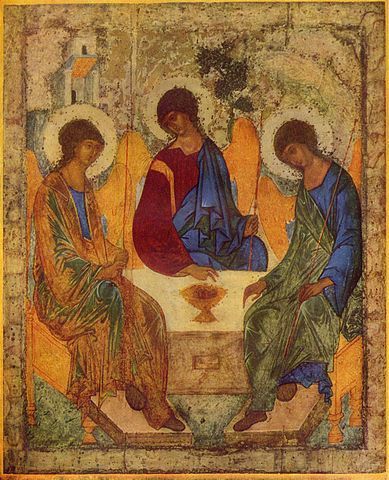
Medieval Russian icon of the Old Testament Trinity by Andrei Rublev, used as the icon of the feast for Whit Monday.
Russian Orthodox wedding 1862
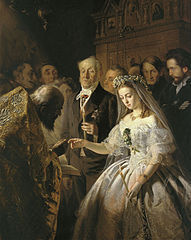
Russian Orthodox wedding.
Russian trains
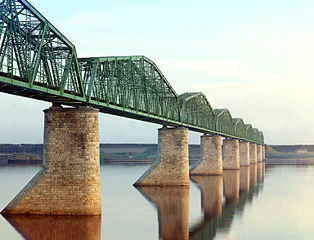
Railroad bridge over Kama River, near Perm in 1912
http://en.wikipedia.org/wiki/Trans-Si...
5.
"second winter of the war" -
if the first winter was 1914 then the second would be 1915.
Russia and WWI -
By June 1916 there were 140 Russian infantry divisions against 105 Austro-German infantry divisions and 40 Russian cavalry divisions against 22 Austro-German. The mobilization of industry and increase of imports enabled the Russian army to resume the offensive. A large attack on the southwestern front under the leadership of General Aleksey Brusilov (the Brusilov Offensive) started in June. The attack, aimed against the part of the front held by Austro-Hungarians, was initially a spectacular success. The Russian army advanced to a depth of 50–70 kilometres (31–43 mi), capturing several hundred thousand prisoners and several hundred guns. The arrival of important enemy reinforcements from the west, the defeat of the Romanians, and failure of Russia's western allies to shake German defenses, brought the Russian advance to an end in September.
On 14 August 1916, Romania entered the war on the side of the Entente and had a successful offensive until September. After that it started to suffer great losses and several defeats from German-Austrian-Bulgarian-Ottoman forces, as the Romanian Army was poorly equipped and their Russian allies offered little support on the front.
During the the Winter of 1916—1917, starving wolves had amassed in great numbers in Kaunas, Vilnius and Minsk and began attacking Imperial Russian and Imperial German fighting forces. This caused the two armies to negotiate a truce to fight off the animals. (From a report in the NY times dated 29 July 1917[2])
http://en.wikipedia.org/wiki/Eastern_...
Brusilov
Aleksei Alekseevich Brusilov 1853 – 1926) was a Russian general most noted for the development of new offensive tactics used in the 1916 offensive which would come to bear his name. The innovative and relatively successful tactics used were later copied by the Germans. His war memoirs were translated into English and published in 1930 as A Soldier's Notebook, 1914–1918.

Aleksei Alekseevich Brusilov
Deviche Pole - "Girls' field"
a part of the Moscow University -
The unique complex of medical institutions with a beautiful name: "Clinical town on Devichye field is located in the center of Moscow, near the Novodevichy Monastery.
http://moscowdailyshot.blogspot.com/2...
Battle of Lutsk
The Battle of Lutsk of 4-6 June 1916 heralded the launch of the Russian Brusilov Offensive and started the remarkable run of sweeping successes enjoyed by Russian Commander Alexei Brusilov until the Offensive later ran out of steam.
http://www.firstworldwar.com/battles/...
 Chapter 5: Farewell to the Old
Chapter 5: Farewell to the OldNOTE: numbers refer to Part numbers within the chapter
1.
black-soil country
Central Black Earth Region is a segment of the Eurasian chernozem belt that lies within Central Russia and comprises Voronezh Oblast, Lipetsk Oblast, Belgorod Oblast, Tambov Oblast, Oryol Oblast and Kursk Oblast. Between 1928 and 1934, these regions were briefly united into Central Black Earth Oblast, with the centre in Voronezh. The Black Earth Region is famous for its very good soil, called Black Earth, or Chernozem, hence the name. Although its importance has been primarily agricultural, the Chernozem Region was developed by the Soviets as an industrial region based on iron ores of the Kursk Magnetic Anomaly.
http://en.wikipedia.org/wiki/Central_...
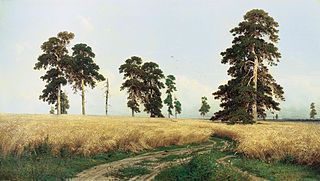
Ivan Shishkin's painting depicts forest steppe adapted for arable agriculture
3.
Provisional Government:
When the February revolution of 1917 (February 23–27/March 8–12) brought about the abdication of Nicholas II and the end of imperial Russia, a provisional government was created, composed of an alliance of non-Communist liberal and socialist parties headed by Prince Georgi Lvov (1861–1925), who was a Constitutional Democrat. In July 1917, Prince Lvov was replaced by the Socialist Revolutionary (SR) Alexander Kerensky (1881–1970). The intent of the Provisional Government was to create a democratically elected executive and assembly, but its program was opposed by Lenin and the Bolsheviks, and in October 1917 the Provisional Government was brought down by the Bolshevik revolution.
(Pevear)
Times of Troubles
The Time of Troubles was a period of Russian history comprising the years of interregnum between the death of the last Russian Tsar of the Rurik Dynasty, Feodor Ivanovich, in 1598, and the establishment of the Romanov Dynasty in 1613. In 1601–1603, Russia suffered a famine that killed one-third of the population, about two million. At the time, Russia was occupied by the Polish-Lithuanian Commonwealth in the Dymytriads, and suffered from civil uprisings, usurpers and impostors.

In the Time of Troubles by Sergey Ivanov.
4
"Zybushi - traitor"
(Pevear uses "Raspou-trease")
According to the text, Mlle Fleury swallows the endings of Russian words, including in this case the name of Grigory Rasputin (1869–1916), a bizarre holy man who attached himself to the imperial family, and the word “treason.”
5
death penalty restored
The death penalty in Russia was abandoned under Catherine the Great but available in extreme circumstances. It was almost never carried out, even in the case of the Decembrists when Nicholas I commuted all but 5 of the court's 36 death sentences. In 1910 the death penalty was reintroduced but it was still seldom used.
http://en.wikipedia.org/wiki/Capital_...
Duma
The State Duma of the Russian Empire was a legislative assembly in the late Russian Empire, which met in the Taurida Palace in St. Petersburg. It was convened four times between 1906 and the collapse of the Empire in 1917.
http://en.wikipedia.org/wiki/State_Du...
The first two attempts by Tsar Nicholas II were too radical and ineffective and were subsequently dissolved after only a few months each. After the 1907 electoral reform the third Duma, elected in November 1907, was largely made up of members of the upper classes, as radical influences in the Duma had almost entirely been removed. The establishment of the Duma after the 1905 Revolution was to herald significant changes to the Russian autocratic system. Furthermore the Duma was later to have a larger effect on Russia as it was one of the contributing factors in the February Revolution, which led to the abolition of the autocracy in Russia.
http://en.wikipedia.org/wiki/State_Duma

Tsar Nicholas II's opening speech before the two chambers (1906)
Schlusselburg Fortress
The Schlusselburg Fortress dating from 1299, changed hands between countries, used as the prison of Ivan VI from age 2 until his death. Lenin's brother, Aleksandr Ulyanov, was hanged there.
http://en.wikipedia.org/wiki/Schlusse...
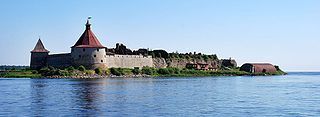
Oreshek Fortress
 Chapter 5: Farewell to the Old (continued)
Chapter 5: Farewell to the Old (continued)NOTE: numbers refer to Part numbers within the chapter
Bolsheviks
The Bolsheviks, originally also Bolshevists, derived from bol'shinstvo, "majority" were a faction of the Marxist Russian Social Democratic Labour Party (RSDLP) which split apart from the Menshevik faction[3] at theSecond Party Congress in 1903.
The Bolsheviks were the majority faction in a crucial vote, hence their name. They ultimately became the Communist Party of the Soviet Union. The Bolsheviks came to power in Russia during the October Revolution phase of the Russian Revolution of 1917, and founded the Russian Soviet Federative Socialist Republic which would later in 1922 become the chief constituent of the Soviet Union.
Much more at: http://en.wikipedia.org/wiki/Bolsheviks

Bolshevik Party Meeting. Sitting (from left): Abel Yenukidze, Mikhail Kalinin, Nikolai Bukharin, Mikhail Tomsky, Mikhail Lashevich, Lev Kamenev, Evgeny Preobrazhensky, Leonid Serebryakov, Vladimir Lenin and Alexei Rykov
"Balaam, Balaam"
From Numbers 22:21-35. The Moabite prophet Balaam fails to see the angel of God barring his way, but his she-ass does see the angel and finally cries out to warn him.
Lot's wife
From Genesis 19:1-26. Ustinya has ocnfused the story of Balaam with the story of Lot who was saved by the Lord when Sodom and Gomorrah were destroyed, but whose wife was turned into a pillar of salt when she looked back at the cities.
8
"the land question"
The redistribution of land (taken from land owners) and continued cultivation was one of the major issues of the Provisional Government.
"accursed question"
Dostoevsky coined the phrase (prokliatye voprysy) for the ultimate questions of human existence - the nature of man, the existence of God, the problem of evil, the meaning of life, the riddle of death - "the great Russia questions," as Nicola Chiaromonte called them - Pasternak raises these very questions in Dr. Zhivago.
Remember St. Paul, "You will speak with tongues and you will prophesy."
Corinthians 14:5
Pray for the gift of understanding."
Corinthians 14: 13
"The horses were taken, balking, out of the freight cars. "
The use of horses in World War I marked a transitional period in the evolution of armed conflict. Cavalry units were initially considered essential offensive elements of a military force, but over the course of the war, the vulnerability of horses to modern machine gun and artillery fire reduced their utility on the battlefield. This paralleled the development of tanks, which would ultimately replace cavalry in shock tactics. While the perceived value of the horse in warchanged dramatically, horses still played a significant role throughout the war.
(* This battle is taking place in the summer of 1917 - it's likely the Kerensky Offensive, the last battle of the war for the Russians, ordered by Alexander Kerensky of the Provisional Government. It was a total and devastating loss.*)
"The Russian provisional government was greatly weakened by this military catastrophe, and the possibility of a Bolshevik coup d'état became increasingly real. Far from strengthening Russian army morale, this offensive proved that Russian army morale no longer existed. No Russian general could now count on the soldiers under his command actually doing what they were ordered to do.
"This offensive helped the start of the July Days, and also affected the situation in Romania. Russo-Romanian forces, which broke the Austro-Hungarian front at Mărăştiin support of the Kerensky Offensive, had to halt their advance."
http://en.wikipedia.org/wiki/Kerensky...
Nihilists
The Nihilist movement was a Russian movement in the 1860s which rejected all authorities.[1] It is derived from the Latin word "nihil", which means "nothing". After the assassination of Tsar Alexander II in 1881, the Nihilists were known throughout Europe as proponents of the use of violence in order to bring about political change."
[image error]Nilista by Ilya Repin late 19th century
Many works by Repin (1844-1930): http://en.wikipedia.org/wiki/Ilya_Repin
"Doestoevsky's nihilist heroes"
Two nihilist heroes from Dostoevsky spring to mind. First, there is Raskolnikov, from the book Crime and Punishment. He conceives of himself as being extraordinary and then formulates a theory whereby extraordinary men of the world have the right to commit any crime. He then murders his landlady and is condemned to paranoia and guilt.
http://www.hindu.com/2001/09/02/stori...
The second nihilist anti-hero might be Pyotr Verkhovensky Stepanavich of "The Possessed" ("Demons") who is based on Sergey Nechayev, an historical revolutionary associated with the Nihilist movement and known for his single-minded pursuit of revolution by any means necessary, including political violence.[1] ("Everything is permitted.")
http://en.wikipedia.org/wiki/Sergey_N...
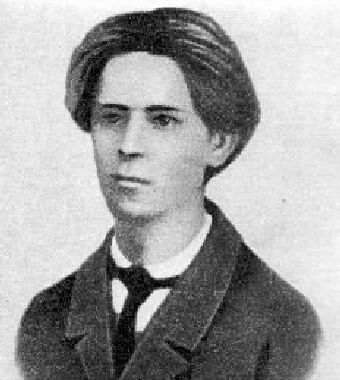
A young Nechayev.
Ostrogradsky
Ostrogradskywas a significant teacher of the deaf in Russia (1851-1907)
http://www.encspb.ru/object/280401231...
The Russian countryside just west of Moscow

A typical landscape of Moscow Oblast
 In 1958, Americans were reading some pretty sophisticated and culturally challenging books. Titles on the Best Seller List, which included "Doctor Zhivago" as #1 were: "Anatomy of a Murder" (#2), "Lolita" (#3), and John O'Hara's "From the Terrace" (#5).
In 1958, Americans were reading some pretty sophisticated and culturally challenging books. Titles on the Best Seller List, which included "Doctor Zhivago" as #1 were: "Anatomy of a Murder" (#2), "Lolita" (#3), and John O'Hara's "From the Terrace" (#5).  byRobert Traver
byRobert Traver by
by
 Vladimir Nabokov
Vladimir Nabokov by
by
 John O'Hara
John O'Hara
 And what were people were in the USSR between the 1930s and 1960 (or so) - the eras of Stalin and Khrushchev?
And what were people were in the USSR between the 1930s and 1960 (or so) - the eras of Stalin and Khrushchev? * Per James von Geldern in Soviet History:
http://www.soviethistory.org/index.ph...
"Spontaneous, direct, forceful, enthused: all these words could characterize Nikita Khrushchev in his role of critic of the arts. Anything but sophisticated. Heir to a tradition in which heads of state could comment authoritatively on art, and threatened by unfamiliar inartistic expressions from many directions, Nikita Khrushchev took it upon himself to redirect the creative folk of his country towards the virtues of socialist realism. Whether it was young poets exercising their freedom on Maiakovskii Square, or artists abandoning realist form for incomprehensible abstractions, Khrushchev was like many of his compatriots confused and more than a little bit worried by the trend."
* Other than that there was the state sanctioned Social Realism:
" In 1931-2, the early emphasis on the "little man" and the anonymous laboring masses gave way to the "hero of labor", derived from the people but set apart by the scale of his deeds.[7] Writers were explicitly enjoined to develop "heroization."[7] This reflected a call for romantic art, which reflected the ideal rather than the realistic.[8] Furthermore, it should show one clear and unambiguous meaning.[9]"
http://en.wikipedia.org/wiki/Socialis...
*Works of Socialist Realism from the North and "Liberated" South - Dan Duffy, Editor
"In 1934 Maxim Gorky summarized the four key features of socialist realism. First, socialist realism is a programmatic literature that affirms something. Second, it is a literature in which collectivism is presented as the main factor in shaping man. "Socialist individuality can develop only in conditions of collective labor," said Gorky. Third, socialist realistic literature provides an optimistic outlook on life. Fourth, this literature must have an educative function.2 Zhdanov, another prominent critic at the time, offered this definition: "[T]ruthfulness and historical concreteness of artistic depiction must be combined with the task of ideological remolding and re-education of the toiling people in the spirit of Socialism. This method in fiction and in literary criticism is what we call Socialist Realism . . . ."3
"Gorky and other critics who helped define socialist realism often contrasted it with critical or bourgeois realism--the realism of Balzac, for example, or of Russia's great nineteenth-century novelists Dostoyevsky and Tolstoy. According to Gorky, the problem with critical realism was that it was too negative, too pessimistic. It was good at exposing the evils of pre-socialist society but it was not upbeat enough to develop a new socialist personality."
http://www.yale.edu/seas/bibliography...
 http://www.newworldencyclopedia.org/e...
http://www.newworldencyclopedia.org/e...With the discussion on Tolstoy and Pasternak, I thought I'd bring in a link to what many think is the real start of the Russian Revolution: The Decembrist Revolt, which Pushkin, Alexander and Tolstoy Leo Nikoleyevich embraced. Tolstoy especially in War and Peace.

http://en.wikipedia.org/wiki/Decembri...
 Indeed, G! I mentioned this in passing in message #5 but perhaps there should be more because many of the later Russian revolutionaries and their sympathizers honored the participants and looked to them for inspiration.
Indeed, G! I mentioned this in passing in message #5 but perhaps there should be more because many of the later Russian revolutionaries and their sympathizers honored the participants and looked to them for inspiration. From your link:
http://en.wikipedia.org/wiki/Decembri...
"The Decembrist revolt or the Decembrist uprising (Russian: Восстание декабристов) took place in Imperial Russia on 26 December [O.S. 14 December] 1825. Russian army officers led about 3,000 soldiers in a protest against Nicholas I's assumption of the throne after his elder brother Constantine removed himself from the line of succession. Because these events occurred in December, the rebels were called the Decembrists (Dekabristy, Russian: Декабристы). This uprising, which was suppressed by Nicholas I, took place in the Senate Square in Saint Petersburg. In 1925, to mark the centenary of the event, the square was renamed as Decembrist Square, but in 2008 it reverted to its original name."
and:
"To some extent, the Decembrists were in the tradition of a long line of palace revolutionaries who wanted to place their candidate on the throne, but because the Decembrists also wanted to implement Classical Liberalism, their revolt has been considered the beginning of a revolutionary movement. The uprising was the first open breach between the government and reformist elements of the Russian nobility, which would subsequently widen."
**
Here's a photo of the Decembrists at Senate Square - being deported to Siberia (December, 1825) :

 Chapter 6 - The Moscow Encampment
Chapter 6 - The Moscow Encampment NOTE: numbers refer to Part numbers within the chapter
1.
"... no annexations and no reparations..."
These were controversial terms in discussions of the Brest-Litovsk treaty. The Russian negotiators, headed by Leon Trotsky (Lev Bronstein, 1879–1940), wanted no annexations of Russian territory and no payments of war reparations, but eventually agreed to both.
Pevear -
While the treaty was practically obsolete before the end of the year, it did provide some relief to the Bolsheviks, who were tied up in fighting the Russian Civil War, and it affirmed the independence of Finland, Estonia, Latvia, Belarus, Ukraine, and Lithuania. In Poland, which was not mentioned in the treaty, its signing caused riots, protests and an end to any support for the Central Powers.[1]
http://en.wikipedia.org/wiki/Treaty_o...
4.
Saint-Just
Louis Saint-Just was a very young French Revolutionary who went from a provincial military officer to the closest confidant of Robespierre. Saint-Just became known as the "angel of death" during the Reign of Terror. He was guillotined along with Robespierre.
http://en.wikipedia.org/wiki/Louis_An...
"War and Peace" and Mayakovsky's "A Spine for the Flute"... "Man."
Poems by Vladimir Mayakovsky for whom Pasternak had great admiration.
http://en.wikipedia.org/wiki/Vladimir...

Mayakovsky
Raw Youth or Hippolyte or Raskolnikov
Hippolyte is the consumptive rebel in Dostoevsky’s The Idiot, Raskolnikov is the hero of Crime and Punishment; the first-person narrator-hero of The Adolescent is Arkady Dolgoruky. They are all rootless young intellectuals in great inner turmoil.
(Pevear)
political salons like Madame Roland's in Paris on the eve of the Convention
Marie-Jeanne Phlippon Roland, better known simply as Madame Roland and born Marie-Jeanne Phlippon (17 March 1754 – 8 November 1793), was, together with her husband Jean-Marie Roland de la Platière, a supporter of the French Revolution and influential member of the Girondist faction. She fell out of favour during the Reign of Terror and died on the guillotine.
Her salon at the Hotel Britannique in Paris became the rendezvous of Brissot, Pétion, Robespierre and other leaders of the popular movement. An especially esteemed guest was Buzot, whom she loved with platonic enthusiasm. These leaders of the Girondist faction of the Jacobin Club met to discuss the rights of citizens and strategies to transform the French from subjects of the Monarchy into citizens of a constitutional republic. They opposed the violent measures of the Montagnards. She was executed along with other Girondins on October 31, 1793.
http://en.wikipedia.org/wiki/Madame_R...
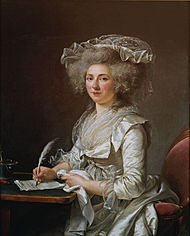
Madam Roland
Miroshka Pomor and Sylvia Koteri
the silly pseudonyms used by two of the Social Revolutionaries .
"...fighting the war to a victorious end."
Kerensky and the Provisional Government used this term (victorious conclusion... etc.) to pledge the continuation of the war against Germany even after the February revolution. The Bolsheviks opposed this idea. The Russian Army had collapsed by July 16 - this section is probably taking place at the end of summer - August sometime.
" You must get your feet on the ground like Antaeus..."
Antaeus (also Antaios) in Greek and Berber mythology was a half-giant, the son of Poseidon and Gaia, whose wife was goddess Tinge. Antaeus had a daughter named Alceis or Barce. Antaeus won all fights as long as he was touching the ground - Heracles beat him by lifting him up.
http://en.wikipedia.org/wiki/Antaeus
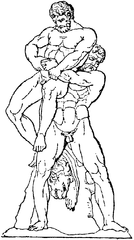
"... an old Bestuzhevist"
A student taking the Bestuzhev university courses for women. The Bestuzhev Courses were the largest and most prominent women's higher education institution in Imperial Russia.
The institute opened its doors in 1878. It was named after Konstantin Bestuzhev-Ryumin, the first director. Other professors included Baudouin de Courtenay, Alexander Borodin, Faddei Zielinski, Dmitry Mendeleyev, Ivan Sechenov, and Sergey Platonov. Nadezhda Krupskaya and Maria Piłsudska were among the graduates. The courses occupied a purpose-built edifice on Vasilievsky Island.
After the Russian Revolution they were reorganized as the Third University of Petrograd, which was merged into the Petrograd University in September 1919.[2]Many of the students were left-wing.

Bestuzhev university
5.
Feast of the Assumption
The Roman Catholic Church teaches as dogma that the Virgin Mary "having completed the course of her earthly life, was assumed body and soul into heavenly glory."[1] This belief is known as the Dormition of the Theotokos by the Eastern and Oriental Orthodox Churches. In the Russian Orthodox Church the Assumption is a major feast day, commonly celebrated on August 15.
http://en.wikipedia.org/wiki/Assumpti...
Hegel and Bendetto Croce
Georg Wilhelm Friedrich Hegel (1770–1831) was a philosophical idealist and the creator of an integral philosophical system that was of great influence on nineteenth- and twentieth-century thought.
6.
"October fighting"
The start of the October Revolution of 1917.
The October Revolution, also known as the Great October Socialist Revolution, Red October, the October Uprising or the Bolshevik Revolution, was a political revolution, mass insurrection and a part of the Russian Revolution of 1917. It took place with an armed insurrection in Petrograd traditionally dated to 25 October 1917 Old Style Julian Calendar (O.S.), which corresponds with 7 November 1917 New Style (N.S.).Gregorian Calendar.
It followed and capitalized on the February Revolution of the same year. The October Revolution in Petrograd overthrew the Russian Provisional Government and gave the power to the local soviets dominated by Bolsheviks. As the revolution was not universally recognized outside of Petrograd there followed the struggles of the Russian Civil War(1917–1923) and the creation of the Soviet Union in 1922.
The revolution was led by the Bolsheviks, who used their influence in the Petrograd Soviet to organize the armed forces. Bolshevik Red Guards forces under the Military Revolutionary Committee began the takeover of government buildings on 24 October 1917 (O.S.). The following day, the Winter Palace (the seat of the Provisional government located in Petrograd, then capital of Russia), was captured.
http://en.wikipedia.org/wiki/Red_Guar...

Red Guard Vulcan Factory workers
The Arbat
The Arbat (Russian Арба́т (help·info)) is an approximately one-kilometer long pedestrian street in the historical centre of Moscow. The Arbat has existed at least since the 15th century, thus laying claim to being one of the oldest surviving streets of the Russiancapital. It forms the heart of the Arbat District of Moscow. Originally the street formed part of an important trade route and was home to a large number of craftsmen.
After the October revolution of 1917, the Bolsheviks confiscated private property on the Arbat, as they did elsewhere in Russia, and made the buildings property of the state. Nevertheless, the street did not immediately lose its reputation as a haunt for artists.
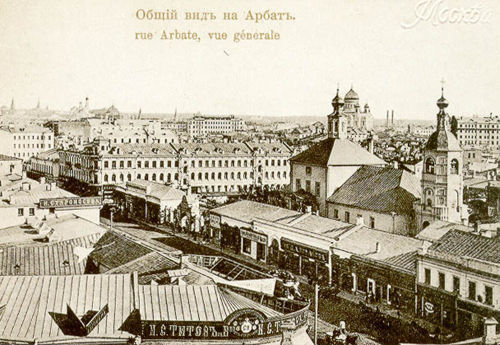
Arabat
"They're fighting in the street."
In September and October 1917, there were strikes by the Moscow and Petrograd workers, the miners of the Donbas, the metalworkers of the Urals, the oil workers of Baku, the textile workers of the Central Industrial Region, and the railroad workers on 44 different railway lines. In these months alone more than a million workers took part in massstrike action. Workers established control over production and distribution in many factories and plants in a social revolution.[1]
http://en.wikipedia.org/wiki/October_...
8.
"...a Soviet of People's Commissars"
The Council of People's Commissars was a government institution formed shortly after the October Revolution in 1917. Created in the Russian Republic the council laid foundations restructuring the country to form the Soviet Union. It evolved to become the highest government authority of executive power under the Soviet system in states which came under the control of Bolsheviks.
http://en.wikipedia.org/wiki/Council_...
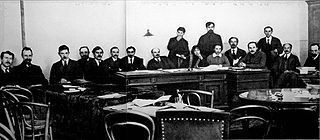
Soviet of People's Commissars
"Kirghiz eyes"
The Kyrgyz (also spelled Kirgiz, Kirghiz) are a Turkic people living primarily in Kyrgyzstan.
http://en.wikipedia.org/wiki/Kyrgyzstan
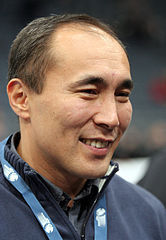
Kirghiz eyes
**
"Pushkin's uncompromising clarity"
Alexander Pushkin (6 June 1799 – 10 February 1837) was a Russian author of the Romantic era [1] who is considered by many to be the greatest Russian poet and the founder of modern Russian literature.
http://en.wikipedia.org/wiki/Alexande...
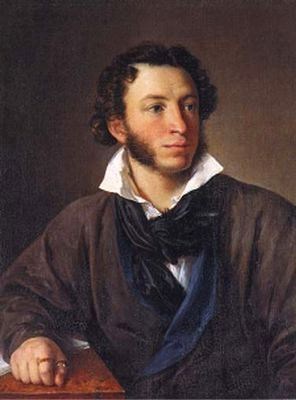
Alexander Pushkin
"Tolstoy's unwavering faithfulness to the facts."
Tolstoy did an incredible amount of research for War and Peace. His books were thought to be historically accurate - "For Tolstoy there could be no compromise between art and truth, or what he believed to be the truth. The vaunted higher truth of art he would not accept if he found it to be at variance with what he considered the truth of life."
http://www.ourcivilisation.com/smartb...

 Leo Tolstoy
Leo Tolstoy9.
"Civil War"
See Message #10 above plus:
The Russian Civil War (1918–1923) broke out after the Bolsheviks assumed power and withdrew from the alliance opposed to the Central Powers in World War I. The Red Army was confronted by various forces from the former empire, known collectively as the White Army, made up of army officers, cadets, landowners, and foreign forces opposed to the revolution. The main White leaders were Generals Yudenich, Denikin, and Wrangel and Admiral Kolchak. Their units fought not only with the Red Army, but also with the Ukrainian nationalist Green Army and the Ukrainian anarchist Black Army led by General Nestor Makhno. T he Whites eventually lost on all fronts, and the major fighting ended in 1922 with the Red Army’s capture of Vladivostok, though the last pocket of White resistance in the Far East capitulated only in June 1923. The events of the civil war form the backdrop of most of book 2 of Doctor Zhivago. (Pevear)
 Chapter 6 - The Moscow Encampment Continued -
Chapter 6 - The Moscow Encampment Continued - NOTE: numbers refer to Part numbers within the chapter
"epidemic"
typhus in Moscow following the Russian Revolution
Between 1918 and 1922 typhus caused at least 3 million deaths out of 20–30 million cases. In Russia after World War I, during a civil war between theWhite and Red armies, typhus killed three million, largely civilians.
http://en.wikipedia.org/wiki/Epidemic...
Triumphal Arch - Moscow:
The third and the oldest surviving Triumphal Arch in Moscow was built in 1829-34 on Tverskaya Gate Square to Joseph Bove's designs in order to commemorate Russia's victory over Napoleon. It replaced an earlier wooden structure built by the veterans of the Napoleonic Wars in 1814.[1]
http://en.wikipedia.org/wiki/Triumpha...
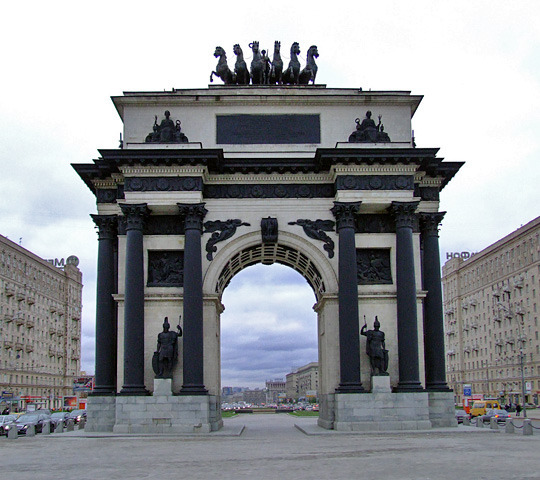
Triumphal Gates on the Poklonnaya_Hill
12
"comrade citizen"
The original (archaic) meaning of the Russian version of this term (товарищ, tovarishch) from Old Turkic tavar ishchi, meant something like "business companion", often "travel (or other adventure) mate", deriving from the noun товар (tovar, i.e., 'merchandise'). In the late 19th century Russian Marxists and other leftist revolutionaries adoptedtovarishch (abbreviated tov.) as a translation of the words for "Comrade" which were used[1][2] as a form of address in international (especially German) Social Democracy and in the associated parts of the workers' movement. For instance, one might be referred to as Comrade Plekhanov or Comrade Chairman, or simply as Comrade. After theRussian Revolution, translations of the term in different languages were adopted by Communists worldwide. As a result, even though many other socialists would continue to use "Comrade" among themselves (e.g., German and Austrian social-democrats and, for a long time, members of the British Labour Party), it became most strongly associated in public consciousness with "Soviet-style" Communism of the Marxist-Leninist, Stalinist and Trotskyist varieties. This is exemplified in its mocking use in stereotypical portrayals of the Soviet Union in Cold War films and books.
http://en.wikipedia.org/wiki/Comrade#...
astrakhan cape -
a cape made of special lamb's wool
 Chapter 7 - Train to the Urals
Chapter 7 - Train to the Urals Note: numbers refer to sections within the chapter.
1.
The end of March
The Treaty of Brest-Litovsk was a peace treaty signed on March 3, 1918 at Brest-Litovsk (now Brest, Belarus) between Russia (the Russian Soviet Federated Socialist Republic) and the Central Powers marking Russia's exit fromWorld War I.
2.
Yaroslavsky Station
The first Yaroslavsky Terminal was built on this site in 1862, next to the Moscow's first rail terminal. The existing Neorussian revival building facing Komsomolskaya Square was built in 1902–1904 by Fyodor Shechtel.
http://en.wikipedia.org/wiki/Yaroslav...

Yaroslavsky Station
3.
"credit slips for an allotment of articles from the first of the newly opened distribution centers"
As a result of the acute shortages that followed the war and the revolution, the authorities of the first socialist republic created closed stores where the privileged could obtain supplies in exchange for special coupons. The practice continued throughout the Soviet period.
Simonov Monastery
Simonov monastery in Moscow was established in 1370 by monk Feodor, a nephew and disciple of St Sergius of Radonezh.
The monastery land formerly belonged to Simeon Khovrin, a boyar of Greek extraction and progenitor of the great clan ofGolovins. He took monastic vows in the cloister under the name Simon (hence the name); many of his descendants are also buried there. In 1379, the monastery was moved half a mile to the east. Its original location, where bodies of the warriors killed in the Battle of Kulikovo had been buried, is still commemorated by the old Simonov church.
http://en.wikipedia.org/wiki/Simonov_...
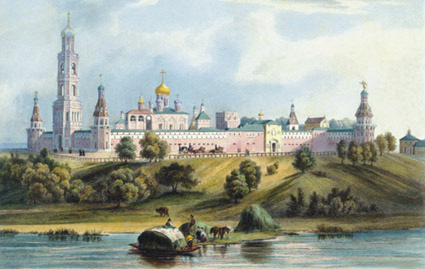
A 19th-century watercolour view of the monastery.
4.
Kerenkas
Kerenka was an informal name of paper banknotes issued by the Russian Provisional Government in 1917, named so after the chairman Alexander Kerensky. They were also issued by the Gosbank of the Soviet Russia during 1917-1919 from the same plates until the introduction of sovznaks in 1919.
http://en.wikipedia.org/wiki/Kerenka

Kerenka' of Soviet Russia, 250 roubles. Front.
7.
"forced labor from Petrograd"
By a decree issued in December 1918, all able-bodied citizens of the RSFSR were obliged to work on state construction projects. The name of St. Petersburg was changed to Petrograd in 1914, after the outbreak of World War I. In 1924 it became Leningrad, and in 1991 it became St. Petersburg again.
11.
Apraksin Yard
Apraksin Yard (also Apraxin Dvor; Russian: Апраксин Двор) is a department store in Saint Petersburg, Russia. The buildings of Apraksin Dvor nestle between Sadovaya Street and the Fontanka River.
The first market on the spot originated in the mid-18th century, deriving its name from Count Apraksin who owned the plot. After a merchant named Shchukin purchased a portion of it, that part became known as Shchukin Dvor. The market buildings were wooden and burnt to the ground in 1782.
13.
"stormy petrels"
The revolution started with a rising among the sailors of the Baltic fleet. The reference is to htis and also to Gorky's story of the same name. In 1901, Maxim Gorky (see part 2, note 7) published a poem entitled “The Song of the Stormy Petrel,” in which the petrel symbolizes the working class as a revolutionary force. He was arrested for publishing it but soon set free. The poem, which was one of Lenin’s favorites, became a battle song of the revolution. (Pevear)
14.
Poor Peasant's Committee
The Poor Peasant's Committees were established during the second half of 1918 as local institutions bringing together impoverished peasants to advance government policy. The committees were primarily in charge of grain requisitioning on behalf of the Soviet state as well as the rural distribution of manufactured goods. The kombeds quickly fell into disrepute among the bulk of the peasantry over the abuses of their members, who were often outsiders to the village and who were paid a commission by the state for all grain obtained. The need of the Bolshevik government to establish closer relations with the peasantry during the Russian Civil War lead to the merger of the Committees of Poor Peasants with the village soviets starting in December 1918.
Tartars
Tatars (Tatar: Tatarlar / Татарлар, sometimes spelled Tartars) are a Turkic people, numbering around 7 million. The majority of Tatars live in the Russian Federation, with a population of 5.5 million, 2 million of which in the republic of Tatarstan, 1 million in the republic of Bashkortostan and other 2.5 million in different regions of Russia. Significant minority populations are found in Uzbekistan, Kazakhstan, Kyrgyzstan and Ukraine.
15.
Pushkin's story about the Pugachev uprising and of some places described by Aksakov
Yemelyan Ivanovich Pugachov (e. 1742 – 21 January [O.S. January 10] 1775) was a pretender to the Russian throne who led a great Cossack insurrection during the reign of Catherine II. Alexander Pushkin wrote a remarkable history of the rebellion, "The History of Pugachov," and he recounted some of the events in his novel The Captain's Daughter (1836).
The Aksakov family, the father Sergei (1791–1859) and his two sons, Konstantin (1817–1860) and Ivan (1823–1886), were writers belonging to the group known as Slavophiles, who favored the native and local traditions of Russian life as opposed to Western influences. Sergei Aksakov, who was born in Ufa, the capital of Bashkiria, over a thousand miles east of Moscow on the border of Asia, gives a detailed description of Russian patriarchal life, hunting, fishing, flora, and fauna in his Family Chronicle (1856).
"kulaks"
Literally, "fist," by extension "tight-fisted;" kurkuls in Ukraine, also used in Russian texts in Ukrainian contexts) were a category of relatively affluentfarmers in the later Russian Empire, Soviet Russia, and early Soviet Union. The word kulak originally referred to independent farmers in the Russian Empire who emerged from the peasantry and became wealthy following the Stolypin reform, which began in 1906.
According to the political theory of Marxism-Leninism of the early 20th century, the kulaks were class enemies of the poorer peasants.
http://en.wikipedia.org/wiki/Kulak
20
Yuriatin
Perm is the town fictionalized as Yuriatin in Dr. Zhivago.
http://en.wikipedia.org/wiki/Doctor_Z...
After the outbreak of the Russian Civil War, Perm became a prime target for both sides because of its military munitionsfactories. In December 1918, the Siberian White Army under Anatoly Pepelyayev (who acknowledged the authority of theOmsk Government of Aleksandr Kolchak), took Perm. In 1919, the city was retaken by the Red Army.
Grand Duke Mikhail Alexandrovich was executed in the outskirts of Perm with his secretary Nicholas Johnson on June 12, 1918 on the orders of the Perm Cheka.[citation needed] Their bodies were never recovered. A few weeks later on July 7, 1918,Andronic Nikolsky, the Archbishop of Perm, was also murdered by the Bolsheviks in the city.[citation needed] In 2000, the Russian Orthodox Church glorified him as Hieromartyr Andronik, Archbishop Of Perm, one of the Russian New Martyrs and Confessors
http://en.wikipedia.org/wiki/Perm

Perm ca. 1910

Ural Railway Administrationin Perm
21
Hetman
the highest military office, and head of state, in Ukraine's Cossack Hetmanate. The title was used by Ukraine's Cossacks from the 16th century, and by the Czechs in Bohemia from the Hussite Wars (15th century) on. Hejtmanis today the term for the elected governor of a Czech region (kraj). http://en.wikipedia.org/wiki/Hetman
On April 29, 1918 the head of the German group army Kiew (Heeresgruppe Kiew), Hermann von Eichhorn organized a coup and appointed the Conservative General Pavlo Skoropadsky (commander of the first Russian Corps and later leader of the Free Cossacks) as Hetman of what was termed the Ukrainska Derzhava or Ukrainian State. That day Skoropadsky issued his manifesto (hramota) to the All-Ukrainian Nation and the laws of the Provisional State System. The Austro-Hungarian and German occupiers, wanting stability above all else, welcomed the coup; Skoropadsky co-operated with them, making him unpopular among many Ukrainian peasants. The new state retained the tryzub and the national colors, but reversed the flag design to light blue over yellow. The Sich Riflemen opposed the coup and were disbanded along with the "Bluecoats" (a Ukrainian division named after their blue uniforms and formed from POWs in Germany and Austria).
http://en.wikipedia.org/wiki/Ukrainia...
23
"populist"
Left-wing idealists who devoted themselves to work among the people.
31
"the Greens"
he Green armies or Greens were armed peasant groups which fought against all governments in the Russian Civil War. They fought to protect their communities from requisitions or reprisals by either side. Closely associated with the Socialist-Revolutionary Party, by far the largest grouping of the Russian Constituent Assembly, the Green Armies had— at least tacit — support throughout much of Russia. However, the Green Armies' primary base, the peasantry, were largely reluctant to wage an active campaign during the Russian Civil War. The White Army eventually subsumed much of the armed strength of the Green Armies.
The Cheka
Cheka or Emergency Commission Russian pronunciation: was the first of a succession of Soviet state security organizations. It was created by a decree issued on December 20, 1917, by Vladimir Lenin and subsequently led by aristocrat-turned-communist Felix Dzerzhinsky.[1] After 1922, the Cheka underwent a series of reorganizations into bodies whose members continued to be referred to as "Chekisty" (Chekists) into the late 1980s.[2]
http://en.wikipedia.org/wiki/Cheka

Members of the presidium of VCheKa
 Chapter 8 Arrival
Chapter 8 Arrival 2.
St. Akulina's day
Aquilina was born of Christian parents in Biblus, Phoenicia. She was arrested during Diocletian's persecution of Christian, and though only twelve, was beaten and decapitated by order of the magistrate, Volusian, when she would not renounce her Faith. Her feast day is June 13th.
http://en.wikipedia.org/wiki/Aquilina
http://www.catholic.org/saints/saint....
3.
A Social Democrat
The Russian Social Democratic Labour Party, also known as Russian Social Democratic Workers' Party or Russian Social Democratic Party, was a revolutionary socialist Russian political party formed in 1898 in Minsk to unite the various revolutionary organizations into one party. The RSDLP later split into Bolshevik and Menshevik factions, with the Bolsheviks eventually becoming the Communist Party of the Soviet Union. The Mezhraiontsy were also formed from this party.
http://en.wikipedia.org/wiki/Russian_...
4.
The Demidovs
The Demidov family, also Demidoff, were an influential Russian merchant, industrialist and later chivalryfamily, possibly second only to the Tsar himself in wealth during the late 18th and early 19th centuries. Anatoli Nikolaevich Demidov (1813-1870) acquired the Italian title of Prince of San Donato and built a villa in Florence.
http://en.wikipedia.org/wiki/Demidov
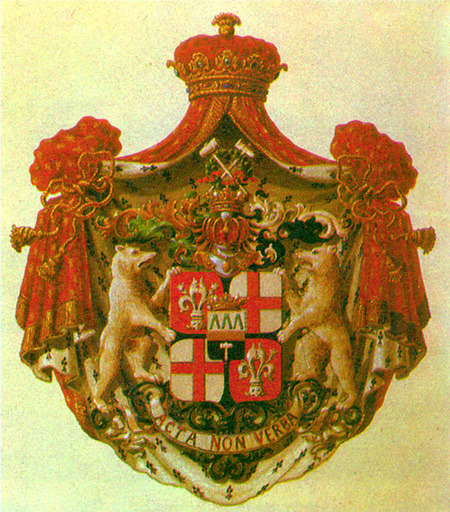
Demidov coat of arms

Demidov villa near Florence
"That's our famous highway. It runs right across Siberia."
Perm was meant to develop mining and metallurgical industries in Russia. The town was situated on the Kama banks and through the Kama ports ships loaded with iron, salt and furs went to Moscow and Saint Petersburg, down the Kama and Volga. From the east town gate Siberian highway led to Asia and Perm was called "the gates of Siberia".
http://www.permian.ru/historical/002.htm
6.
When was Suvorov born?
Suvorov was one of the few generals in history (along with Alexander the Great, Lucius Cornelius Sulla, and Genghis Khan) who had never lost a battle. He was famed for his military manual The Science of Victory, and noted for several of his sayings, including "What is difficult in training will become easy in a battle", "
http://en.wikipedia.org/wiki/Alexande...

Alex Suvorov
Social Revolutionary
The Party of Socialists-Revolutionaries (PSR, the SRs, or Esers; Russian: Партия социалистов-революционеров (ПСР), эсеры) was a major political party in early 20th century Russia and a key player in the Russian Revolution. After the February Revolution of 1917 it shared power with other liberal and democratic socialist forces within the Russian Provisional Government. In November 1917, it won a plurality of the national vote in Russia's first-ever democratic elections (to the Russian Constituent Assembly), but soon split and the remaining faction of this party who remained loyal to Alexander Kerensky was defeated and destroyed by theBolsheviks in the course of the Russian Civil War and subsequent persecution.
http://en.wikipedia.org/wiki/Socialis...

Socialist-Revolutionary election poster, 1917. In English, the caption in red reads "Party of the Socialist Revolutionaries." The banner bears the party's motto ""In struggle you take your rights", and the globe bears the slogan "land and freedom" expressing agrarian socialist ideology of the party.
Constituent Assembly
The All Russian Constituent Assembly was a constitutional body convened in Russia after theOctober Revolution of 1917. It is generally recognized as the first democratically elected legislative body of any kind in Russian history. It met for 13 hours, from 4 p.m. to 5 a.m., 18–19 January [O.S.5–6 January] 1918, whereupon it was dissolved by the Bolshevik-Left SR coalition government.
http://en.wikipedia.org/wiki/Russian_...
8
Taiga
Taiga (from Turkic[1] or Mongolian), also known as the boreal forest, is a biome characterized by coniferous forests.
Taiga is the world's largest terrestrial biome. In North America it covers most of inland Canadaand Alaska as well as parts of the extreme northern continental United States and is known as the Northwoods.[2] It also covers most of Sweden, Finland, much of Norway, much of Russia(especially Siberia), northern Kazakhstan, northern Mongolia, and northern Japan (on the island of Hokkaidō).
http://en.wikipedia.org/wiki/Taiga
"... like unto the children of Abrahamin the Persian furnace!"
Daniel 3:8–30 tells the story of the three Hebrew men thrown into the fiery furnace by the Babylonian king Nebuchadnezzar for refusing to worship his golden idol.
http://orthodoxwiki.org/Three_Holy_Ch...
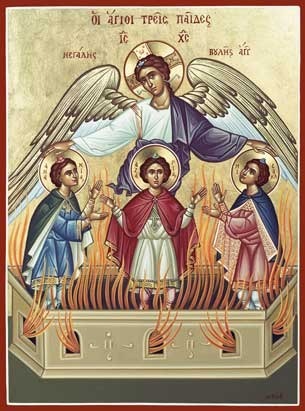
Prayer of the Three Holy Children
9.
" ' we see as in a glass darkly"
"Through a glass, darkly"
From 1 Corinthians 13:12 contains the phrase which is rendered in the KJV as "For now we see through a glass, darkly." This passage has inspired the titles of many works.
The word "esoptron" here translated as glass, is ambiguous, possibly referring to a mirror or a lens. Influenced byStrong's Concordance, many modern translations conclude that this word refers specifically to a mirror.[4]
http://en.wikipedia.org/wiki/Through_...
Janizaries
The Janissaries (from Ottoman Turkish meaning "new soldier", Albanian:Jeniçer, Bosnian: Janičari, Hungarian: Janicsár, Croatian: Janjičari, Romanian: Ieniceri,Serbian: Janjičari, Bulgarian: еничари) were infantry Musketeer units that formed the Ottomansultan's household troops and bodyguards. The force was created by the Sultan Murad I fromChristian boys levied through the devşirme system from conquered countries in the 14th century[1] and was abolished by Sultan Mahmud II in 1826 in the Auspicious Incident.[2]
http://en.wikipedia.org/wiki/Janissary

Janissary
10.
"Can you tell me the year of Griboedov's death?"
Aleksander Sergeyevich Griboyedov (January 15, 1795 – February 11, 1829) was a Russian diplomat, playwright, poet, and composer. He is recognized as homo unius libri, a writer of one book, whose fame rests on the verse comedy Woe from Wit (or The Woes of Wit). He was Russia's ambassador to Qajar Persia, where he and all the embassy staff were massacred by an angry mob.
http://en.wikipedia.org/wiki/Aleksand...
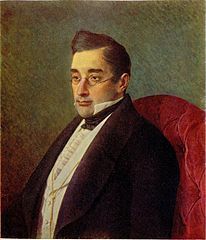
Griboyedov
 From http://fatherlouie.blogspot.com/2007/... - with thanks to G.
From http://fatherlouie.blogspot.com/2007/... - with thanks to G. boris pasternak - sacramental revolution
Throughout his writings, Merton attempts to define and articulate a “way of being” in which one can be fully human and “free”. Though he delves deeply into the various aspects of monastic history and reform, his thoughts are not just for the monks, but for all of us. Merton repeatedly speaks of the “new man”.
Boris Pasternak represented, for Merton, a man who had tapped into human truth and freedom as expressed by the individual, and become a “new man”. In many ways, Pasternak is the mirror image of the Zen monk. His writing is filled with Christian images, beauty, love, human emotion, the specifics of life. Merton calls Pasternak’s images: “primitive, pre-Christian”, deeply sincere and utterly personal.
Pasternak was repressed, pressured and bullied by the Communist government. In 1958 the Nobel Prize for literature was offered to him. Under Soviet pressure, Pasternak refused the prize. He also refused an opportunity to “escape” from Soviet Russia, saying that he did not feel he could be happy anywhere else.
Merton says that Pasternak was not a rebel, but a true revolutionary, like Gandhi:
“Pasternak is then not just a man who refuses to conform (that is to say, a rebel). The fact is, he is not a rebel, for a rebel is one who wants to substitute his own authority for the authority of somebody else. Pasternak is one who CANNOT conform to an artificial and stereotyped pattern because, by the grace of God, he is too much alive to be capable of such treason to himself and to life. … Though different [from Gandhi] in so many ways, his protest is ultimately the same: the protest of life itself, of humanity itself, of love …” (p.11)
This seems very important to me: how to protest. - how to stand, with one’s life, in opposition to the crass materialism, violence, falsity and blasphemy that parade around as “the real world”.
**
Thomas Merton, O.C.S.O. (January 31, 1915 – December 10, 1968) was an Anglo-American Catholic writer and mystic. A Trappist monk of the Abbey of Gethsemani, Kentucky, he was a poet, social activist, and student of comparative religion. In 1949, he was ordained to the priesthood and given the name Father Louis.
http://en.wikipedia.org/wiki/Thomas_M...
 Chapter 9 - Varykino
Chapter 9 - VarykinoNote: numbers refer to sections within the chapter.
1.
Tiutchev
Fyodor Ivanovich Tyutchev (Russian: Фёдор Ива́нович Тю́тчев, Pre-Reform orthography: December 5 [O.S. November 23] 1803 – July 27 [O.S. July 15] 1873) is generally considered the last of three great Romantic poets of Russia, following Alexander Pushkin and Mikhail Lermontov. Pasternak felt a close affinity with Tyutchev - the poem being quoted is "The Summer of 1854."
http://en.wikipedia.org/wiki/Fyodor_T...
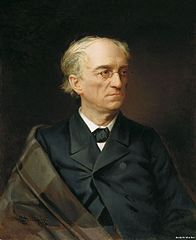
Fyodor Tyutchev
"... as familiar with Dostoievsky’s Possessed as with the Communist Manifesto..."
Dostoevsky’s 1872 novel was, among other things, a forceful attack on the radicals and nihilists of the later nineteenth century. The Communist Manifesto, written by Karl Marx and Friedrich Engels and published in 1848, set forth the revolutionary program of the German Communist League.
3.
"For He that is mighty hath done to me great things." - "He is her glory."
Pray fervently … he is her glory: The first words come from an Orthodox prayer to the Mother of God; the rest are from the Song of the Mother of God (the Magnificat), Luke 1:46–55.
(Pevear)
6.
Nekrassov
Nikolay Alexeyevich Nekrasov was a Russian poet, writer, critic and publisher, whose deeply compassionate poems about peasant Russia won him Fyodor Dostoyevsky's admiration and made him the hero of liberal and radical circles of Russian intelligentsia, as represented by Vissarion Belinsky and Nikolay Chernyshevsky. He is credited with introducing into Russian poetry ternary meters and the technique of dramatic monologue (V doroge, 1845).[1] As the editor of several literary journals, including Sovremennik, Nekrasov was also singularly successful. Radical leanings, strong social conscience,
http://en.wikipedia.org/wiki/Nikolay_...
8.
"... the nickname Nightingale for the brigand son ..."
Nightingale the Robber: A monstrous figure, part bird, part man, who appears in the medieval Russian epic Ilya Muromets and Nightingale the Robber, from which Zhivago proceeds to quote. Nightingale the Robber or Solovei the Brigand, also known as Solovey Odikhmantievich, was an epic robber from bylinas poetry of Kievan Rus'.
http://en.wikipedia.org/wiki/Nighting...

Ilya Muromets and Nightingale the Robber, by Ivan Bilibin.
"Turgenev somewhere describes these whistling, fluting modulations."
Turgenev's late collection, Literary Reminiscences (1874) includes a piece entitled "About Nightingales."
9.
"The grassy smell of earth and young leaves made her head ache, like a Shrovetide surfeit of pancakes and vodka."
(Pevear simply calls Shrovetide or Maslenitsa as "the week before Lent.")
Maslenitsa, (also known as Butter Week, Pancake week or Cheesefare Week), is an Eastern Slavic religious and folk holiday. It is celebrated during the last week before Great Lent—that is, the seventh week before Pascha (Easter). Maslenitsa corresponds to the Western Christian Carnival, except that Orthodox Lent begins on a Monday instead of a Wednesday. The Orthodox date of Easter can differ greatly from the Western Christian date. In 2008, for example, Maslenitsa was celebrated from March 2 to March 8 and in 2012 it is celebrated from February 20 to February 26.
Maslenitsa has its origins in both pagan and Christian traditions. In Slavic mythology, Maslenitsa is a sun festival, celebrating the imminent end of the winter.
http://en.wikipedia.org/wiki/Maslenitsa

Maslenitsa, Boris Kustodiev, 1919 (Isaak Brodsky Museum, St. Petersburg)
16.
"Awake oh my soul, why dost thou slumber?"
Pasternak originally wrote these words in Church Slavonic. They come from the Great Canon of St. Andrew of Crete (650–712), an Orthodox penitential canon sung during the Great Lent. (Pevear)
 Pasternak 's conversion to Christianity also creates a conflict. According to this link, http://fmls.oxfordjournals.org/conten...
Pasternak 's conversion to Christianity also creates a conflict. According to this link, http://fmls.oxfordjournals.org/conten...the religion is for Pasternak a 'source of inspiration'. It also points out that Christianity is having less of an impact on society than it had previously. So where does this leave Pasternak - free will, or following a religious path?
 Very interesting addition, G. thanks - lots to ponder.
Very interesting addition, G. thanks - lots to ponder. From that link: http://fmls.oxfordjournals.org/conten...
"Thus, in relation to the Christian tradition, Pasternak was both a participant and an outsider."
Sounds very much like both Lara and Yura. She goes to church although she does not believe - Ch.2.17
Lara was not religious. She did not believe in ritual. But sometimes, to be able to bear life, she needed the accompaniment of an inner music.
Yuri comforts Anna with religious discussion and then wonders about himself: Ch.3.3
“What’s come over me?” he thought. “I’m becoming a regular quack—muttering incantations, laying on the hands. ...”
I think those two are a lot alike and like Pasternak, too. They're also both orphans by now.
 Chapter 10 - The Highway
Chapter 10 - The Highway Note: Numbers refer to sections within the chapter
1.
Siberian Provisional Government
The Provisional Government of Autonomous Siberia (PGAS), was an ephemeral government forSiberia created by the White movement.
After the Bolsheviks' seizure of power in Petrograd, All-Siberian Extraordinary Congress of Delegates from Public Organizations, was convened in Tomsk on December 7, 1917. The SR-dominated assembly refused to recognize Soviet authority or its decrees, and during its last session on December 15 called for the convocation of an “all-socialist” Siberian Regional Duma and appointed a Provisional Siberian Council, answerable to the Duma, that would “act as a government.” The opening of the Duma was set for January 8, 1918.
http://en.wikipedia.org/wiki/Provisio...
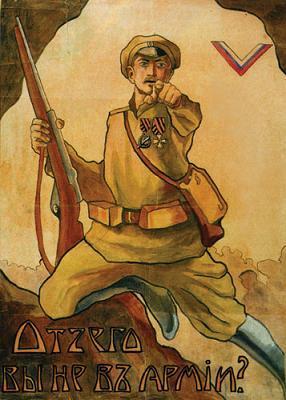
Why aren't you in the army?" Volunteer Army recruiting poster during the Russian Civil War.
"oldest highway in Siberia" "caravans of tea"
"The oldest part of the Trans-Siberian Highway - The Siberian Route, also known as the Moscow Route (Moskovsky trakt) and Great Route (Bolshoi trakt), was a historic route that connected European Russia to Siberia and China. Previously Siberian transport had been mostly by river via Siberian River Routes. The construction of the road was decreed by the Tsar two months after the conclusion of the Treaty of Nerchinsk, on 22 November 1689, but it did not start until 1730 and was not finished until the mid-19th century.
The route started in Moscow as the Vladimir Highway and passed through Murom, Kozmodemyansk, Kazan, Perm, Kungur,Yekaterinburg, Tyumen, Tobolsk, Tara, Kainsk, Tomsk, Yeniseysk and Irkutsk. After crossing Lake Baikal the road split nearVerkhneudinsk. One branch continued east to Nerchinsk while the other went south to the border post of Kyakhta where it linked to camel caravans that crossed Mongolia to a Great Wall gate at Kalgan.
In the early 19th century, the route was moved to the south. From Tyumen the road proceeded through Yalutorovsk, Ishim, Omsk,Tomsk, Achinsk and Krasnoyarsk before rejoining the older route at Irkutsk. It remained a vital artery connecting Siberia with Moscowand Europe until the last decades of the 19th century, when it was superseded by the Trans-Siberian Railway and Amur Cart Road. The automobile equivalent is the Trans-Siberian Highway.
The Siberian Route was also known as the Tea Road, owing to the great quantities of tea that were transported from China to Europe through Siberia. Charles Wenyon, who passed by the "Great Post Road" in 1893, subscribed to the popular belief that "the best tea produced in China goes to Russia".[1] In 1915 China exported to Siberia 70,297 tons of tea, which accounted for 65% of the country's overall tea exports.[2] The route is the namesake of the Russian Caravan blend of tea.
It was imported primarily in the form of hefty hard-packed tea bricks which allowed each camel to carry large quantities in a more compact manner[3] and could also pass for units of currency. From Kyakhta tea was transported to the Irbit fair for further commercial transactions. Another popular Chinese import item was dried rhubarb root, which was sold west of St. Petersburg "for fifteen times what it cost in Kyakhta".[4]
The Siberian Route was also known as the Tea Road, owing to the great quantities of tea that were transported from China to Europe through Siberia. Charles Wenyon, who passed by the "Great Post Road" in 1893, subscribed to the popular belief that "the best tea produced in China goes to Russia".
http://en.wikipedia.org/wiki/Siberian...
[image error]
trade in Irkutsk
"Admiral Kolchak - Supreme Ruler"
Alexander Vasilyevich Kolchak (Russian: Алекса́ндр Васи́льевич Колча́к, 16 November [O.S. 4 November] 1874 – 7 February 1920) was a Russian naval commander, polar explorer and later - the Supreme ruler of the counter-revolutionary anti-communist White forcesduring the Russian Civil War. As Supreme ruler of Russia (1918–1920), he was recognized in this position by all the heads of the White movement, "De jure" - Kingdom of Serbs, Croats and Slovenes, "De facto" - Entente States. He was also a prominent expert on naval mines[2] and a member of the Russian Geographical Society.[3] Among Kolchak's awards are the St. GeorgeGold Sword for Bravery given for his actions in the battle of Port Arthur[3] and the Great Gold Constantine Medal from the Russian Geographic Society. When the Bolsheviks took over Kolchak was shot against orders from Moscow.
http://en.wikipedia.org/wiki/Alexande...
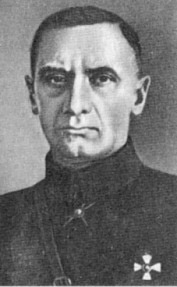
Admiral Kolchak
2.
Vozdvizhensky Monastery
named for the feast of the elevation of the Holy Cross
(Pevear)
"Rejoice, life-giving Cross, unconquerable victory of piety."
words from a hymn for the feast
(Pevear)
"Holy Week, the end of the Great Lent."
The Great Lent is the 40 days leading up to Holy Week and then to Easter. Easter is the biggest religious holiday in Russia - greater even than Christmas.
Holy Week in Eastern Orthodoxy
Eastern Orthodoxy
In the Orthodox Church, Great Lent ends on the Friday before Palm Sunday, though the faithful will continue fasting until Pascha (Easter). The day before Palm Sunday is called Lazarus Saturday and commemorates the resurrection of Lazarus. On Lazarus Saturday wine and oil are allowed (and, in the Russian tradition, caviar). Palm Sunday is considered one of the Great Feasts of the Lord, and is celebrated with fish, wine and oil. Because it is a Great Feast of the Lord, the normal Resurrectional elements of the Sunday All Night Vigil are omitted; however, these resurrectional elements are inserted into the Lazarus Saturday service with its theme of anticipating the Resurrection of Jesus.
Holy Week is referred to as "Great and Holy Week". Orthros (Matins) services for each day are held on the preceding evening. Thus, the Matins service of Great Monday is sung on Palm Sunday evening, and so on. This permits more of the faithful to attend, and shows that during Holy Week the times are out of joint—Matins ends up being served in the evening, and in some places Vespers is served in the morning.
Fasting during Great and Holy Week is very strict. Dairy products and meat products are strictly forbidden. On most days, no alcoholic beverages are permitted and no oil is used in the cooking. Friday and Saturday are observed as strict fast days, meaning that nothing should be eaten on those days. However, fasting is always adjusted to the needs of the individual, and those who are very young, ill or elderly are not expected to fast as strictly. Those who are able to, may receive the blessing of their spiritual father to observe an even stricter fast, whereby they eat only two meals that week: one on Wednesday night and one after Divine Liturgy on Thursday.
** Great and Holy Monday through Wednesday
In Eastern Orthodoxy the day begins at sunset, so the first service of each day is Vespers, at which sticheraare chanted commemorating the theme of the day.
The Orthros services of Palm Sunday through Tuesday evenings are often referred to as the "Bridegroom Prayer", because of their theme of Christ as the Bridegroom of the Church, a theme expressed in thetroparion that is solemnly chanted during them. On these days, an icon of the "Bridegroom" is placed on ananalogion in the center of the temple, portraying Jesus wearing the purple robe of mockery and crowned with a crown of thorns (see Instruments of the Passion). The same theme is repeated in the exapostilarion, a hymn which occurs near the end of the service. These services follow much the same pattern as services on weekdays of Great Lent. The services are so laid out that the entire Psalter (with the exception of KathismaXVII) is chanted on the first three days of Holy Week. The canon that is chanted on these days is a "Triode", i.e., composed of three odes instead of the usual nine odes (the canon of Holy and Great Tuesday is a "Diode", having only two odes).
Towards the end of the Tuesday evening Bridegroom service (Orthros for Great and Holy Wednesday), theHymn of Kassiani is sung. T
The Byzantine musical composition expresses the poetry so strongly that it leaves many people in a state of prayerful tears. The Hymn can last upwards of 25 minutes and is liturgically and musically a highpoint of the entire year.
On Great and Holy Monday, Tuesday and Wednesday the Divine Liturgy of the Presanctified Gifts is celebrated, at which the faithful may receive Holy Communion from the reserved Holy Mysteries. This service combines Vespers with a Communion Service. Each of these services has a reading from the Gospel which sets forth the theme for the day.
http://en.wikipedia.org/wiki/Holy_Wee...
 Chapter 10 cont.
Chapter 10 cont.Chapter 10 - The Highway (cont)
Note -numbers refer to sections of the chapter
**Great and Holy Thursday

Orthodox icon of Christ washing the feet of the Apostles.
In many churches, especially Greek Orthodox, a service of Anointing (Holy Unction) is held on Wednesday evening, following the Presanctified Liturgy. This is in commemoration of the anointing of Jesus, and a preparation of the faithful to enter with Christ into his death and Resurrection. Those who wish to receive Holy Communion on Great and Holy Thursday, are encouraged to receive the Holy Mystery of Unction.
Orthros of Great and Holy Thursday does not follow the format of Great Lent (with the singular exception of chanting Alleluia in place of God is the Lord), but is celebrated as outside Lent, having a complete canon. Also, beginning at this service there will be no more reading of the psalter for the rest of Holy Week, with the exception of kathisma XVII at Orthros of Great and Holy Saturday.
Divine Liturgy of the Last Supper is held on the morning of Great and Holy Thursday, combining Vespers with the Liturgy of Saint Basil the Great. There is a custom among some churches to place a simple white linnen cloth over the Holy Table (altar) for this Liturgy, reminiscent of the Last Supper. In cathedrals andmonasteries it is customary for the bishop or hegumen (abbot) to celebrate the Washing of Feet. When it is necessary for an autocephalous church to consecrate more chrysm the primate of that church will consecrate it at this Liturgy.
Great and Holy Thursday is the only day during Holy Week when those observing the strict tradition will eat a cooked meal, though they will not do so until after the dismissal of the Liturgy. At this meal wine and oil are permitted, but the faithful still abstain from meat and dairy products.
Great and Holy Friday
Matins of Great and Holy Friday is celebrated on the evening of Holy Thursday. During this service, twelve Matins Gospels are chanted, from which this service derives its name of "Matins of the Twelve Gospels". These Gospel lessons recount in chronological order the events from the Last Supper though the Crucifixion and burial of Jesus. At one point, when we reach the first Gospel which speaks of the Crucifixion, there is a custom for the priest to bring out a large cross with an icon the crucified Christ attached to it, and places it in the center of the nave for all the faithful to venerate. This cross will remain in the center of the church until the bringing out of the plashchanitza the next evening.
** On Great and Holy Friday morning the Royal Hours are served. These are a solemn celebration of the Little Hours with added hymns and readings.
The Epitaphios (Plashchanitza) placed in the nave of the church for the faithful to venerate. The Gospel Book rests in the center.
Vespers of Great and Holy Friday (Vespers of the Deposition from the Cross) is held in the morning or early afternoon of Great and Holy Friday. The figure of Christ is taken down from the Cross, and a richly-embroidered cloth icon called the Epitaphios (Church Slavonic: Plashchanitza) depicting Christ prepared for burial is laid in a "Tomb" decorated with flowers. At the end of the service all come forward to venerate the Epitaphios.
** Great and Holy Saturday
Matins of Great and Holy Saturday is held on Friday evening. The service is known as the "Orthros ofLamentations at the Tomb", because the majority of the service is composed of the clergy and faithful gathered around the tomb, chanting the "Lamentations" interspersed between the verses of Kathisma XVII (Psalm 118. At a certain point the priest sprinkles the tomb with rose petals and rose water. Near the end of the service, the Epitaphios is carried in a candlelit procession around the outside of the church as the faithful sing the Trisagion.
Vespers joined to the Divine Liturgy is served on Great and Holy Saturday, prescribed by the Liturgical books to be served in the afternoon but often served in the morning. This is the Proti Anastasi (First Resurrection) service, commemorating the Harrowing of Hell. Just before the reading of the Gospel, the hangings and vestments and changed from dark lenten colors to white, and the entire mood of the service changes from mouring to joy. However, the faithful do not yet greet one another with the Paschal kiss, since the Resurrection has not yet been announced to the living.
If there are catechumens who are prepared for baptism they will usually be baptized and chrismated following the Liturgy of Great and Holy Saturday.
On Saturday night, the Paschal Vigil begins around 11:00 pm with the chanting of the Midnight Office. Afterwards, all of the lighting in the church is extinguished and all remain in silence and darkness until the stroke of midnight. Then, the priest lights a single candle from the eternal flame on the altar (which is never extinguished). The light is spread from person to person until everyone holds a lighted candle. Then a procession takes place circling around the outside of the church, recreating the journey of the Myrrh Bearersas they journeyed to the Tomb of Jesus on the first Easter morning. The procession stops in front of the closed doors of the church. The opening of these doors symbolized the "rolling away of the stone" from the tomb by the angel, and all enter the church joyfully singing the Troparion of Pascha. Paschal Orthros begins with an Ektenia (litany) and the chanting of the Paschal Canon. One of the highpoints is the sharing of thepaschal kiss and the reading of the Hieratikon (Catechetical Homily of John Chrysostom) by the priest. The Divine Liturgy follows, and every Orthodox Christian is encouraged to confess and receive Holy Communionon this holiest day of the year. A breakfast usually follows, sometimes lasting till dawn. Slavs bring Easter baskets filled with eggs, meat, butter, and cheese—foods from which the faithful have abstained during Great Lent -- to be blessed by the priest which are then taken back home to be shared by family and friends with joy.
On the afternoon of Easter Day, a joyful service called "Agape Vespers" is celebrated During this service the Great Prokeimenon is chanted and a lesson from the Gospel (John 20:19-25) is read in as many different languages as possible, accompanied by the joyful ringing of bells.

Agape Vespers
http://en.wikipedia.org/wiki/Holy_Wee...
"...three age groups were drafted."
In 1919, the Don Cossacks joined and the Army began drafting Ukrainian peasants.
(Pevear)
 Chapter 10 The Highway (continued)
Chapter 10 The Highway (continued)Note: numbers refer to sections of the chapter.
3.
"At the seventh canonical hour, at one in the morning by the clock."
As in the Jewish tradition, the day starts at 6:00 pm.
Maundy Thursday (the Thursday prior to Easter - a part of Holy Week)
Maundy Thursday (also known as Holy Thursday, Covenant Thursday, Great and Holy Thursday,Sheer Thursday and Thursday of Mysteries) is the Christian feast, or holy day, falling on the Thursday before Easter. It commemorates the Maundy and Last Supper of Jesus Christ with the Apostles as described in the Canonical gospels.[1] It is the fifth day of Holy Week, and is preceded by Spy Wednesdayand followed by Good Friday.[2]
http://en.wikipedia.org/wiki/Maundy_T...
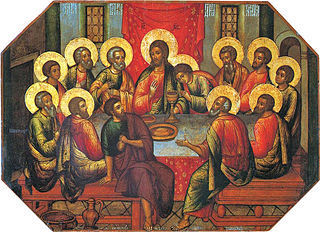
The Mystical Supper, Icon by Simon Ushakov(1685)
4.
That's Leibochka's little tricks:
Galuzina is using the diminutive of Leib, Trotsky's first name in Yiddish. Trotsky was the commander in chief of the Red Army at the start of the civil war.

White Army propaganda poster. The caption reads, "Peace and Liberty inSovdepiya".
The Black Banner
The Black Banner or Chernoe Znamia, known as the Chernoznamentsy, was a Russian anarchist communist organisation. It emerged in 1903 as a federation of cadres.[1] It took its name – "The Black Banner" – from the black flag,[2] the use of which as a symbol of anarchism in Russia, according to An Anarchist FAQ, coincided with its founding.[3]
The largest collection of anarchist terrorists in Imperial Russia, Chernoe Znamia attracted its strongest following in the western and southern provinces at the frontier of the Empire, including nearly all anarchists in Bialystok.[2] Their ranks included mostly students, factory workers and artisans, though there were also peasants, unemployed labourers, drifters, and self-professed Nietzschean supermen.[2] Ethnically,Jews predominated, and many members were of Ukrainian, Polish and Great Russian nationality.[2] The typical age of the Chernoznamentsywas nineteen or twenty, and some of the most active adherents were as young as fifteen years old.[2]
With a history marked, in the words of historian Paul Avrich, by "reckless fanaticism and uninterrupted violence", the Chernoznamenstywere the first anarchist group with a deliberate policy of terror against the established order.[2] They saw merit in every act of propaganda by the deed, no matter how intemperate and senseless it appeared to the public, as evoking the lust of the underclass for vengeance against their tormentors.[4] Along with the equally fanatical Beznachalie ("Without Authority"), Chernoe Znamiawas the most conspicuous anarchist communist organisation in Russia.[5]
"The common object of the new anarchist organizations [circa 1905] was the total destruction of capitalism and the state, in order to clear the way for the libertarian society of the future. There was little agreement, however, as to how this was to be accomplished. The most heated disputes centered on the place of terror in the revolution.
http://en.wikipedia.org/wiki/Chernoe_...
Vidovichenco
Vdovichenko was a peasant from Novospasovka who received an elementary education. He was an anarchist. He commanded a special detachment of insurgent troops and was one of the most active participants in the revolutionary insurrection. He was extremely popular and greatly loved among the peasants of the Sea of Azov region and among the insurgents. He played a considerable part in the defeat of Denikin's forces in the fall of 1919. In 1921 he was seriously wounded and imprisoned by the Bolsheviks. Though threatened with death, he disdainfully turned down their proposal to transfer to their service. His fate is unknown.
http://www.ditext.com/arshinov/11.html
(Pevear)
5.
The Virgin in the Icon
The use and making of icons entered Kievan Rus' following its conversion to Orthodox Christianity in 988 AD. As a general rule, these icons strictly followed models and formulas hallowed by Byzantine art, led from the capital in Constantinople. As time passed, the Russians widened the vocabulary of types and styles far beyond anything found elsewhere in the Orthodox world.
http://en.wikipedia.org/wiki/Russian_...

Theotokos of Vladimir
"They call her Kubarikha and Medvedikha and Zlydarikha"
Fanciful nicknames suggestive, respectively, of a spinning top, a she-bear, and a wicked person.
(Pevear)
Kirghiz and Buryat
The Buryats or Buriyads ( numbering approximately 500,000, are the largest indigenous (aboriginal) group in Siberia, mainly concentrated in their homeland, the Buryat Republic, afederal subject of Russia. They are the major northern subgroup of the Mongols .[2]
Buryats share many customs with other Mongols, including nomadic herding, and erecting gers for shelter. Today, the majority of Buryats live in and around Ulan-Ude, the capital of the republic, although many live more traditionally in the countryside. They speak in a dialect of Mongol language called Buryat.[3]
http://en.wikipedia.org/wiki/Buryat_p...
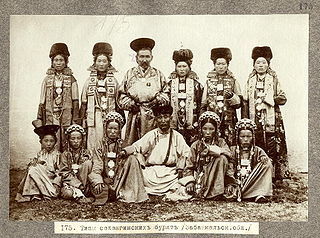
The Selengyin Buryats, (c. 1900)
Central Committee
Central Committee was the common designation of a standing administrative body of communist parties, analogous to a board of directors, whether ruling or non-ruling in the 20th century and of the surviving states in the early 21st century. In such party organizations the committee would typically be made up of delegates elected at a party congress. In those states where it constituted the state power, the Central Committee made decisions for the party between congresses, and usually was responsible for electing the Politburo. In non-ruling Communist parties, the Central Committee is usually understood by the party membership to be the ultimate decision-making authority between Congresses once the process of democratic centralism has led to an agreed-upon position.
http://en.wikipedia.org/wiki/Central_...
the former cooperative laborist:
A member of the Labor Group (Trudoviki) in the Duma, affiliated with the SR party and headed by Kerensky, part of whose program was the idea of cooperative farm labor.
(Pevear)
Jacobin dictatorship and the reason the Convention was crushed by the Thermadorians
The Thermidorian Reaction was a revolt in the French Revolution against the excesses of the Reign of Terror. It was triggered by a vote of the National Convention to execute Maximilien Robespierre, Antoine Louis Léon de Saint-Just de Richebourg and several other leading members of the Terror. This ended the most radical phase of the French Revolution.
http://en.wikipedia.org/wiki/Thermido...
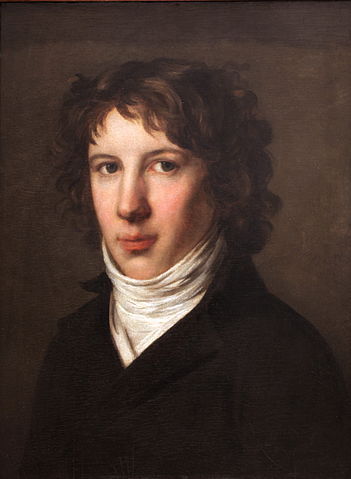
Saint-Just by Prud'hon, 1793 (Museum of Fine Arts of Lyon)
7.
kulichi buns
kulichi … paschas: Foods traditionally eaten in celebration of Easter. A kulich is a tall, cylindrical cake, usually decorated with fruit and icing, and pascha is a molded sweet dish made from fresh white cheese, butter, sugar, eggs, and cream, with various dried fruits, nuts, and flavorings.
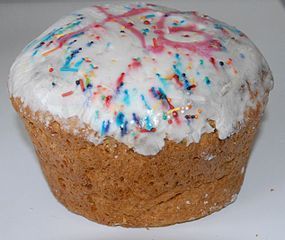
Kulich
"A long life and happy years to you young men..."
Many years: The prayer wishing a person “Many Years” is sung on name days or for congratulations on various occasions.
Miliukov: Pavel Miliukov (1859–1943),
Pavel Miliukov was a statesman and liberal historian, and a prominent member of the Constitutional Democratic Party, was elected to the Duma, became a member of the Provisional Government after the February revolution, and served as foreign minister from March to May 1917. He was known to be a powerful orator.
http://en.wikipedia.org/wiki/Pavel_Mi...

Pavel Nikolayevich Milyukov
Black reaction
the Black Hundred: The name of a counterrevolutionary movement in Russia, formed in 1900 from conservative intellectuals, officials, landowners, and clergy, with a reputation for being anti-Semitic and anti-Ukrainian. It grew weaker after 1907 and was finally abolished following the February revolution.
http://en.wikipedia.org/wiki/Black_Hu...

Supporters of the Black Hundreds marching during the 1905 Russian Revolution.

 by Edith W. Clowes
by Edith W. ClowesDoctor Zhivago: A Critical Companion
by Edith W. Clowes
Northwestern Critical Companions to Russian Literature - 1995 - 169 pages
(synopses are mine)
Contents
I. Introduction
"Doctor Zhivago in the Post-Soviet Era: A Re-Introduction"
by Edith W. Clowes
The Reception of Doctor Zhivago; The Place of Doctor Zhivago in Pasternak's Art; Characters and Plot; The Genre of Doctor Zhivago; The Cultural Inheritance of Doctor Zhivago; Gender and Ethnicity; The Meaning of History in Doctor Zhivago; Doctor Zhivago in English Translation. Concludes with a look at the contemporary reception in Russia and the value of Doctor Zhivago to Western readers today.
II. Criticism
"Yury Zhivago's Readers: Literary Reception in Pasternak's Novel in His Time"
by Carol J. Avins
A discussion of how Yuri Zhivago's poetry made its way to and was received by the public within the novel and how that reception changes over the course of the novel. In essence, how the artist-government-public relationship goes from quite open to very restrictive and censorious.
*
"Characterization in Doctor Zhivago: Lara and Tonya"
by Edith W. Clowes
How the treatment of characters in Doctor Zhivago differs from that of the traditional Russian novel. Basing her argument on Uncle Nikolai's ideas about the "free personality" in Clowes looks at Yuri and Lara as being examples of this "higher consciousness" and then examines Lara and Tonya as "symmetrically placed but opposed characters," Tonya remaining in the traditional role while Lara "transcends" it. Clowes maintains that a personal quest "supplants a national coming-of-age quest."
*
"Soaked in The Meaning of Love and The Kreutzer Sonata"
The Nature of Love in Doctor Zhivago
by Jerome Spenser
An examination of the personal love relationships in Doctor Zhivago based on the philosophical differences between Solovyov's "The Meaning of Love" and Tolstoy's "The Kreutzer Sonata." He examines the relationships of Lara and Komarovsky, Lara and Pasha, and Yuri and Lara, finding the ways in which Pasternak differed from both Tolstoy and Solovyov.
 by Vladimir Solovyov (no photo)
by Vladimir Solovyov (no photo) by
by
 Leo Tolstoy
Leo Tolstoy*
"Temporal Counterpoint as a Principle of Formation in Doctor Zhivago"
by Boris Gasparov
A critical evaluation based on Pasternak's stated intent to create an "epic" novel. Gasparov uses the "melodrama" and extreme coincidence (as "the mainspring of the plot") to make his point by interpreting these elements as the counterpoints of polyphonic music (movement, rhythm, sound) for "overcoming ... the linear flow of time." The author then shows how these "contrapuntal lines" are interwoven to form a complete fabric - the "crossing of fates," of memory and essentially, of death. One strength of the novel is that it is open to a variety of possible interpretations. And he pronounces this a very sophisticated work.
*
"The Relationship of Lyrical and Narrative 'Plot' in Doctor Zhivago"
by Dina Magomedova
An examination of the relationships between Zhivago's poetry, Pasternak's narrative and his aesthetic views with an emphasis on the poem "Autumn."
III. Primary Sources
Correspondence Relating to Doctor Zhivago
Excerpts related to the novel between Pasternak and Olga Freidenberg, Adriana Efron, Varlam Shalamov, N.P. Smirnov, John Harris, and Stephen Spender, dated between 1946 and 1959.
(see below for excerpts)
IV. Select Bibliography
 These are excerpts from the Primary Sources section of Edith W. Clowes' Doctor Zhivago: A Critical Companion
These are excerpts from the Primary Sources section of Edith W. Clowes' Doctor Zhivago: A Critical Companion Edith W. Clowes (no photo)
Edith W. Clowes (no photo)from Adriadna Efron
Nov. 18, 1948 -
"First of all, the congestion is terrible. To squeeze into 150 pages of typescript so many fates, epochs, cities, years, events, passions, and take away their space and spaciousness, the air that they need! And it is not by chance, it did not write itself this way (the way "it" sometimes writes itself!)."
**
From V. Shalomov
August 11, 1956
"Let me tell you again, probably for the thousandth time, if you count all my conversations by myself with you, that I am proud of you. I believe in you. I idolize you."
**
To N.P. Smirnov
April 2, 1955
"Here is why I am talking to you about this in such detail. You cannot possibly like this prose. I began to write it in those years after the war when, long before the Zoshchenko adn Akhmatova incidents, I found myself distracted by my own feelings of alienation, and I began to stray further and further from the beaten track. I lost my artistic focus, inwardly let myself go, like a weakened bow-string - I wrote this prose unprofessionally, without a consciously sustained creative goal, in the worst sense tamely, with a dullness and naivete which I permitted myself and forgave. It is very unevern, unraveled, and no one likeds it much, there are monstrous multitude of unnecessary characters in it (a part of them, it is true, do return in the second book), then in the course of the exposition they disappear."
**
To Nikolai Pavolovich
April 28, 1955
"Whatever low opinion I may have had about the second book of Zhivago, I am now finishing it, and bringing it to a conclusion is my duty to myself.
"But this urge to write modestly, without special effects and stylistic coquetry - which increasingly has been tormenting me - has led me probably too far into the realm of those virtues that are opposed to art; and after I had left a nervous style of writing marked with that energy which is required for an artist, I appropriated an aimless, unexpressive thoroughness that hampers my best intentions."
**
To John Harris
February 8, 1959
"You were perfectly right on remembering Donne, his sense of living totally, in his "he is us." And your Harrist theory, 'Coincidence is Pasternak's poetic method of saying something like Donne... etc.' is, if not the truth itself, then a guess near by in a distance of only a few steps from it.
"There are aphorisms, definitions, statements in my novel. But the chief participation of thought in it does not lie in those open sentences (opinions) uttered in dialogues, author's notes, etc. etc.; but in the hidden tendency which penetrates the very manner of my display of reality, of my description. Here in my change of times, the style of movement, character of colours, arrangement of groups in my latent unsaid philosophy, I could say more: my philosophy itself as a whole, is in general rather an inclination that a conviction. And you were right, I repeat to refer yourself to Donne. What matters in this case are not the different separate notions and sayings, but the constant peculiar light in which everything is seen, lived, reflected and said."
"The last century still conserved the old rationalist meaning of causality as of a unique, firmly forged, iron chain of causes and effects, antecedences and consequences linked together. Such were the laws of logic and mathematics, such the natural laws. "
>>>
"I cannot deny causality, of course. But unlike the determinism of the great novelists of the past I will give credence to my leadings, not to persuasions. Their artistic ambition was int he outlines, contours, limits of the objectivity, in the delineation of its structural frames. And that is the most submitted to the mechanics of fate."
**
To Stephen Spender
August 22, 1959
"I also from my earliest years have been struck by the observation that existence was more original, extraordinary, and inexplicable than any of its separate astonishing incidents and facts. I was attracted by the unusualness of the usual. Composeing music, prose or poetry I was driven by definite conceptions and motifs, I pursued certain favourite objects and themes. But the top p leasure consists in having hit the sense or taste of reality, in hiving been able, in having succeeded in rendering the atmosphere of being the surrounding whole, the total environment, the frame, where the particular and the depicted thing is having been plunged and floating."
>>
"... there is an effort in the novel to represent the whole sequence of fact and beings and happenings like some moving entireness, like a developing, passing by, rolling and rushing inspiration, as if reality itself had freedom and choice and was composing itself out of numberless variants and versions.
"Hence the not sufficient tracing of characters I was reproached with (more than to delineate them I tried to efface them); hence the frank arbitrariness of the 'coincidences' (through this means I wanted to show the liberty of being, its verisimilitude touching, adjoining improbability). "
 Chapter 11 - The Forest Brotherhood
Chapter 11 - The Forest BrotherhoodNote: numbers indicate sections within the chapter
2.
British medical supplies:
The Allied intervention was a multi-national military expedition launched in 1918 during World War I which continued into the Russian Civil War. Its operations included forces from 14 [1] nations and were conducted over a vast territory. The initial stated goals were to help the Czechoslovak Legions, secure supplies of munitions and armaments in Russian ports, and re-establish the Eastern front. After winning the war in Europe, the Allied powers militarily backed the pro-Tsarist, anti-Bolshevik White forces in Russia. Allied efforts were hampered by divided objectives, lack of an overarching strategy, war weariness and a lack of public support. These factors, together with the evacuation of the Czechoslovak Legion and the deteriorating situation compelled the Allies to withdraw from North Russia and Siberia in 1920, though Japanese forces occupied parts of Siberia until 1922 and the northern half of Sakhalin until 1925.[2]
http://en.wikipedia.org/wiki/Allied_i...
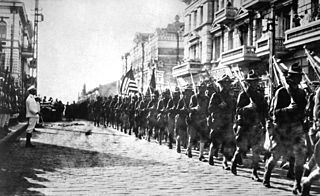
American Troops in Vladivostok
White officer's unit under General Kappel
During the First World War Vladimir Kappel was Chief of the 347th Infantry Regiment's Staff and an officer in the 1st Army's Staff. Following the Bolshevik Revolution, Kappel commanded the Komuch White Army group (People Army of Komuch) (1918, June–September) and from December 1919 the Eastern Front of Aleksandr Kolchak.
http://en.wikipedia.org/wiki/Vladimir...

General Vladimir Kappel
"... withholding food supplies..."
In January 1919, a decree was issued calling for the requisitioning without compensation of what was described as “surplus agricultural produce.” The procedure was open to abuse and resulted in great unrest among the peasants, which was brutally suppressed.
(Pevear)
4.
Red Cross:
A joint mission of the ICRC and the League in the Russian Civil War from 1917 to 1922 marked the first time the movement was involved in an internal conflict, although still without an explicit mandate from the Geneva Conventions. The League, with support from more than 25 national societies, organized assistance missions and the distribution of food and other aid goods for civil populations affected by hunger and disease. The ICRC worked with the Russian Red Cross society and later the society of the Soviet Union, constantly emphasizing the ICRC's neutrality
http://en.wikipedia.org/wiki/Internat...
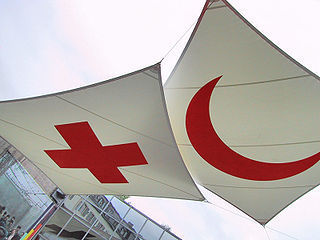
church Slavonic text:
Church Slavonic is the primary liturgical language of the Orthodox Church in Russia, Ukraine and Belarus. It is also used in the Orthodox churches of Bulgaria, Serbia, Montenegro, Macedonia and Poland, and occasionally appears even in the services of the American and Czech and Slovak Orthodox. This makes it the most widely used liturgical language in the entire Orthodox Church.
Pasternak, Boris (2010-11-23). Doctor Zhivago (p. 668). Random House, Inc.. Kindle Edition.
http://en.wikipedia.org/wiki/Church_S...
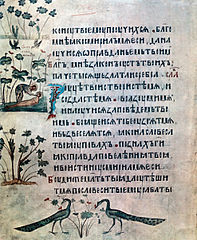
Kiev Psalter
5.
"...excessive consumption of cocaine."
the White Army had a horrible reputation for the widespread use of cocaine and vodka, further damaging relations with the general public²⁵.
http://uahsibhistory.wikispaces.com/R...
"... the teaching of the Dukhobors... Tolstoyism..."
The Doukhobors or Dukhobors, earlier Dukhobortsy, (literally - Spirit-Wrestlers) are a group ofRussian origin. The Doukhobors were one of the sects - later defined as a religious philosophy, ethnic group, social movement, or simply a "way of life" - known generically as Spiritual Christianity. The origin of the Doukhobors is uncertain. The first clear record of their existence, and the first use of the names related to "Doukhobors", are from the 18th century. However, some scholars believe that the sect had its origins in the 17th or even the 16th century.[1][2] They rejected secular government, the Russian Orthodox priests, icons, all church ritual, the Bible as the supreme source of divine revelation, and the divinity of Jesus.[citation needed] Their pacifist beliefs and desire to avoid government interference in their life led to an exodus of the majority of the group from the Russian Empire to Canada at the close of the 19th century.
>>>
The Doukhobors' passage across the Atlantic Ocean was largely paid for by Quakers and Tolstoyans, who sympathized with their plight, and by the writer Leo Tolstoy, who arranged for the royalties from his novel Resurrection, his story Father Sergei, and some others, to go to the migration fund. He also raised money from wealthy friends. In the end, his efforts provided half of the immigration fund, about 30,000 roubles.
http://en.wikipedia.org/wiki/Doukhobor
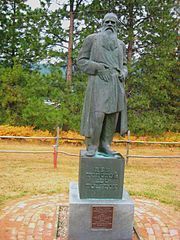
Leo Tolstoy Statue at Doukhobor Discovery Centre

The Doukhobor worship place in Georgia
"You are angry, Jupiter... the Moor can go..."
The saying about Jupiter, which is proverbial in Russia, comes from the Latin: Iuppiter iratus ergo nefas (“Jupiter is angry, therefore he is [it is] wrong”), which is attributed to Lucian of Samosata (ca. 125–180 AD). The phrase about the Moor, also proverbial, comes from The Conspiracy of Fiesco in Genoa (1783), a play by the German poet and playwright Friedrich Schiller (1759–1805).
(Pevear)
8.
"Darwin was next to Schelling..."
Charles Darwin (1809–1882) formulated the principle of natural selection in the process of biological evolution in his Origin of Species (1859). The German idealist philosopher Friedrich Schelling (1775–1854), a friend and later a critic of Hegel, proposed the idea, in his Philosophy of Nature (Naturphilosophie, 1797), that the ideal springs from the real in a dynamic series of evolutionary processes. Zhivago’s thoughts thus unite naturalist and idealist notions of evolution.
(Pevear)
** "... going back to Stenka Razin and Pugachev..."
Stepan (Sten'ka) Timofeyevich Razin (1630 – June 16 [O.S. June 6] 1671) was a Cossack leader who led a major peasant uprising against the nobility and Tsar's bureaucracy in South Russia, 1670. He was captured and executed in Moscow, later became a folk and cultural hero.
http://en.wikipedia.org/wiki/Stenka_R...

Stepan Razin portrait

painted by Boris Kustodiev in 1918 - Stepan Razin on the Volga
Pugachov
Yemelyan Ivanovich Pugachov (e. 1742 – 21 January [O.S. January 10] 1775) was a pretender to the Russian throne who led a great Cossack insurrection during the reign of Catherine II. Alexander Pushkin wrote a notable history of the rebellion, The History of Pugachov, and he recounted some of the events in his novel The Captain's Daughter (1836).
http://en.wikipedia.org/wiki/Yemelyan...
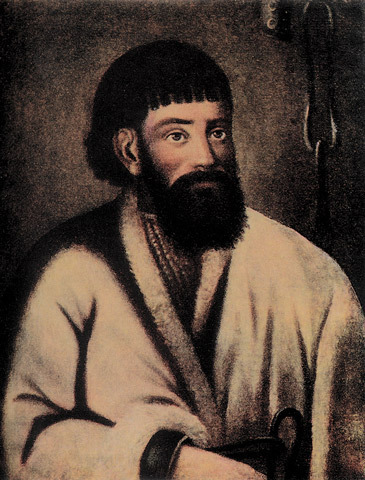
Yemelyan Pugachov

Reply of the Zaporozhian Cossacks to Sultan Mehmed IV of the Ottoman Empire is a painting by Ilya Yefimovich Repin.
The Pugachov rebellion had a long lasting effect on Russia for years to come. While Catherine II tried to reform the provincial administration, the horrors of the revolt caused her to drop other reforms, particularly attempts to emancipate the peasant serfs of Russia. The Russian writer Alexander Radishchev, in his Journey from St. Petersburg to Moscow, attacked the Russian government, in particular the institution of serfdom. In the book, he refers to Pugachov and the rebellion as a warning.[15]
The term "Pugachovs of the University" was frequently used to describe the generation of the Russian Nihilist movement.
The town in which Pugachov was born was later named in his honor by the Soviet government.
The central square in the Kazakh town of Uralsk is named Pugachov Square.[16]
http://en.wikipedia.org/wiki/Yemelyan...
 The impact of the Russian-built rail system on Eurasia still reverberates today.
The impact of the Russian-built rail system on Eurasia still reverberates today. http://en.wikipedia.org/wiki/History_...
http://en.wikipedia.org/wiki/The_Muse...
 byMatthew J. Payne
byMatthew J. Payne
 Joanne wrote: "The impact of the Russian-built rail system on Eurasia still reverberates today.
Joanne wrote: "The impact of the Russian-built rail system on Eurasia still reverberates today. http://en.wikipedia.org/wiki/History_... "
Thanks, Joanne!
And as in Chapter 1 The Five O'Clock Express:

People of all ethnicities and walks of life would meet on Russian trains.
 Becky wrote: "Joanne wrote: "The impact of the Russian-built rail system on Eurasia still reverberates today.
Becky wrote: "Joanne wrote: "The impact of the Russian-built rail system on Eurasia still reverberates today. http://en.wikipedia.org/wiki/History_... "
Thanks, Joanne!
And as in..."
Yes! The moving crossroads of Eurasia.... The new Silk Road!
 Chapter 12 - The Rowan Tree
Chapter 12 - The Rowan TreeNote: the numbers refer the sections within the chapter
Rowan tree
The rowans or mountain-ashes are shrubs or small trees in genus Sorbus of family Rosaceae. They are native throughout the cool temperate regions of theNorthern Hemisphere, with the highest species diversity in the mountains of western China and the Himalaya, where numerous apomictic microspecies occur.[1]The name rowan was originally applied to the species Sorbus aucuparia, and is also used for other species in Sorbus subgenus Sorbus.[2] Rowans are unrelated to the true ash trees which belong to the genus Fraxinus, family Oleaceae, though their leaves bear superficial similarity.
http://en.wikipedia.org/wiki/Rowan

Mature European Rowan tree
1.
Royal Scots Fusiliers
The Allies landed small groups of British and American naval troops at the arctic ports of Murmansk and Archangelsk in March 1918 to prevent large stores of arms in warehouses there from falling into the hands of the Germans, and to rescue the stranded British submariners and Serbian volunteers. They narrowly held the two ports along with a French artillery unit until a larger force arrived four months later. This force soon found itself engaged with Red Army forces to the south and likewise aided in the formation and training of the White Army of General Miller. This force included 5,760 Americans of the 339th Infantry Regiment with elements of the 85th Division under Colonel GE Stuart; 1,000 British troops that included Royal Marines, the 6th Yorkshire Regiment, The Royal Scots and a Canadian Field Artillery unit; the French 21st Colonial battalion, and token force of Italian, Serbian and free Polish troops.
http://suite101.com/article/allied-in...
http://en.wikipedia.org/wiki/Royal_Hi...
Prehistoric dolmens
A dolmen, also known as a portal tomb, portal grave, or quoit, is a type of single-chamber megalithic tomb, usually consisting of three or more upright stonessupporting a large flat horizontal capstone (table). Most date from the early Neolithic period (4000 to 3000 BC). Dolmens were usually covered with earth or smaller stones to form a barrow, though in many cases that covering has weathered away, leaving only the stone "skeleton" of the burial mound intact.
It remains unclear when, why, and by whom the earliest dolmens were made. The oldest known dolmen are in Western Europe, where they were set in place around 7000 years ago, at the same time as the ancient civilisations of Egypt, India, and the Middle East. Archaeologists still do not know who erected these dolmens, which makes it difficult to know why they did it. The most widely accepted theory is that all dolmen are tombs or burial chambers. Human remains, sometimes accompanied by artefacts, have been found in or close to them, which allowed a scientific dating. There is however no firm evidence that even this theory is correct. It has been impossible to prove that these archeologic remains date back to the time when the stones were set in place.[1]
http://en.wikipedia.org/wiki/Dolmen
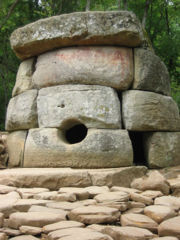
Circassian dolmen near the Zhane river, Russia
Browning
After World War I, some Colt-Browning guns (possibly including the M1917/18 Marlin variants) saw use in the Russian Civil war. Its most spectacular use came during the Czech Legion's exodus from Russia, where the guns (either Colt-Browning M1914 or Marlin M1917 models) were photographed in sandbagged stations on the top of trains being used to transport the Legion as it withdrew from Soviet Russia.
http://en.wikipedia.org/wiki/M1895_Co...
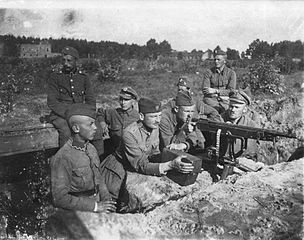
soldiers with the M1895/14 ca. 1920
Oprichniki
An oprichnik (Oprichniki is plural) was a member of an organization established by Tsar Ivan the Terrible to govern the division of Russia known as the Oprichnina (1565-1572). It is thought by some scholars that it was Ivan's second wife, the Tatar Maria Temryukovna who first gave the Tsar the idea of forming the organization. This theory comes from a German oprichnik, Heinirich von Staden. Her brother also became a leading oprichnik.
Their oath of allegiance was: I swear to be true to the Lord, Grand Prince, and his realm, to the young Grand Princes, and to the Grand Princess, and not to maintain silence about any evil that I may know or have heard or may hear which is being contemplated against the Tsar, his realms, the young princes or the Tsaritsa. I swear also not to eat or drink with the zemschina, and not to have anything in common with them. On this I kiss the cross.[1]
http://en.wikipedia.org/wiki/Oprichnik

The street in the town: people fleeing at the arrival of the Oprichniki (set to the opera The Oprichnik by Pyotr Tchaikovsky, 1911)
2. Glauber's salts
Sodium sulfate is the sodium salt of sulfuric acid. When anhydrous, it is a white crystalline solid of formula Na2SO4 known as the mineral thenardite; thedecahydrate Na2SO4·10H2O has been known as Glauber's salt or, historically, sal mirabilis since the 17th century.
Glauber's salt, the decahydrate, was historically used as a laxative. It is effective for the removal of certain drugs such as acetaminophen from the body, for example, after an overdose
http://en.wikipedia.org/wiki/Sodium_s...
6. the cattle healer
http://en.wikipedia.org/wiki/Shamanis...

An Altai Kizhi or Khakas shaman woman. Early 20th century.
"As a hare was running about the wide world ... "
According to the commentary of E.B. and E. V. Pasternak this "folk song" is entirely the work of Pasternak himself. (Pevear)
 Chapter 12 - The Rowan Tree (cont.)
Chapter 12 - The Rowan Tree (cont.)Note: the numbers refer the sections within the chapter
7.
anthrax
Anthrax is an acute disease caused by the bacterium Bacillus anthracis. Most forms of the disease are lethal, and it affects both humans and other animals.
ringworm
Ringworm is a transmissible infectious skin disease caused most often by Trichophyton verrucosum, a spore forming fungi. The spores can remain alive for years in a dry environment. It occurs in all species of mammals including cattle and man. Although unsightly, fungal infections cause little permanent damage or economic loss. Direct contact with infected animals is the most common method of spreading the infection.
"...the Forester "
Old Peter's Russian Tales was written by Arthur Ransom and published in 1916. It has never been out of print since. An Russian grandfather named Old Peter, a forester by trade, tells a series of folk tales to his orphaned grandchildren.
http://www.gutenberg.org/ebooks/16981
http://en.wikipedia.org/wiki/Arthur_R...
(Ransom himself is rather interesting.)
Ivan Tsarevich
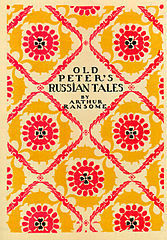
Old Peter's Russian Tales
 by
by
 Arthur Ransome
Arthur RansomeIvan Tsarevich (literally John the Prince) is one of the main heroes of Russian folklore, usually a protagonist, often engaged in a struggle with Koschei. Along with Ivan the Fool, Ivan Tsarevich is a placeholder name rather than a certain character.
He is often, but not always, the youngest son of three. In the tale "The Three Kingdoms", he is a son of Nastasya the Golden Braid. Different legends describe Ivan as having various wives, including Yelena the Beautiful, Vasilisa the Wise and Marya Morevna.
Ivan is sometimes depicted with magic abilities and has the Sword Kladenets.
Tales about Ivan Tsarevich include "Ivan Tsarevich and the Grey Wolf", "Tsarevna the Frog", "The Sea King and Vasilisa the Wise", "The Tale about Rejuvenating Apples and the Life Water", and "The Death of Koschei the Immortal (also known as "Marya Morevna")."
http://en.wikipedia.org/wiki/Ivan_Tsa...
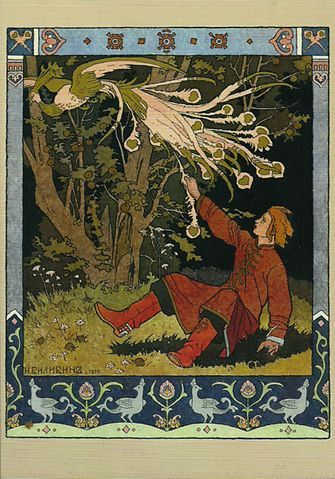
Ivan Tsarevich catching the Firebird's feather, by Ivan Bilibin
Kubarikha's speech, as well as what she speaks about, is drawn from the texts collected by Alexander Afanasiev (1826-1871) (Pevear)
In the course of his studies of the Russian folklore Afanasyev amassed a collection of more than 600 Russian folktales - some of them contributed by Vladimir Dahl, others taken from the archives of the Russian Geographical Society and grouped by Afanasiev according to their themes, imagery, and style. He owes his prominent place in the history of Slavonic philology chiefly to Narodnye russkie skazki (Russian Fairy Tales), eight volumes modelled on the famous collection of the Brothers Grimm and published between 1855 and 1863.
Prior to Afanasyev's works in the 1850s, only a few attempts had ever been made to record or study the folk beliefs of peasant Russia. Though a written Russian language (Church Slavonic) had existed since the 10th century, it was used almost solely by the church and only for parochial written works. It was not until the 18th and 19th centuries that a sizable body of secular literature developed in the vernacular Russian. Thus, Afanasyev's collections made a highly valuable contribution to the dissemination and legitimization of Russian culture and folk belief. The influence of these folk tales can be seen in the works of many writers and composers, notably Rimsky-Korsakov (Sadko, The Snow Maiden) and Stravinsky (The Firebird, Petrushka, and L'Histoire du Soldat).[8]
http://en.wikipedia.org/wiki/Alexande...
... ancient chronicle, either of Novgorod or Epatievo...
The Novgorod First Chronicle or The Chronicle of Novgorod, 1016-1471[1] is the most ancient extant chronicle of the Novgorod Republic. It reflects a tradition different from the Kievan Primary Chronicle. As was first demonstrated by Aleksey Shakhmatov, the later editions of the chronicle reflect the lost Primary Kievan Code of the late 11th century, which contained much valuable data suppressed in the later Primary Chronicle.
The earliest extant copy of the chronicle is the so-called Synod Scroll, dated to the second half of the 13th century, first printed in 1841 and currently preserved in the State Historical Museum. It is the earliest known manuscript of a major East Slavic chronicle, predating the Laurentian Codex of the Primary Chronicle by almost a century. In the 14th century, the Synod Scroll was continued by the monks of the Yuriev Monastery in Novgorod.
Other important copies of the Novgorod First Chronicle include the Academic Scroll (241 lists, 1444), Commission Scroll (320 lists, mid-15th century), Trinity Scroll (1563), and Tolstoy Scroll (208 lists, 1720s).
http://en.wikipedia.org/wiki/Novgorod...
... the book of the living word...
The verse comes from a hymn from the Nativity of the Mother of God, but Kubarihka connects the Slavonic word zhivotnogo ("living") with the Russian word zhivotnoe ("animal") and applies it to the cow. (Pevear)
8. "Then I saw the rowan tree with iced berries on it. "
The best-known species is the European Rowan Sorbus aucuparia, a small tree typically 4–12 m tall growing in a variety of habitats throughout northern Europeand in mountains in southern Europe and southwest Asia. Its berries are a favourite food for many birds and are a traditional wild-collected food in Britain andScandinavia. It is one of the hardiest European trees, occurring to 71° north in Vardø in Arctic Norway, and has also become widely naturalised in northernNorth America.
http://en.wikipedia.org/wiki/Rowan

iced rowan berries
*******************
 Causes of the Russian Revolution
Causes of the Russian RevolutionAn elementary theory of property, believed by many peasants, was that land should belong to those who work on it. At the same time, peasant life and culture was changing constantly. Change was facilitated by the physical movement of growing numbers of peasant villagers who migrated to and from industrial and urban environments, but also by the introduction of city culture into the village through material goods, the press, and word of mouth.[nb 1]
Workers also had good reasons for discontent: overcrowded housing with often deplorable sanitary conditions, long hours at work (on the eve of the war a 10-hour workday six days a week was the average and many were working 11–12 hours a day by 1916), constant risk of injury and death from very poor safety and sanitary conditions, harsh discipline (not only rules and fines, but foremen’s fists), and inadequate wages (made worse after 1914 by steep war-time increases in the cost of living). At the same time, urban industrial life was full of benefits, though these could be just as dangerous, from the point of view of social and political stability, as the hardships. There were many encouragements to expect more from life. Acquiring new skills gave many workers a sense of self-respect and confidence, heightening expectations and desires. Living in cities, workers encountered material goods such as they had never seen while in the village. Most important, living in cities, they were exposed to new ideas about the social and political order.
The social causes of the Russian Revolution mainly came from centuries of oppression of the lower classes by the Tsarist regime, and Nicholas's failures in World War I. While rural agrarian peasants had been emancipated from serfdom in 1861, they still resented paying redemption payments to the state, and demanded communal tender of the land they worked. The problem was further compounded by the failure of Sergei Witte's land reforms of the early 20th century. Increasing peasant disturbances and sometimes actual revolts occurred, with the goal of securing ownership of the land they worked. Russia consisted mainly of poor farming peasants, with 1.5% of the population owning 25% of the land.
The rapid industrialization of Russia also resulted in urban overcrowding and poor conditions for urban industrial workers (as mentioned above). Between 1890 and 1910, the population of the capital, Saint Petersburg, swelled from 1,033,600 to 1,905,600, with Moscow experiencing similar growth. This created a new 'proletariat' which, due to being crowded together in the cities, was much more likely to protest and go on strike than the peasantry had been in previous times. In one 1904 survey, it was found that an average of sixteen people shared each apartment in Saint Petersburg, with six people per room. There was also no running water, and piles of human waste were a threat to the health of the workers. The poor conditions only aggravated the situation, with the number of strikes and incidents of public disorder rapidly increasing in the years shortly before World War I. Because of late industrialization, Russia's workers were highly concentrated. By 1914 40% of Russian workers were employed in factories of +1,000 workers (32% in 1901). 42% worked in 100-1,000 worker enterprises, 18% in 1-100 worker businesses (in the USA, 1914, the figures were 18, 47 and 35 respectively).[6]
http://en.wikipedia.org/wiki/Russian_...
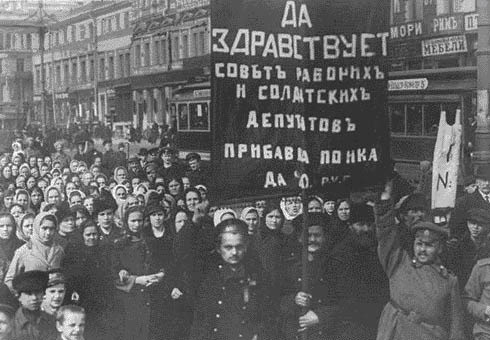
Revolutionaries protesting on February 1917
Moreover, the government did not attempt to improve these conditions. Instead, the Russian villages and cities suffered from poverty, dirt and disease caused by the exorbitant land revenue and the unbearably high taxes and levies.
There was an imbalance in the social structure, owing to the above economic factors. As a result 70% of the Russian population was illiterate. The social structure of Russia was completely devoid of education, medical relief and public health. The masses being poor, hungry, diseased and ignorant were highly addicted to vodka, a very powerful intoxicant. Above all the system of flogging that prevailed in the whole of Russia made Russian social life, highly miserable, inhuman and wretched.
Political factors also formed an important cause of the Russian Revolution of 1917. The masses had no legal means of improving the social structure. A strike was considered to be a mutiny. The people had no press to ventilate their grievances.
The Czarist government was ruthless, absolute and repressive. On January 15, 1905, a peaceful demonstration led by Father Gapon at St.Petersburg was fired upon by the Czarist troops. The Duma (parliament) had limited powers. Franchise was not given to women, laborers and the common people.
The growing discontent among the masses manifested itself in all aspects of national life. The working class became highly receptive to Marxist ideas infiltrating into Russia. In 1893, the Social Democratic Party was founded and in 1903, this party was split into two; the Bolsheviks led by Nikolai Lenin and the Mensheviks led by Martov. While the formerwas revolutionary and supported by Stalin, the latter was evolutionary and was supported by Trotsky.
In the Russo-Japanese War of 1905, Russia, a giant state, received a crushing defeat at the hands of Japan, a very small Asian power. The people realized that the Russian defeat was due to the lack of a well trained and a well-equipped army. Thus it became essential to end the Czarist regime.
The Revolution of 1905 gave the people a good experience in popular uprisings, strikes, lockouts and violent demonstrations against the Czarist government. Thus this Revolution could be regarded as the dress rehearsal for the major upheaval that was to follow in the future. This upheaval would eventually revolutionize the nation in the social, economic and political spheres.
Czar Nicholas II of Russiawas under the influence of his Czarina Alexandra Fyodorovna. She in turn was under the sway of the wicked and notorious monk Rasputin, who claimed to have spiritual powers that could heal the young prince. The latter was suffering from an incurable disease. In order to please Rasputin, Czarina Alexandra used to interfere in the day-to-day administration of the state. Thus the ministers and high officials were appointed and dismissed on the careless advice of Rasputin, causing great discontent among the people. Though Rasputin was killed by the nobles in December 1916, the Czarinnobles in December 1916, the Czarina continued to influence the affairs of the state till the Revolution of 1917.

Grigori Rasputin
The social, economic, political and psychological conditions in Russia had become so vulnerable that it only required a spark to cause the revolution. World War I was responsible in setting the ball of revolution rolling in Russia. Acute shortage of ammunition, poor generalship, lack of factories, demoralized soldiers, a corrupt government and high treason at all ranks, created a crisis in the state. The entire national life of the state was paralyzed. The peasants and workers denounced the war and the Czarist government. They held demonstrations and went on an indefinite strike. The peasants attacked and killed the Kulaks (rich peasants) and seized their lands. The heavy losses in battles, undermined the morale of the soldiers, who deserted the front and joined the peasants, factory workers and sailors in the revolution that began on March 12, 1917.
http://www.pinkmonkey.com/studyguides...
 Chapter 13 Opposite the House of Sculptures
Chapter 13 Opposite the House of SculpturesNote: the numbers refer to the sections within the chapter
2. wagons-lit
a railroad sleeping car from the French, "wagon railroad car + lit bed"
http://www.merriam-webster.com/dictio...
7.
O Light ever lasting! Why are we always separated?
The first line of the fifth hymn of the canon in the eighth tone, sung at matins. Zhivago repeats it along with the second line a little further on. (Pevear)
11.
the Haida uprising (Radola Gajda in Pevear)
Radola Gajda, born as Rudolf Geidl, (February 14, 1892 Kotor, Austria-Hungary – April 15, 1948 Prague, Czechoslovakia) was a Czech/Montenegrin military commander and politician.
Geidl's father was an officer in the Austro-Hungarian Army based in Kotor. His mother was a poorMontenegrin noblewoman. Later, the family moved to Kyjov, Moravia, where Geidl studied at a secondary grammar school. In 1910 he went through one year of compulsory military service inMostar. Afterwards Geidl left for the Balkans and likely took part in the Balkan Wars (1912–3). At the start of World War I he rejoined the Austro-Hungarian Army and served in Dalmatia and Sarajevo. In September 1915 he was taken prisoner in Višegrad, Bosnia.
Legions
Immediately after his capture, Geidl switched sides and was commissioned as a captain in theMontenegrin Army. Having some experience as an apothecary, he pretended to be a physician.[1]Following the collapse of the Montenegrin Army in 1916, Gajda escaped into Russia where he joined a Serbian battalion as a physician.
At the end of 1916 the battalion was destroyed and Gajda joined the Czechoslovak Legions (January 30, 1917) as a staff captain. Gajda proved himself as an able commander in the Battle of Zborov and quickly rose through the military hierarchy.
http://en.wikipedia.org/wiki/Radola_G...
** Czechoslovak Legion
After the October Revolution in 1917, the Czechoslovak Legion was in a very complicated situation. The Bolsheviks did not want to use it on the Eastern Front, and it was very hard to remove Czechoslovak troops on the Western Front. In March 1918, the Soviet government (under pressure from Germany) stopped the transfer of Czechoslovak troops to France through Arkhangelsk and sent them through Siberia to Vladivostok. The slow evacuation by the Trans-Siberian Railway was exacerbated by transportation shortages – as agreed in the Brest-Litovsk treaty, the Bolsheviks were at the same time repatriating German, Austrian and Hungarian POWsfrom Siberia. Around the same time Leon Trotsky, then People's Commissar of War, under intense pressure from the Germans, ordered the disarming and arrest of the Legion, thus betraying his promise of safe passage.

"Quarter" of Czeckoslovak Legion
In May 1918, tensions with the Bolsheviks provoked what is generally referred to as the Revolt of the Legions. Conflict already existed between trains of Legionnaires going east to fight on the Allied side and German and Austro-Hungarian prisoners (including some Czechs and Slovaks) going west to fight for "the other" side. On 14 May 1918, the legionnaires stopped a Hungarian train at Chelyabinsk in the Urals and shot a soldier who had apparently thrown something at their train. Then the local Bolshevik government arrested some of the Czechoslovaks. Members of the Legion stormed the railway station, and subsequently occupied the city of Chelyabinsk. This incident triggered further hostilities between the Legion and the Bolsheviks.
Czechoslovaks began to occupy the cities on their route: Chelyabinsk, Petropavlovsk, Kurgan,Novonikolaevsk, Mariinsk, Nizhneudinsk and Kansk. At the same time as the Czechs moved in, Russian officers' organizations overthrew the Bolsheviks in Petropavlovsk and Omsk. Within a month the Whites controlled most of the Trans-Siberian Railway from Lake Baikal to the Ural Mountains regions. During the summer, Bolshevik power in Siberia was totally wiped out.
In the autumn, the Red Army began its counter offensive and defeated the Whites on the Eastern front. Hearing about the creation of an independent Czechoslovakia, legionnaries began to ask why they had to fight in the Russian civil war. At the beginning of 1919, all Czechoslovak troops began to retreat to the Trans-Siberian Railway. on 27 January 1919, Jan Syrový (at that time commander-in-chief of all Czechoslovak troops in Russia) claimed the Trans-Siberian Railway between Novonikolaevsk and Irkutsk as a "Czechoslovak zone of operation". This made it impossible for the White Army to use the railway for retreating at the end of 1919.
In Irkutsk, to provide safe transit for Czechoslovak trains, Jan Syrový at the beginning of 1920 agreed to hand over Aleksandr Kolchak, who had been stopped by Czechoslovaks, to the representatives of Political Centre . Kolchak was killed by the Political Centre. Because of this, and also an attempted rebellion against the Whites, organized by Radola Gajda in Vladivostok on 17 November 1919, the Whites accused Czechoslovaks of being traitors.
From December 1919, the Czechoslovak Legion started to leave Russia through Vladivostok, and the evacuation was completed in 1920.
http://en.wikipedia.org/wiki/Revolt_o...
[image error]
Czechoslovak troops posing by killed Bolsheviks in Vladivostok.
Just like a Botticelli.
Alessandro di Mariano di Vanni Filipepi, better known as Sandro Botticelli (Italian pronunciation: [ˈsandro bottiˈtʃɛlli]; c. 1445[1] – May 17, 1510) was an Italian painter of the Early Renaissance. He belonged to the Florentine school under the patronage of Lorenzo de' Medici, a movement that Giorgio Vasari would characterize less than a hundred years later as a "golden age", a thought, suitably enough, he expressed at the head of his Vita of Botticelli. Botticelli's posthumous reputation suffered until the late 19th century; since then his work has been seen to represent the linear grace of Early Renaissance painting. Among his best known works are The Birth of Venus and Primavera.
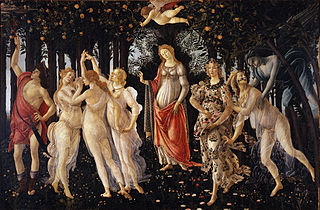
Primavera by Botticelli (c. 1482)
 Chapter 13 Opposite the House of Sculptures
Chapter 13 Opposite the House of SculpturesNote: the numbers refer to the sections within the chapter
13. "One writ with me in sour misfortune's book," as Shakespeare says.
The words are spoken by Romeo in his last speech (act 5, scene 3, line 82). Pasternak quotes from his own translation, made during the early years of World War II. (Pevear)
15. renamed the Rosa Luxemburg Institute
Rosa Luxemburg (Rosalia Luxemburg, Polish: Róża Luksemburg; 5 March 1871,[1] Zamość, Vistula Land, Russia – 15 January 1919, Berlin,Germany) was a Marxist theorist, philosopher, economist and activist of Polish Jewish descent who became a naturalized German citizen. She was successively a member of the Social Democracy of the Kingdom of Poland and Lithuania (SDKPiL), the Social Democratic Party of Germany (SPD), the Independent Social Democratic Party (USPD), and the Communist Party of Germany (KPD).
In 1915, after the SPD supported German involvement in World War I, she and Karl Liebknecht co-founded the anti-war Spartakusbund (Spartacist League) which eventually became the Communist Party of Germany (KPD). During the German Revolution she founded the Die Rote Fahne (The Red Flag), the central organ of the Spartacist movement.
She regarded the Spartacist uprising as a blunder,[2] but supported it after Liebknecht ordered it without her knowledge. When the revolt was crushed by the social democrat government and the Freikorps (World War I veterans who banded together into right-wing paramilitary groups), Luxemburg, Liebknecht and some of their supporters were captured and murdered. Luxemburg was shot and her body thrown in the Landwehr Canal in Berlin. After their deaths, Luxemburg and Karl Liebknecht became martyrs for Marxists. According to the Federal Office for the Protection of the Constitution, commemoration of Rosa Luxemburg and Karl Liebknecht continues to play an important role among the German far-left.[3]
http://en.wikipedia.org/wiki/Rosa_Lux...

Luxemburg speaking to a crowd in 1907.
17. "Idealism, mysticism, Goethe's Naturaphilosophie, neo-Schellingism"
Goethe, like Schelling, sought to establish a universal order of metaphysical as well as pragmatic validity.(Pevear)
"‘The Red Sea is the likeness of the virgin bride"
The quotation comes from the Dogmatik (Hymn to the Mother of God) sung at vespers. The earlier references are to the Old Testament books of Exodus, Daniel (see part 8, note 8), and Jonah.
(Pevear)
"So that Adam should be made God."
The quotataion comes from versee sung at the vespers of the Annunciation. The essential notion that "god became man so that man could become God" is attributed to several early church fathers, among them St. Irenaeus of Lyons and St. Athanasius of Alexandria. (Pevear)
Christ and Mary Magdalene ... God and a woman
This entire passage is based on the traditional identification of Mary Magdalene with the woman taken in adultery in John 8:3–11, and with the unnamed woman who anoints Christ’s feet from an alabaster flask and wipes them with her hair in Matthew 26:6–13, Mark 14:3–9, and Luke 7:36–50. In John’s version of this incident (12:1–8), the woman is Mary, the sister of Martha and Lazarus, who is neither a prostitute nor the Magdalene. Sima mentions this confusion herself. St. Mary of Egypt was indeed a repentant prostitute, but she lived in the fourth century. Sima goes on to quote hymns from the matins of Holy Wednesday, the middle of Holy Week, in which the woman with the alabaster vessel confesses to having been a harlot. The longest of these hymns, from which Sima quotes most fully, known as “The Hymn of Cassia,” is attributed to the Byzantine abbess and hymnographer Cassia (ca. 805–867). Zhivago’s two poems about Mary Magdalene follow the same tradition. (Pevear)

18.
"Several prominent people, professors who belonged to the Cadet Party and Right-wing Socialists, Miliukov, Kizevetter, Kuskov and several others..."
Tonya’s letter mixes real people with the fictional Gromeko family:
S. P. Melgunov (1879–1956) was a historian, a Constitutional Democrat, and an outspoken opponent of the Bolsheviks;
http://en.wikipedia.org/wiki/Sergei_M...
A. A. Kiesewetter was also a historian and a leader of the CD Party; (Pevear)
E. D. Kuskova was a journalist and member of the Committee to Aid the Hungry.
http://en.wikipedia.org/wiki/Yekateri...
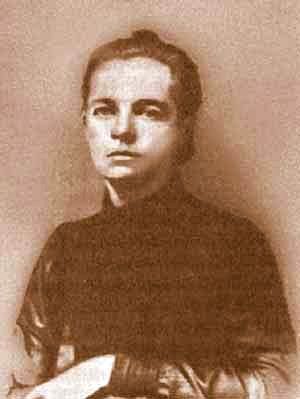
E.D. Kuskova.
Deportation became Lenin’s preferred way of dealing with prominent ideological opponents. In the fall of 1922 he loaded some 160 intellectuals, including the philosophers Nikolai Berdyaev, Semyon Frank, Sergei Bulgakov, Ivan Ilyin, and Fyodor Stepun, on the so-called “Philosophy Steamer” and shipped them to Europe.(Pevear)
 CHAPTER 14 Return to Varykino
CHAPTER 14 Return to VarykinoNote: numbers refer to sections within the chapter
1.
local priests of Themis.
Themis is an ancient Greek Titaness. She is described as "of good counsel", and is the embodiment of divine order, law, and custom. Themis means "divine law" rather than human ordinance, literally "that which is put in place", from the verb títhēmi, "to put".
To the ancient Greeks she was originally the organizer of the "communal affairs of humans, particularly assemblies".[1] Moses Finley remarked of themis, as the word was used by Homer in the 8th century, to evoke the social order of the 10th- and 9th-century Greek Dark Ages:
"Themis is untranslatable. A gift of the gods and a mark of civilized existence, sometimes it means right custom, proper procedure, social order, and sometimes merely the will of the gods (as revealed by an omen, for example) with little of the idea of right.[2]"
http://en.wikipedia.org/wiki/Themis

Themis from the Temple of Nemesis,Rhamnous, Attica, signed by the sculptor Chairestratos, c. 300 BCE
Maritime Province
Primorsky Krai, informally known as Primorye, is a federal subject of Russia. Primorsky means "maritime" in Russian, hence the region is sometimes referred to as Maritime Province or Maritime Territory. Its administrative center is in the city of Vladivostok. It is located in the extreme southeast region of Russia, bordering on China, North Korea, and the Sea of Japan, with its capital at Vladivostok.
Admiral Kolchak had been exiled from Russia during the civil war, and had fled to Omsk with his family. He set up a government and raised an army of counter-revolutionaries, these were the Whites and he began his campaign against the Reds. His general, Kappel, led two of the hugest offensives of the civil war, and these resulted in success. There was, however, a long stalemate. The Red Army finally took Vladivostok and ended the Civil War in October 1922.
http://en.wikipedia.org/wiki/Primorsk...

The cliffs Brat ("Brother") and Sestra ("Sister") in the environs of Nakhodka
http://upload.wikimedia.org/wikipedia...
The wolves stood in a row,
The Eurasian Wolf (Canis lupus lupus), also known as the European, Common,[2] or Forest Wolf,[3] is asubspecies of gray wolf which has the largest range among wolf subspecies and is the most common in Europeand Asia, ranging through Mongolia, China, Russia, Scandinavia, Western Europe and the Himalayan Mountains.
http://en.wikipedia.org/wiki/Eurasian...
[image error]
Russian Federation Coat of Arms
...an official train of the Far Eastern Government ... belongs to our Ministry of Communications.
Operation Trust was a counterintelligence operation of the State Political Directorate (GPU) of the Soviet Union. The operation, which ran from 1921–1926, set up a fake anti-Bolshevik resistance organization, "Monarchist Union of Central Russia", MUCR (Монархическое объединение Центральной России, МОЦР), in order to help the OGPU identify real monarchists and anti-Bolsheviks.
The head of the MUCR was Alexander Yakushev, a former bureaucrat of Ministry of Communications of Imperial Russia, who after the Russian Revolution joined the Narkomat of External Trade when the Soviets had to allow the former specialists (called "spetsy") to take positions of their expertise. This position allowed him to travel abroad and contact Russian emigrants.
http://en.wikipedia.org/wiki/Trust_Op...
14.
Tolstoy ... denied that history was set in motion by Napoleon or any other ruler.
Zhivago is thinking of Tolstoy’s commentaries on the moving forces of history in War and Peace, particularly in the second epilogue to the novel.
 by Leo Tolstoj
by Leo Tolstoj 17. the Shutma
the ravine below Mikulitsyn's house.
those elegant Tverskaia Yamskaia Streets...
Four parallel streets north of the center of Moscow. Tverskaya Street, known as Gorky Street between 1935 and 1990, is the main and probably best-known radial street of Moscow, Russia. The street runs from the central Manege Square north-west in the direction of Saint Petersburg and terminates at the Garden Ring, giving its name to Tverskoy District. The route continues further as First Tverskaya-Yamskaya Street,Leningradsky Prospekt and Leningradskoye Shosse.
http://en.wikipedia.org/wiki/Tverskay...

Tverskaya Street in the 19th century
"... Russian exiles starting with Herzen..."
Alexander Ivanovich Herzen was a Russianpro-Western writer and thinker known as the "father of Russian socialism", and one of the main fathers of agrarian populism (being an ideological ancestor of the Narodniki, Socialist-Revolutionaries, Trudoviks and the agrarian American Populist Party). He is held responsible for creating a political climate leading to the emancipation of the serfs in 1861. His autobiography My Past and Thoughts, written with grace, energy, and ease, is often considered the best specimen of that genre in Russian literature. He also published the important social novel Who is to Blame? (1845–46).
http://en.wikipedia.org/wiki/Alexande...

Alexander Herzen
"... Lenin, who fell upon the old world as the personified retribution for its misdeeds.
The Red Terror
The Red Terror was presented by the Bolsheviks as a response to White Terror. The stated purpose of the Terror was to eliminate counter-revolutionaries who belonged to former "ruling classes". Martin Latsis, chief of the Ukrainian Cheka, explained in the newspaper Red Terror:
The campaign of mass repressions was officially initiated as retribution for the assassination of Petrograd Cheka leader Moisei Uritsky by Leonid Kannegisser, and attempted assassination of Lenin by Fanni Kaplan on August 30, 1918. While recovering from his wounds, Lenin instructed: "It is necessary - secretly and urgently to prepare the terror" [10] Even before the assassinations, Lenin was sending telegrams "to introduce mass terror" in Nizhny Novgorod in response to a suspected civilian uprising there, and "crush" landowners in Penza who protested, sometimes violently, to requisition of their grain by military detachments:[2]
As the civil war progressed, significant numbers of prisoners, suspects and hostages were executed on the basis of their belonging to the "possessing classes."
On 16 March 1919, all military detachments of the Cheka were combined in a single body, the Troops for the Internal Defense of the Republic, which numbered 200,000 in 1921. These troops policed labor camps, ran the Gulag system, conducted requisitions of food, put down peasant rebellions, riots by workers, and mutinies in the Red Army, which was plagued by desertions [2]
[As] strikes continued. Lenin was concerned about the tense situation regarding workers in the Ural region. On 29 January 1920, he sent a telegram toVladimir Smirnov stating "I am surprised that you are taking the matter so lightly, and are not immediately executing large numbers of strikers for the crime of sabotage".[24]
Orlando Figes argued that the Red Terror was implicit, not so much in Marxism itself, as in the violent conditions of the Russian Revolution. He noted that there were a number of Bolsheviks, led by Lev Kamenev, Nikolai Bukharin and M. S. Olminsky, who criticised the Terror and warned that thanks to "Lenin's violent seizure of power and his rejection of democracy... [t]he Bolsheviks [would be] forced to turn increasingly to terror to silence their political critics and subjugate a society they could not control by other means.".[35] According to Figes, "The Terror erupted from below. It was an integral element of the social revolution from the start. The Bolsheviks encouraged but did not create this mass terror."[36]
http://en.wikipedia.org/wiki/Red_Terror
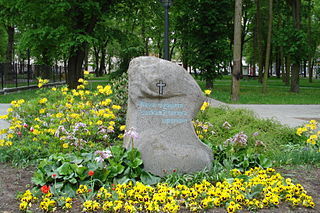
Memorial stone to victims of the red terror in Daugavpils
"... the tinkling of a cymbal, just words."
A phrase from Paul’s first epistle to the Corinthians (13:1): “If I speak in the tongues of men and of angels, but have not love, I am a noisy gong or a clanging cymbal.”
 Anonymous
Anonymous
 Conclusion
Conclusion1. The NEP
The New Economic Policy (NEP) (Novaya Ekonomicheskaya Politika) was an economic policy proposed by Vladimir Lenin, who called it state capitalism. Allowing some private ventures, the NEP allowed small animal businesses or smoke shops, for instance, to reopen for private profit while the state continued to control banks, foreign trade, and large industries.[1] It was officially decided in the course of the 10th Congress of the All-Russian Communist Party. It was promulgated by decree on 21 March 1921, "On the Replacement of Prodrazvyorstka by Prodnalog" (i.e., on the replacement of foodstuffs requisitions by fixed foodstuffs tax). In essence, the decree required the farmers to give the government a specified amount of raw agricultural product as a tax in kind.[2] Further decrees refined the policy and expanded it to include some industries. The New Economic Policy was replaced by Stalin's First Five-Year Plan in 1928.
http://en.wikipedia.org/wiki/New_Econ...
4. St. Basil's Eve On the feast day of St. Basil, which in the Byzantine calendar occurs on the first of January (for those churches which follow the traditional Julian Calendar, January 1 falls on January 14 of the Gregorian Calendar).
http://en.wikipedia.org/wiki/Liturgy_...
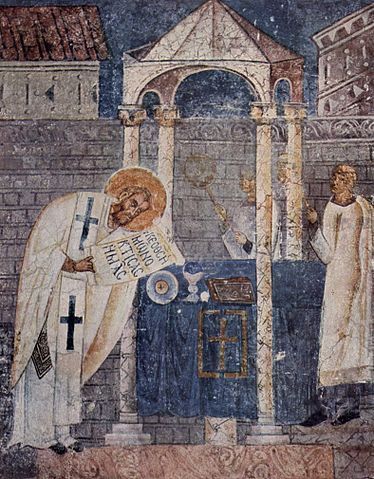
Basil the Great
7. Tikhon
During the Russian Civil War the Patriarch was widely seen as anti-Bolshevik and many members of the Orthodox clergy were jailed or executed by the new regime. Tikhon openly condemned the killings of the tsar's family in 1918, and protested against violent attacks by the Bolsheviks on the Church.
During the famine in 1922 the Patriarch was accused of being a saboteur by the Communist government, for which he was imprisoned from April 1922 until June 1923 in Donskoy Monastery. Among acts incriminated to him was his public protest against nationalization of the property of the Church. This caused international resonance and was a subject of several notes to the Soviet government.
Under pressure from the authorities, Patriarch Tikhon issued several messages to the believers in which he stated in part that he was "no longer an enemy to the Soviet power". Textual analysis of these messages shows considerable similarity with a number of documents exchanged in the Politburo on the "Tikhon's Affair". Despite his declaration of loyalty, he continued to enjoy the trust of the Orthodox community in Russia. In 1923 Patriarch Tikhon was "deposed" by a Soviet-sponsored[1] council of the so-called Living Church, which decreed that he was "henceforth a simple citizen—Vasily Bellavin." This deposition has never been recognized as an act of the Russian Orthodox Church, and is therefore considered invalid by authorities of both the Russian Orthodox Church, and the Russian Federation.
When the sewerage system under the hastily erected first Mausoleum of Lenin was damaged and a leak occurred, Tikhon remarked, "The balm accords with the relics." The phrase was widely quoted.
In 1924 the Patriarch fell ill and was hospitalized. On 5 April 1925, he served his last Divine Liturgy, and died two days later, 25 March (O.S.)/7 April, the Feast of the Annunciation. He was buried on 12 April in the winter church of Donskoy Monastery in Moscow. From the time of his death, he was widely considered a martyr or confessor for the faith.
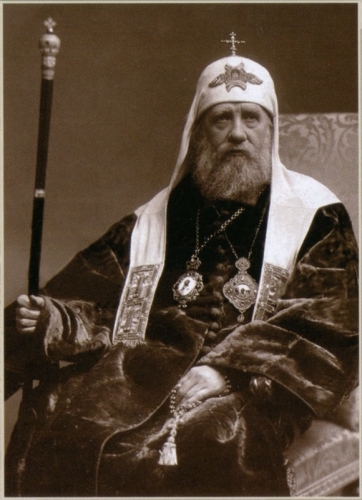
Saint Tikhon of Moscow
13. The custom of cremation of the dead...
Cremation, which was not an Orthodox practice, was introduced after the revolution. But Zhivago’s acquaintances follow the old practice of laying out the body at home, in an open coffin on a table, surrounded by flowers.
Mary Magdalene did not recognize Jesus risen from the grave, "supposing him to be the gardener ..."
John 20: 1-18
 Anonymous
Anonymous14.
"And you shall kiss me with a last kiss."
From a hymn sung near the end of the Orthodox burial service, which speaks in the voice of the dead person: “Come, all you who loved me, and kiss me with the last kiss. For nevermore shall I walk or talk with you.” (Pevear)
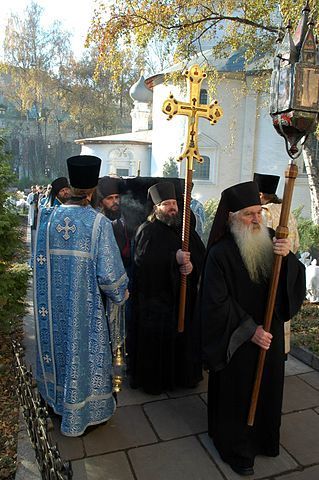
Cross procession during the burial of an Orthodox priest in Sretensky Monastery (Moscow).
"...to the lament over the grave which is the hymn, Alleluia."
Words of a hymn from the funeral or memorial service: “For dust thou art, and unto dust shalt thou return. Whither we mortals all shall go, making our funeral dirge the song: Alleluia.” (Pevear)
 16- Epilogue
16- Epilogue1. Kursk bulge
The Battle of Kursk took place when German and Soviet forces confronted each other on the Eastern Front during World War II in the vicinity of the city of Kursk, (450 kilometers / 280 miles south of Moscow) in the Soviet Union in July and August 1943. It remains both the largest series of armored clashes, including the Battle of Prokhorovka, and the costliest single day of aerial warfare in history. It was the final strategic offensive the Germans were able to mount in the east. The resulting decisive Soviet victory gave the Red Army the strategic initiative for the rest of the war. The city of Orel was liberated on August 5 of that year.
http://en.wikipedia.org/wiki/Battle_o...

To the West! calls this Soviet poster, while a Soviet soldier destroys the German sign, To the East!
2. Yezov period
Nikolai Ivanovich Yezhov or Ezhov May 1, 1895 – February 4, 1940) was the senior figure in the NKVD (the Soviet secret police) under Joseph Stalin during the period of the Great Purge. His reign is sometimes known as the "Yezhovshchina", "the Yezhov era", a term that began to be used during the de-Stalinization campaign of the 1950s. During the beginning of World War II his status within the USSR became that of a political unperson.[3]
http://en.wikipedia.org/wiki/Nikolai_...
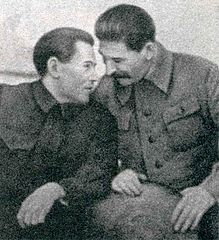
Photo of Yezhov conferring with Stalin.
"I never saw her again"
The story of Christina Orletsova is based on the life of an actual girl named Zoya Kosmodemyanskaya, an account of which was preserved in Pasternak’s archive.
Zoya Anatolyevna Kosmodemyanskaya, alternatively Romanised as Kosmodem'yanskaya (September 13, 1923 – November 29, 1941) was a Soviet partisan,[1] and a Hero of the Soviet Union (awarded posthumously).[2] She was one of the most revered heroes of the Soviet Union.[3]
http://en.wikipedia.org/wiki/Zoya_Kos...
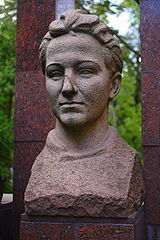
Zoya Kosmodemyanskaya
4. "Blok says somewhere, 'We the children of Russia's terrible years.' "
The poem, written on September 8, 1914, at the outbreak of World War I, begins: “Those born in obscure times / Do not remember their path. / We, the children of Russia’s terrible years / Are unable to forget anything.” (Pevear)
 Zemstvo
Zemstvo From A People's Tragedy: The Russian Revolution 1891-1924 by Orlando Figes

 Orlando Figes
Orlando FigesIn 1861 the serfs were de jure (if not de facto) emancipated from their landlord's tyranny and given some of the rights of a citizen. They were still tied to the village commune, which enforced the old patriarchal order, deprived of the right to own the land individually, and remained legally inferior to the nobles and other estates. But the groundwork had at least been laid for the development of peasant agriculture. A second major reform of 1864 saw the establishment of local assemblies of self-government, called the zemstvos, in mot Russian provinces. To preserve the domination of the landed nobles, they were set up only at the provincial and district level, below that, at the volost and the village, the peasant communes were left to rule themselves with only minimal supervision by the gentry. (page 39)
Initially, in the 1860s, the regime left the affairs of the country districts in the hands of the local nobles. They dominated the zemstvo assemblies and accounted for nearly three-quarters of the provincial zemstvo boards.
The landed nobility was in severe economic decline during the years of agricultural depression in the late nineteenth century and was turning to the zemstvos to defend its local agrarian interests against the centralizing and industrializing bureaucracy of St. Petersburg. In the years leading up to the 1905 the resistance was expressed in mainly liberal terms; it was seen as the defense of 'provincial society,' a term which was now used for the first time and consciously broadened to include the interests of the peasantry. This liberated zemstvo movement culminated in the political demand for more autonomy for the local government, for a national parliament and a constitution. Here was the start of the revolution; not in the socialist or labour movements but - as in France in the 1780s - in the aspirations of the regime's oldest ally, the provincial nobility. (pg 47)
The liberal monarchist Prince Lvov became a leading member of the Tula zemstvo during the early 1890s and first post-imperial prime minister of Russia, from 15 March to 21 July 1917. http://en.wikipedia.org/wiki/Georgy_Lvov
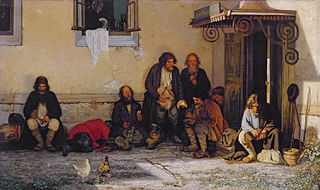
Zemstvo having a dinner by Grigoriy Myasoyedov. 1872.
During WWI the Zemstvos provided food and medical relief but they then also reasserted their own demands for autonomy and reform.
The Zemstvo had a Red Cross unit of their own with no connection to other Red Cross organizations (3 others). Theirs was based on voluntary subscriptions. The Zemstvo Red Cross confined its work to hospitals, of which it had a number, all situated along the railroad lines (together they contain 2000 beds) and to "Etap stations." These were feeding and resting places for soldiers. Meals were served to all who needed nourishment.
http://books.google.com/books?id=KPzL...
Teachers, doctors, statisticians lead the demands but landowners added their voice because they thought part of the blame for the shortages was due to government failure to protect the farmers. They were worried that destitute peasants would seize their estates. They now rallied behind the zemstvos to defend the agrarian interests of provincial society against the industrializing bureaucracy of St. Petersburg. The zemstvo gentry joined the Whites and (according to Figes) that led to their defeat as both the Bolsheviks and the peasants continued to support land reform. (pg 52)

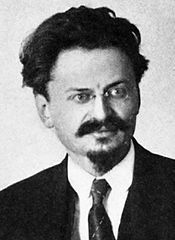 Leon Trotsky
Leon TrotskyIt has been suggested that Leon Trotsky was a very loose "model" for Strelnikov. There are similarities:
From: http://www.historylearningsite.co.uk/...
Leon Trotsky was born in 1879 at Ianovka in the Ukraine. His parents were Jews and his original surname was Bronstein. Trotsky was a highly intelligent pupil at school though his intellectual arrogance meant that he had few good friends. He got involved in revolutionary groups while still a teenager and was arrested at the age of 19 for writing and printing revolutionary literature and for helping to organise a strike. Trotsky was kept in solitary confinement for three months and then sent to Siberia. He escaped from prison and fled to London where he joined up with Lenin and other revolutionaries in October 1902. In 1905 Trotsky returned to St Petersburg to help organise the city's first soviet. He was once again arrested and sent to Siberia. He escaped once again and spent a number of years in Western Europe and America.
Trotsky played no part in the March Revolution but returned to Russia from America in May 1917 when the Provisional Government was in power. His organisational skills were quickly recognised and Trotsky was chairman of the powerful Petrograd Soviet by the time of the November Revolution. During the actual revolution, Trotsky organised the Red Guards in what was essentially a bloodless takeover of Petrograd. Lenin charged Trotsky with getting Russia out of World War One and the end result was the very harsh Treaty of Brest-Litovsk.
Though the Bolsheviks controlled Petrograd and Moscow and the land in between, they had no power over the rest of the vast country. many groups existed that opposed the Bolsheviks and a civil war was inevitable. Lenin made Trotsky Commissar of War and gave him full control in how the newly formed Red Army went about its work. While Lenin did the work required for the area that the Bolsheviks controlled, Trotsky set about eradicating those who wanted the destroy the Bolsheviks. Trotsky, untrained as a military commander, excelled in his job. Though the Whites were hopelessly disunited, there were numerous armies that had to be defeated. The Red Army was successful and the leadership provided by Trotsky cannot be undervalued. His philosophy was simple. If a commander in the field failed, he paid the price. If a whole unit was at fault, they paid the price. Such draconian policies helped to instill into the Red Army the very discipline that was fundamentally missing in the various White armies. Trotsky frequently visited his troops at the front in his famous armoured train so he could never be seen as a military commander who stayed away from the fighting.
"The flabby, panicky mob would be transformed in two or three weeks into an efficient fighting force. What was needed for this? It needed good commanders, a few dozen experienced fighters, a dozen or so Communists ready to make any sacrifice, boots for the bare-footed, a bath house, am energetic propaganda campaign, food, underwear, tobacco and matches. The train took care of all this."
Trotsky - describing how the Red Army was created.
"I issue this warning. If any detachment retreats without orders, the first to be shot will be the commissar, the second the commander."
Trotsky issuing orders to frontline troops.
By 1921, the civil war had been won and it was assumed that Trotsky would be the logical successor to Lenin who by now was suffering from ill-health. In fact, Trotsky's success in keeping the revolution alive had made him enemies within the Communist (Bolshevik) Party. Joseph Stalin had acquired a number of seemingly unimportant party positions in his rise to power but when combined, these positions gave him a unique insight into the party - those who would support Stalin and those who disliked Trotsky.
In January 1924, Lenin died and a successor was needed. However, Trotsky's arrogance had won him few friends. His insistence on 'Permanent Revolution' had few supporters while Stalin's belief of 'Socialism in One Country' had far more. From 1923 on, Trotsky had also been experiencing illness in the form of fevers and his strength had been badly affected by this. With few friends and a weakened body, Trotsky was not in a position to defend himself against a man who had quietly and effectively built up a large power base within the party. By 1925, Trotsky was all but alone within the party and Stalin's power was such that by 1927, he felt confident enough to expel Trotsky from the Communist Party and in January 1929, he was expelled from Russia itself.
Few countries in Europe were willing to take on a man who was associated not only with revolution but also, as a result of the revolution's success, associated with the murder of the Romanovs. Trotsky lived for a while in Turkey and France but moved to Mexico where he spent the rest of his life. Trotsky was murdered by a Stalinist agent on August 20th 1940.
Books mentioned in this topic
The Lacuna (other topics)The Complete Prose (other topics)
To the Finland Station (other topics)
To the Finland Station (other topics)
Pasternak's "Dr. Zhivago": A Critical Companion (other topics)
More...
Authors mentioned in this topic
Barbara Kingsolver (other topics)Woody Allen (other topics)
Edmund Wilson (other topics)
Edmund Wilson (other topics)
Edith W. Clowes (other topics)
More...





This is the glossary for Dr. Zhivago. This is not a non spoiler thread so any urls and/or expansive discussion can take place here regarding this book. Additionally, this is the spot to add that additional information that may contain spoilers or any helpful urls, links, etc.
This thread is not to be used for self promotion.